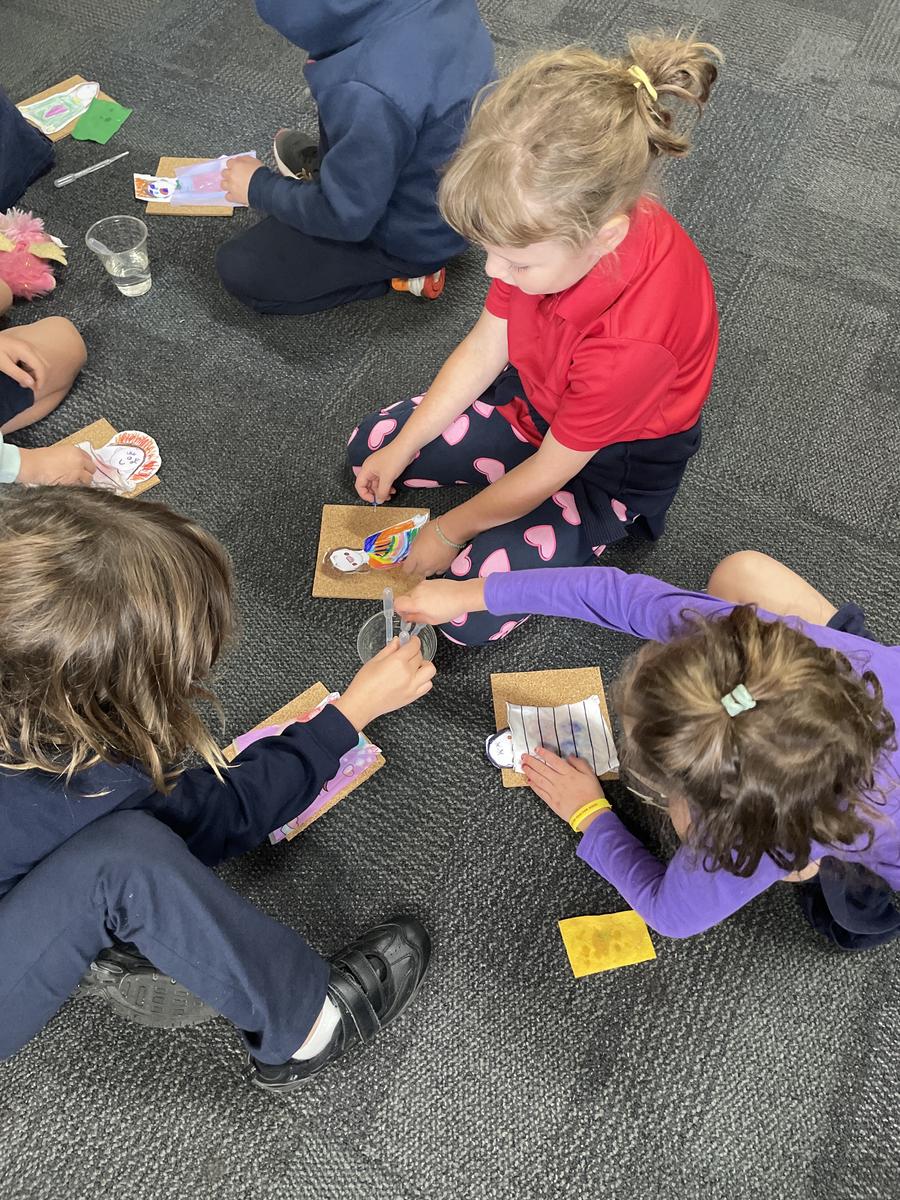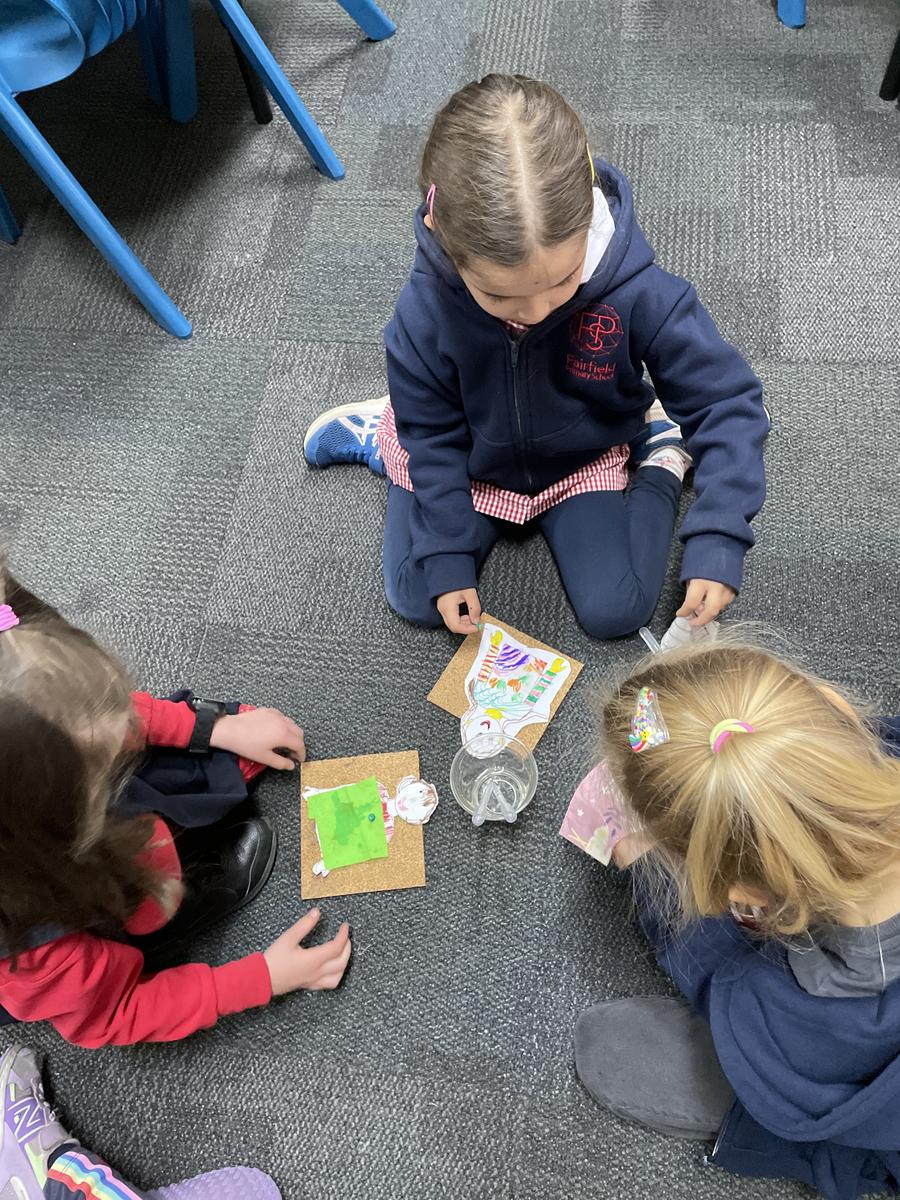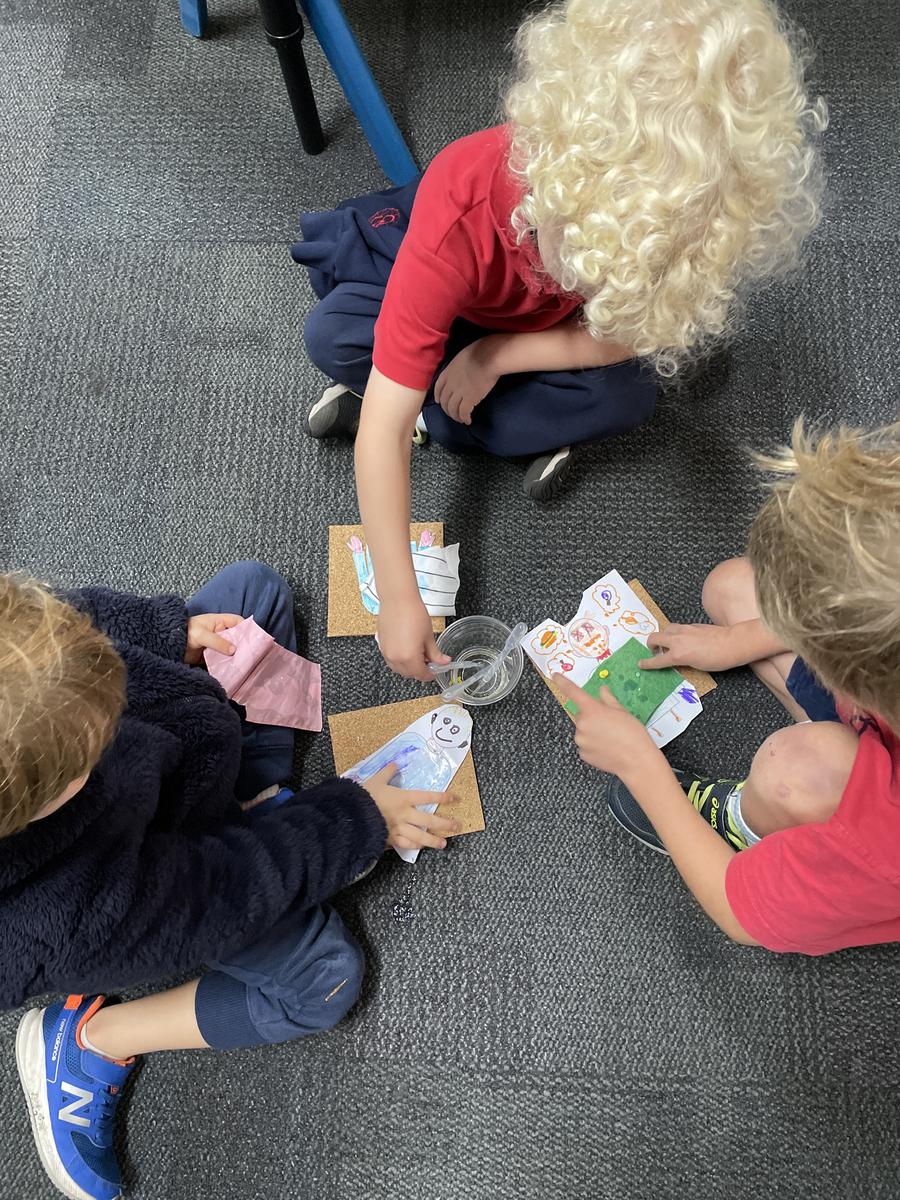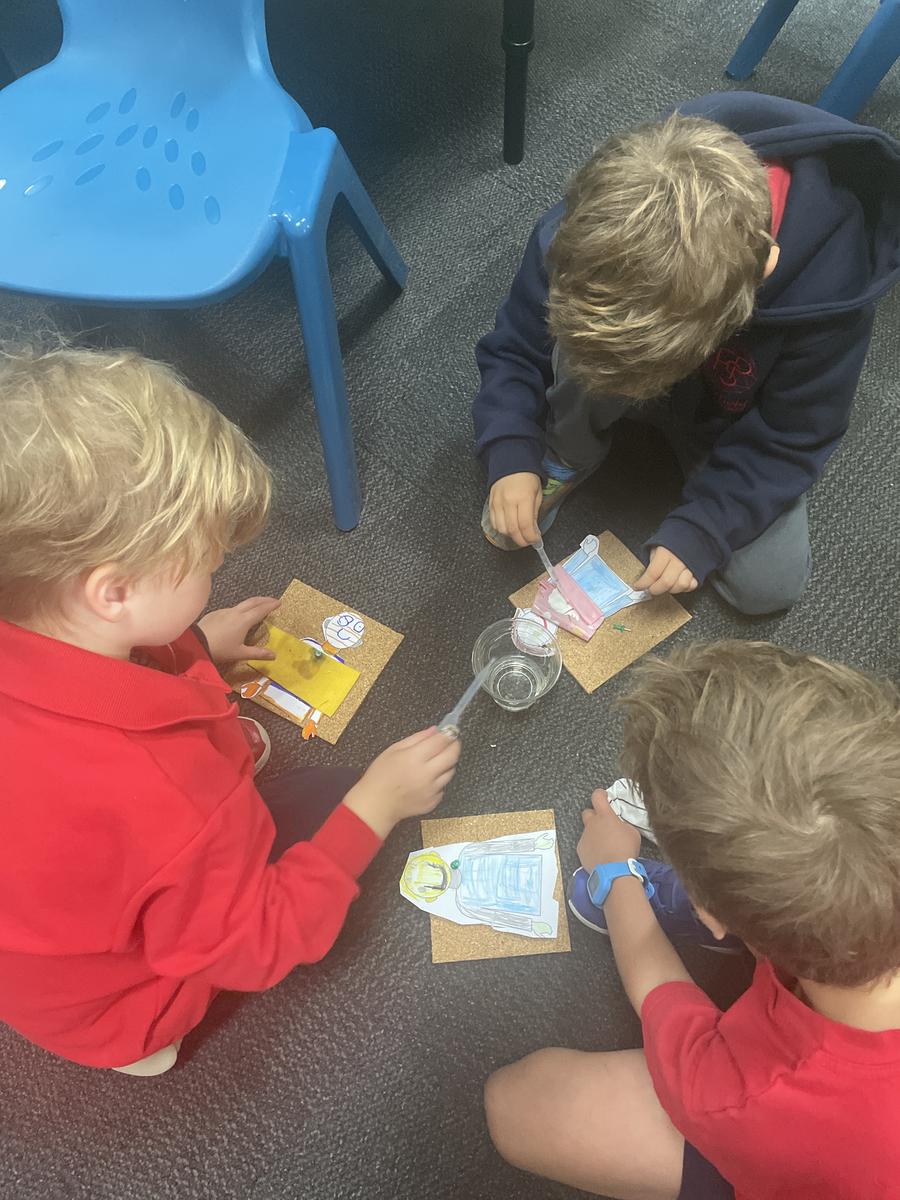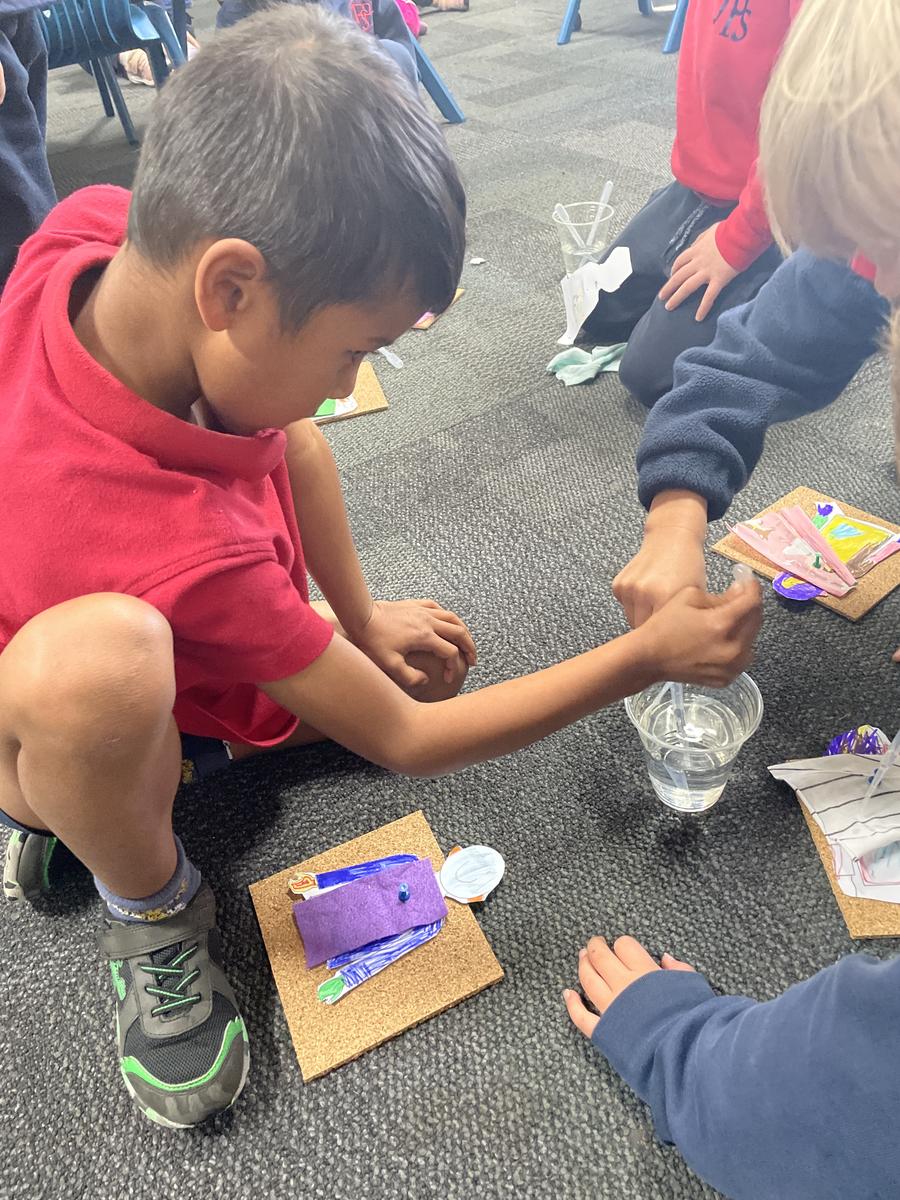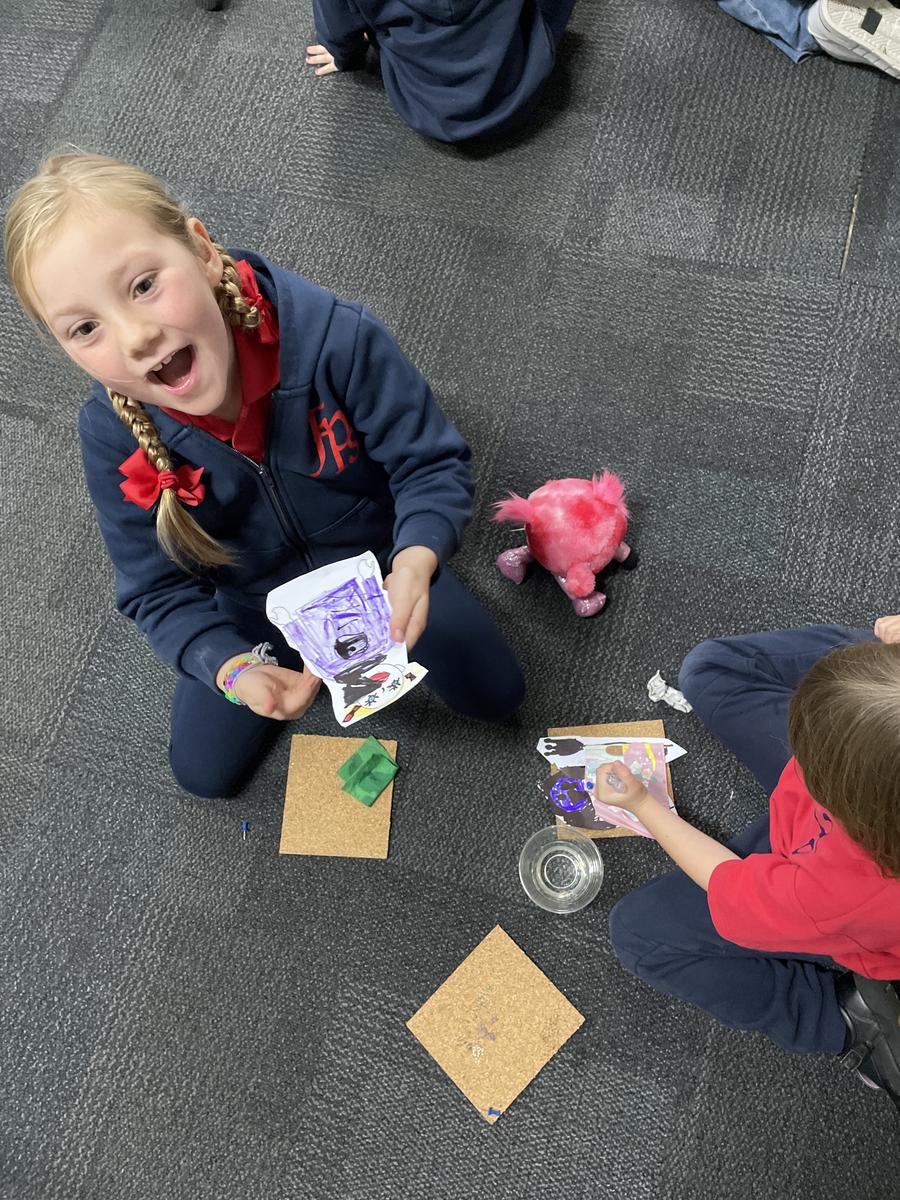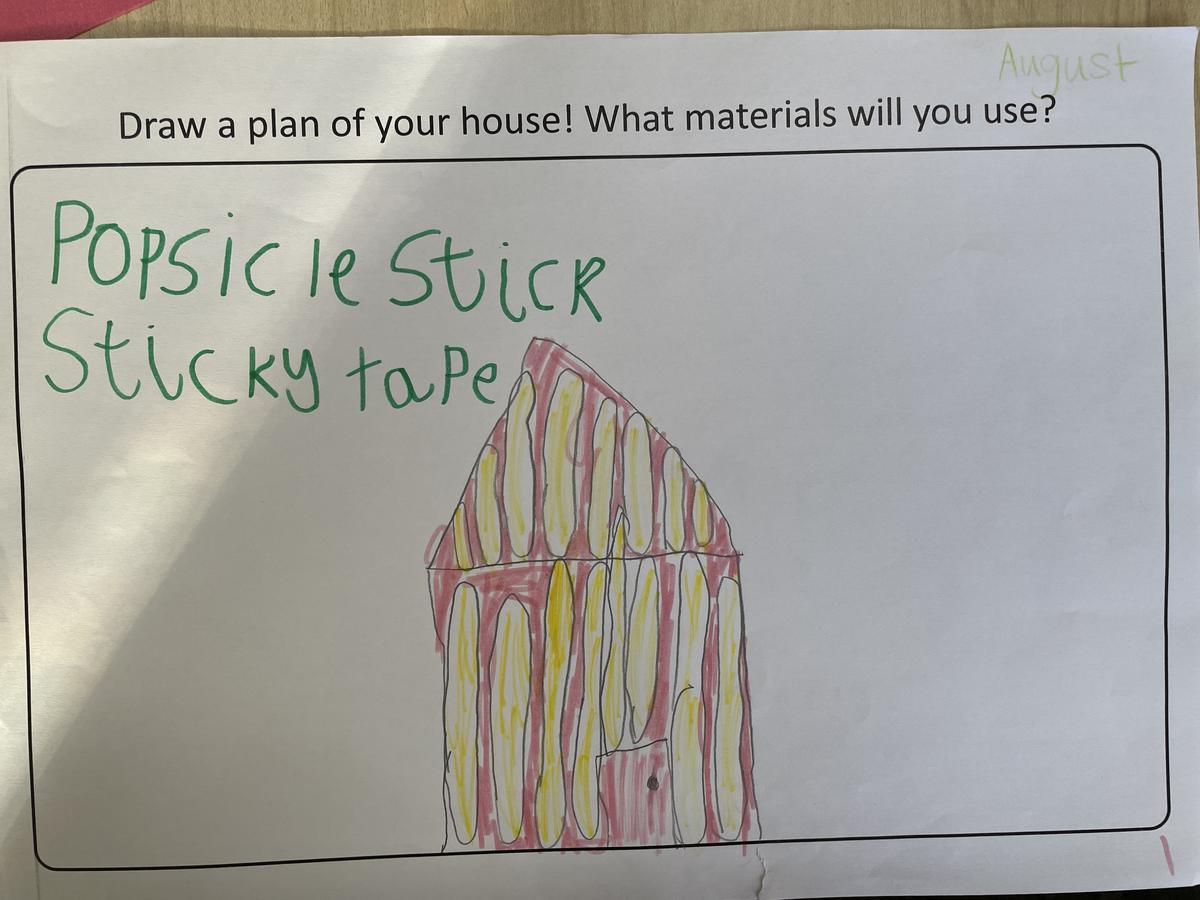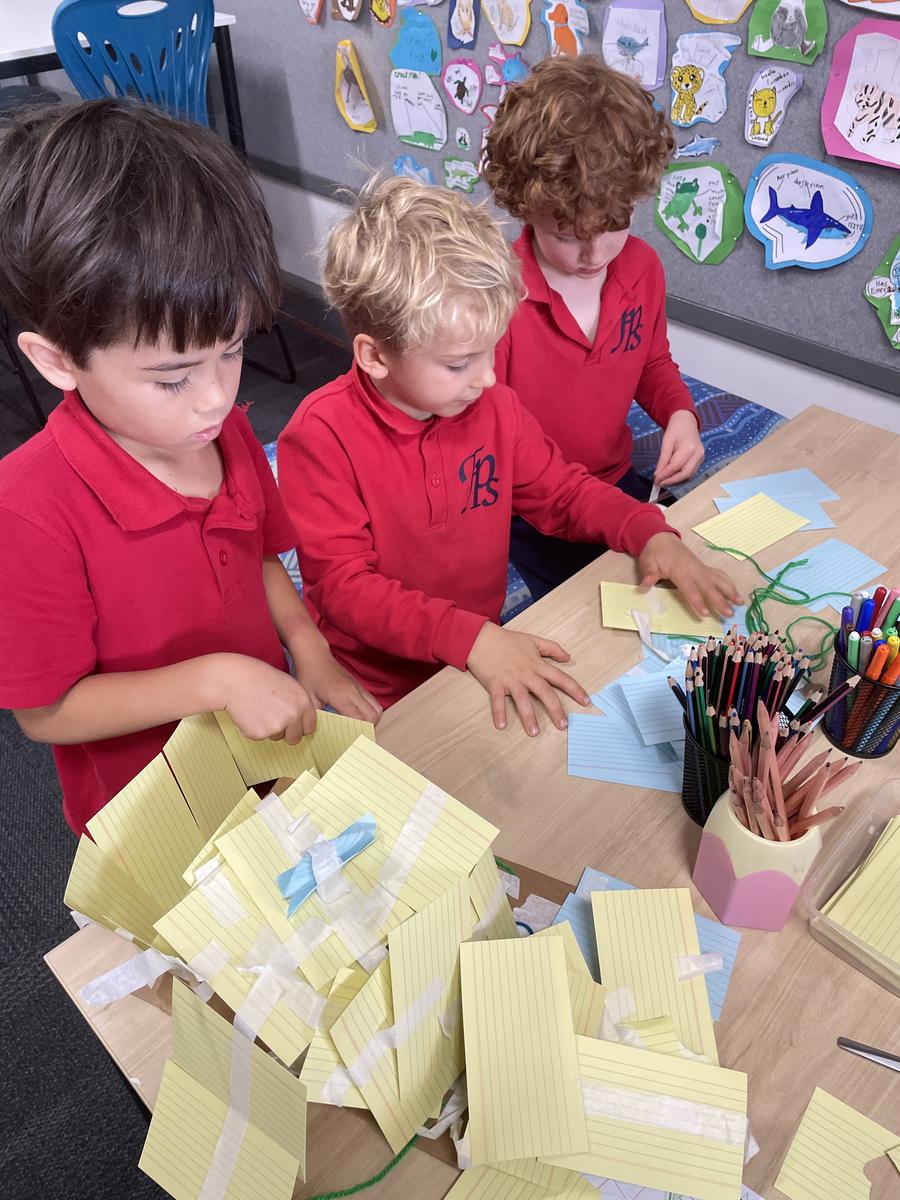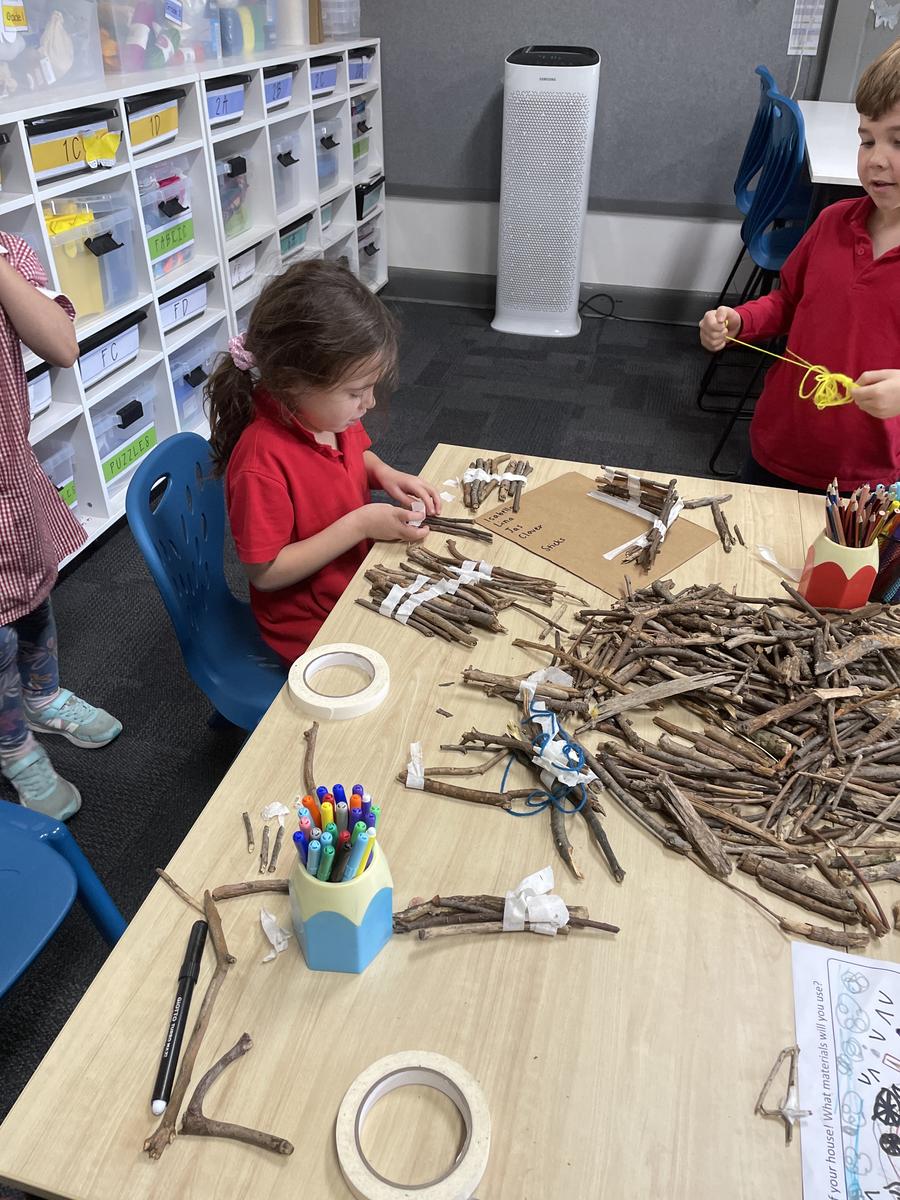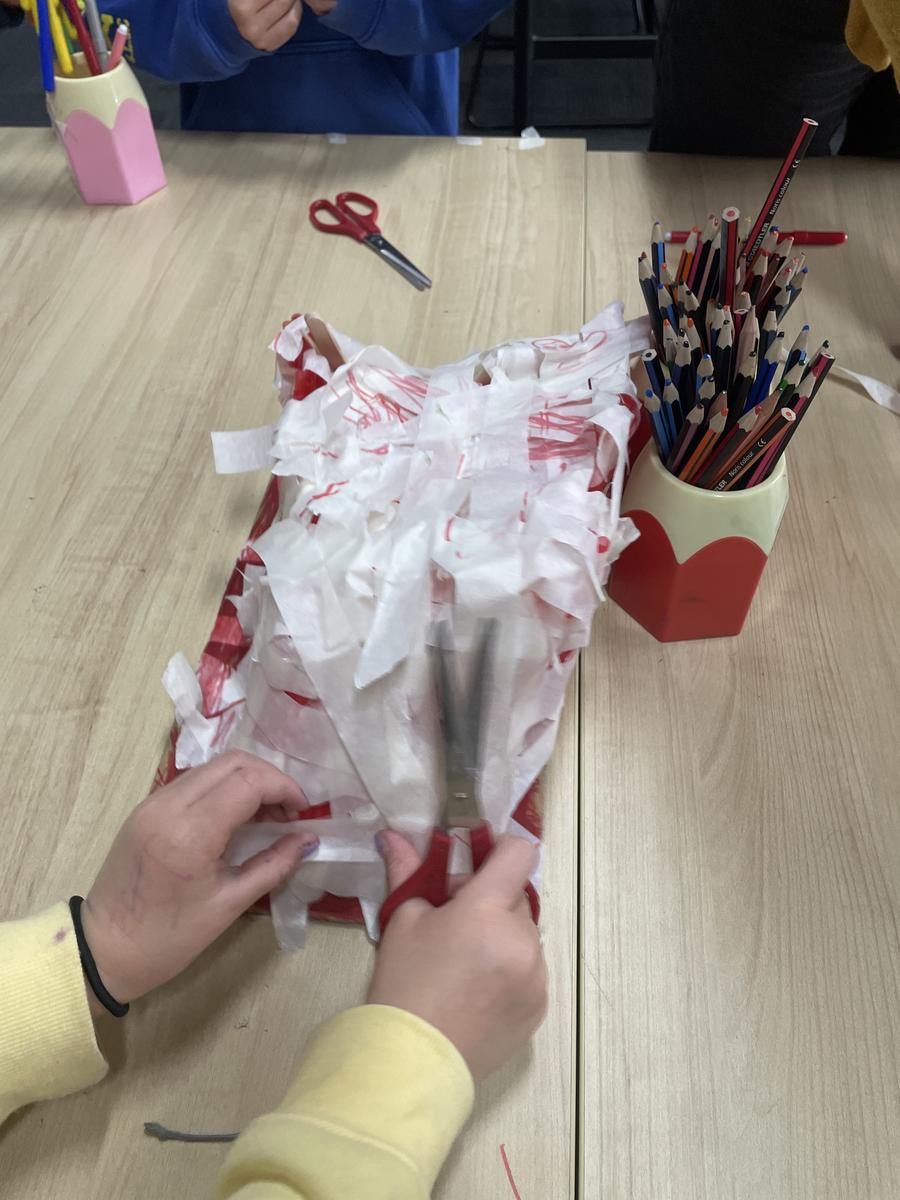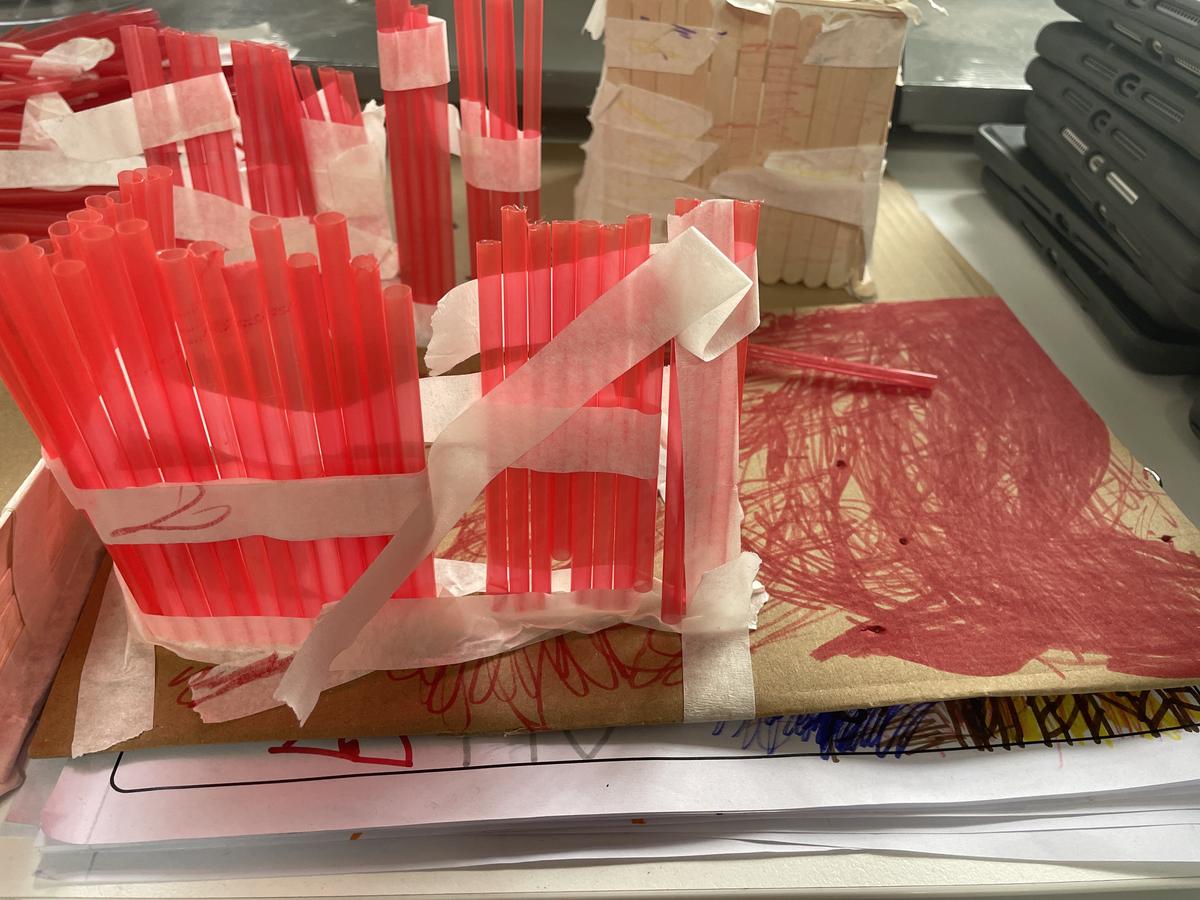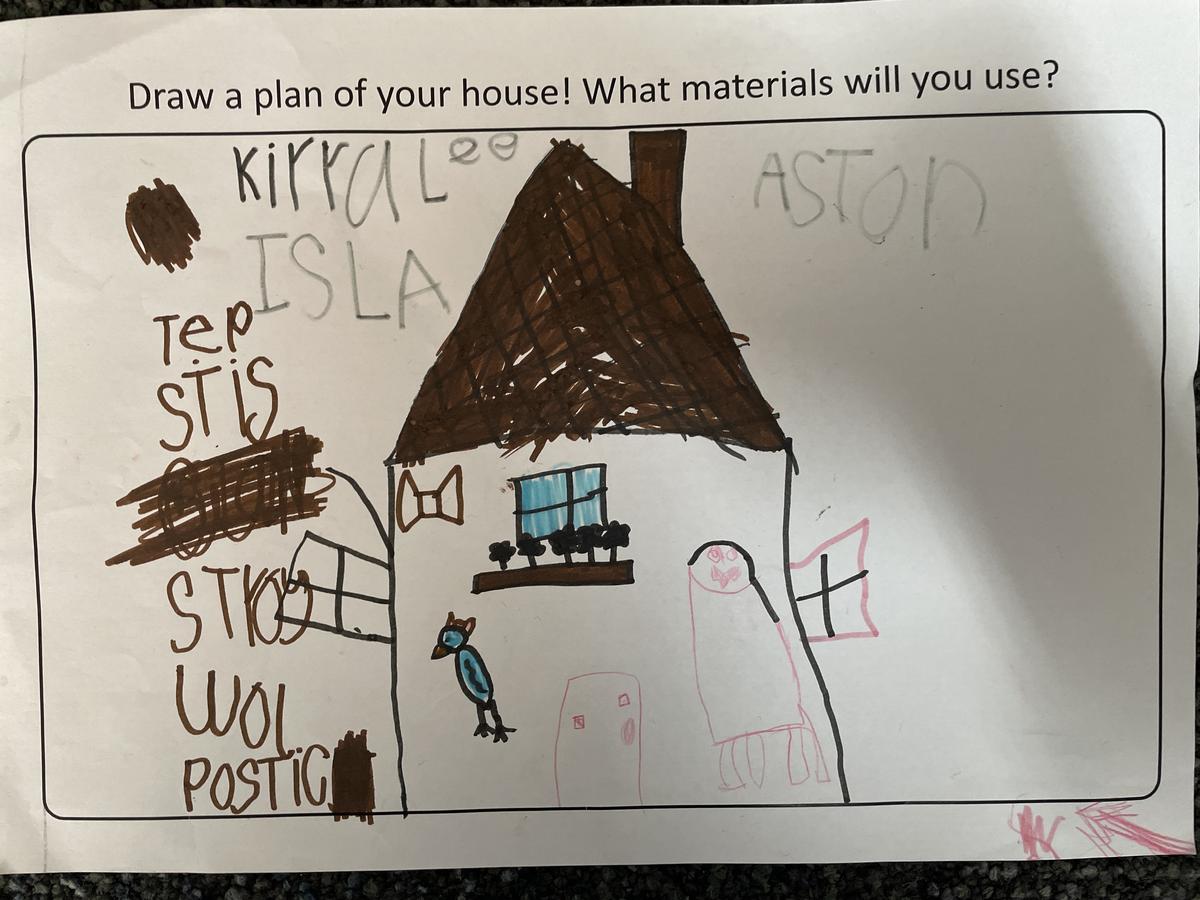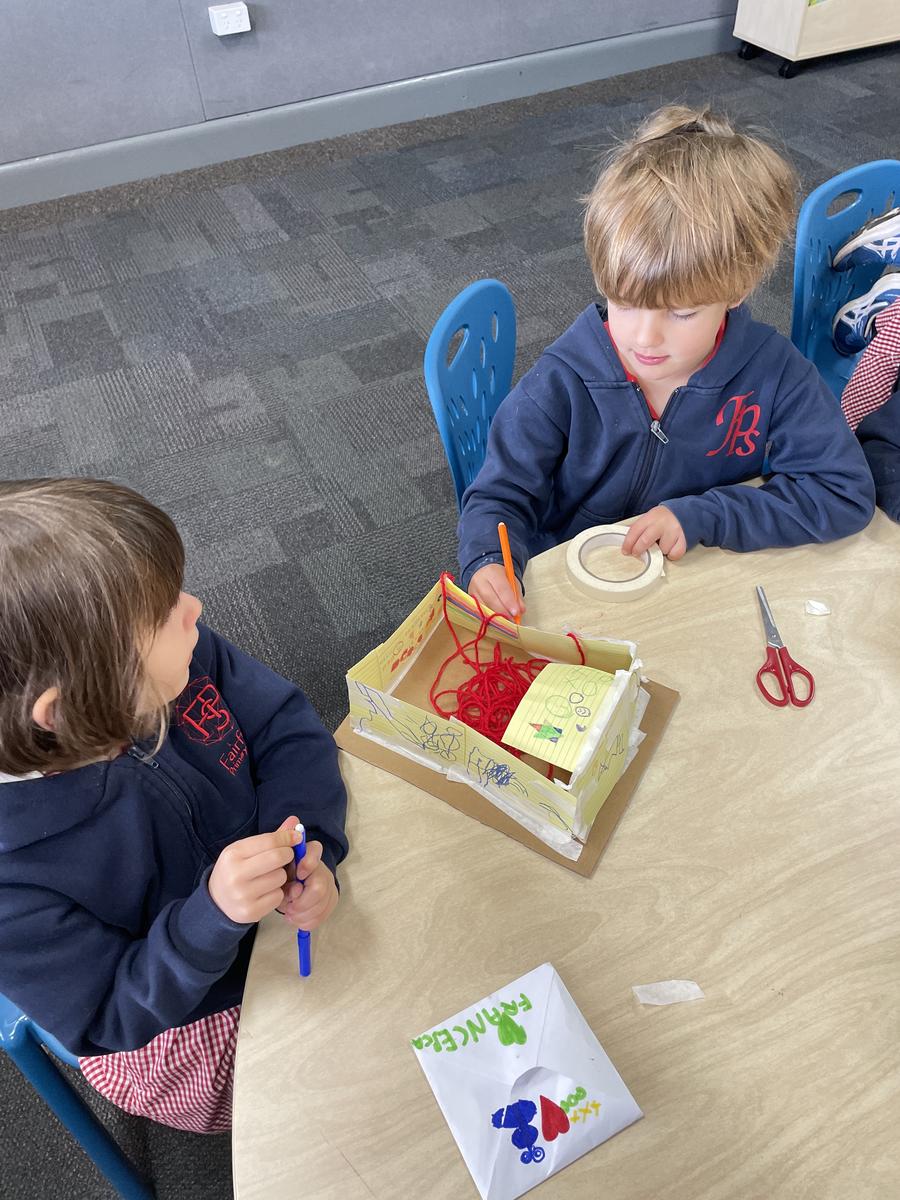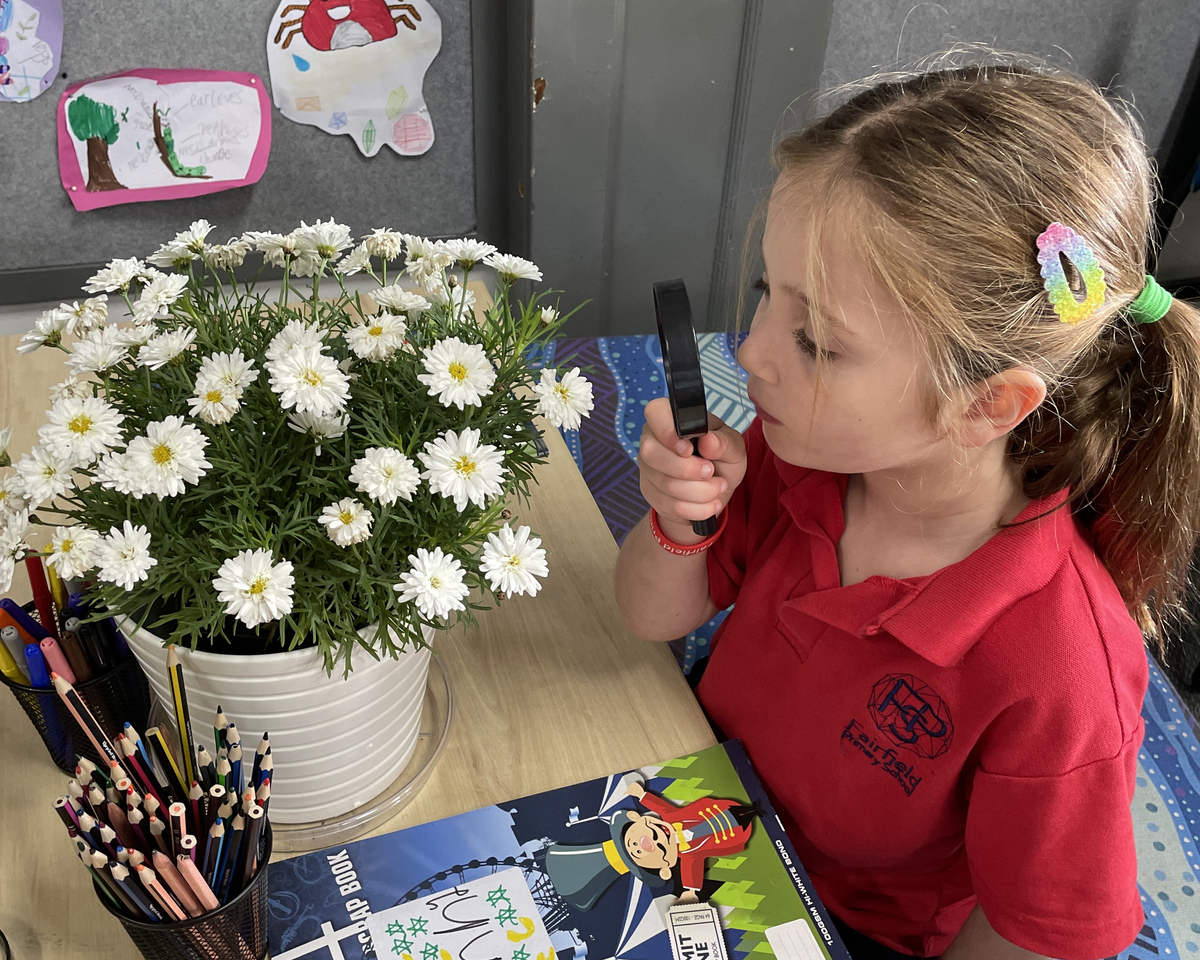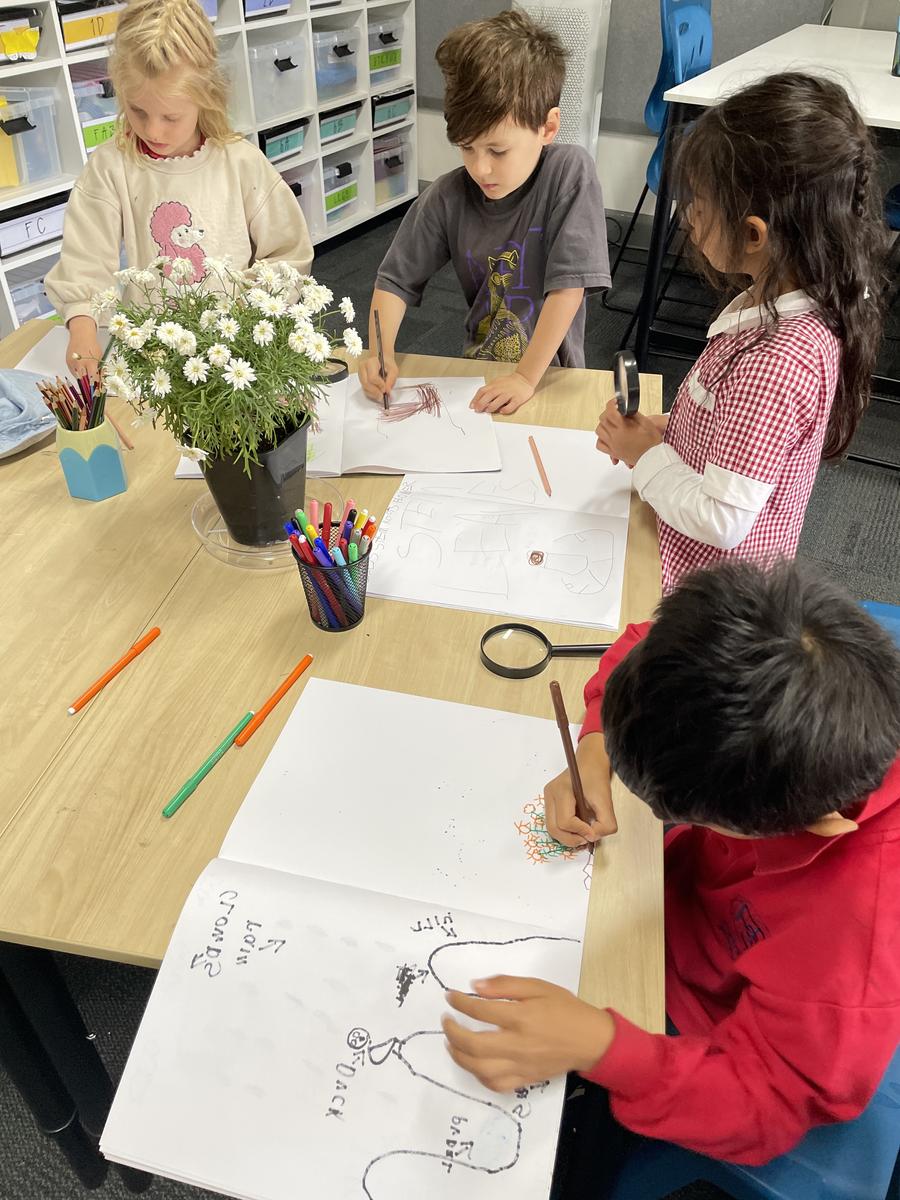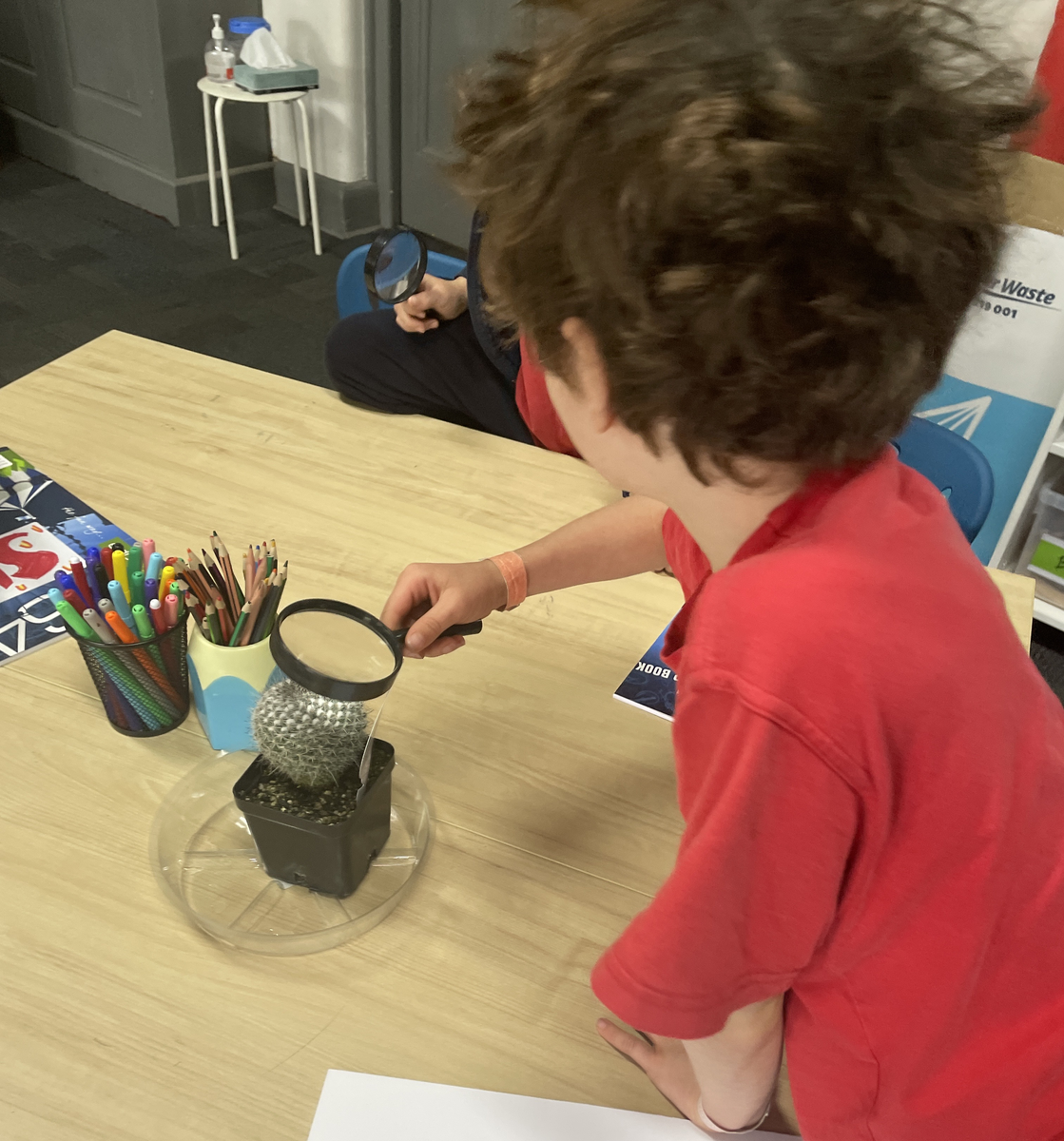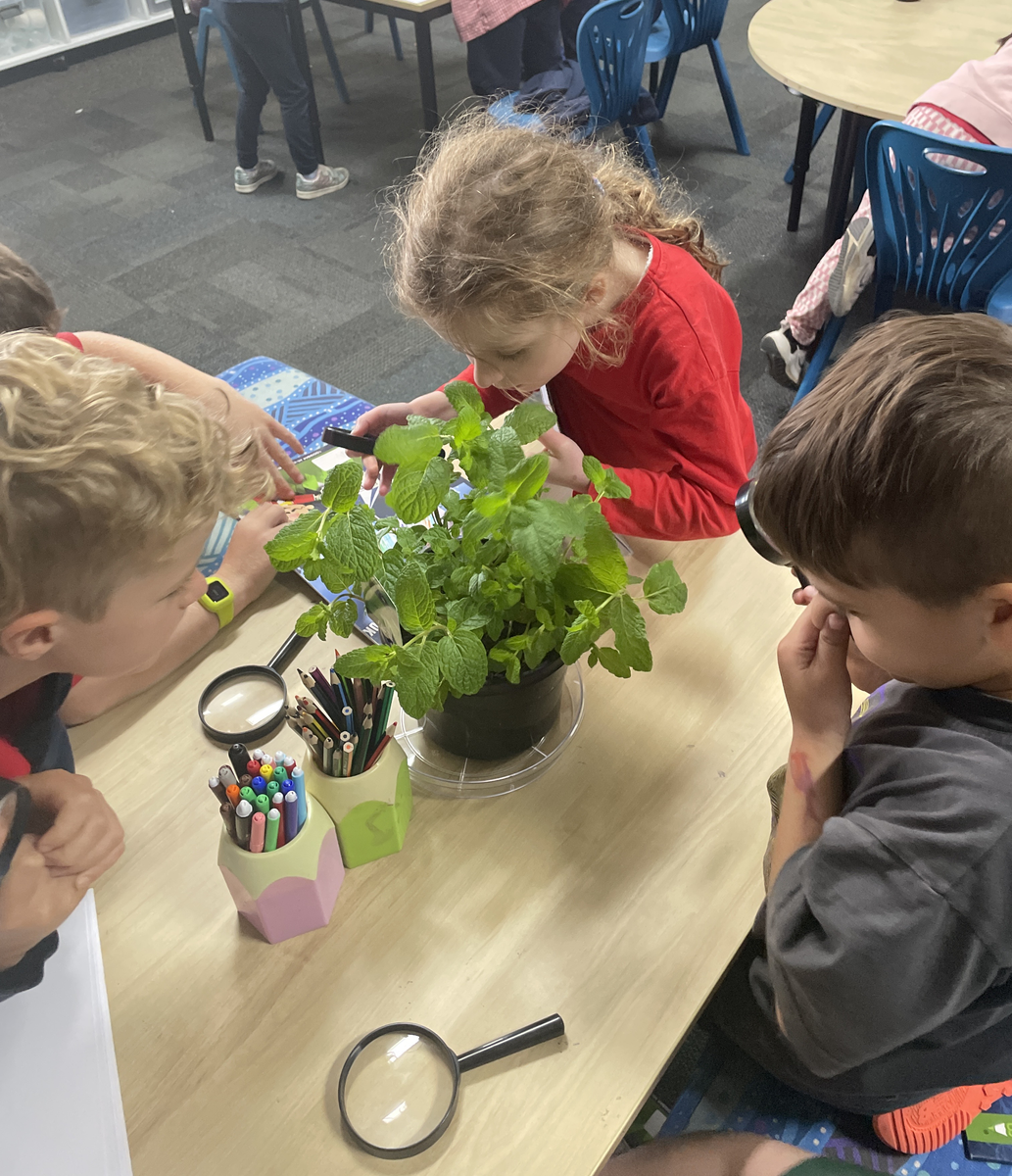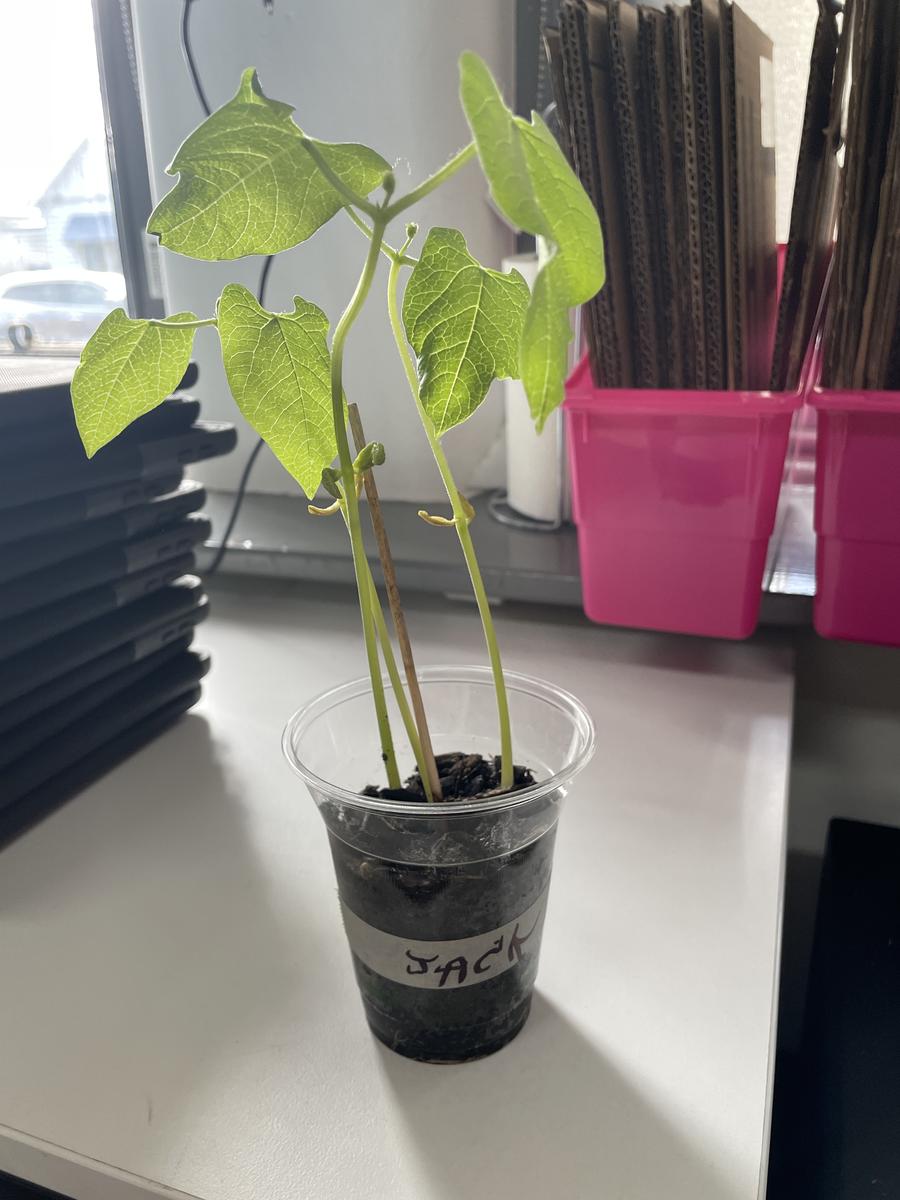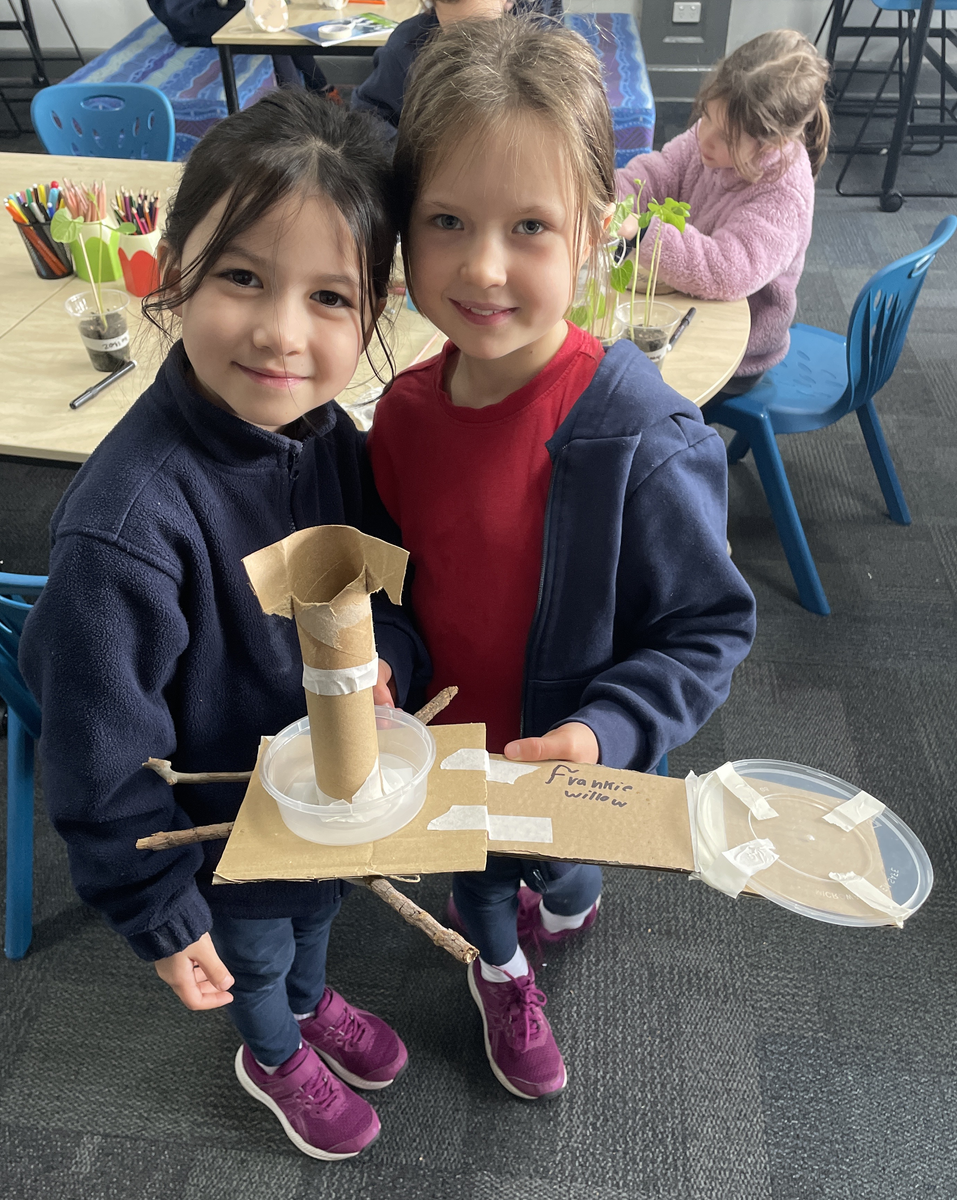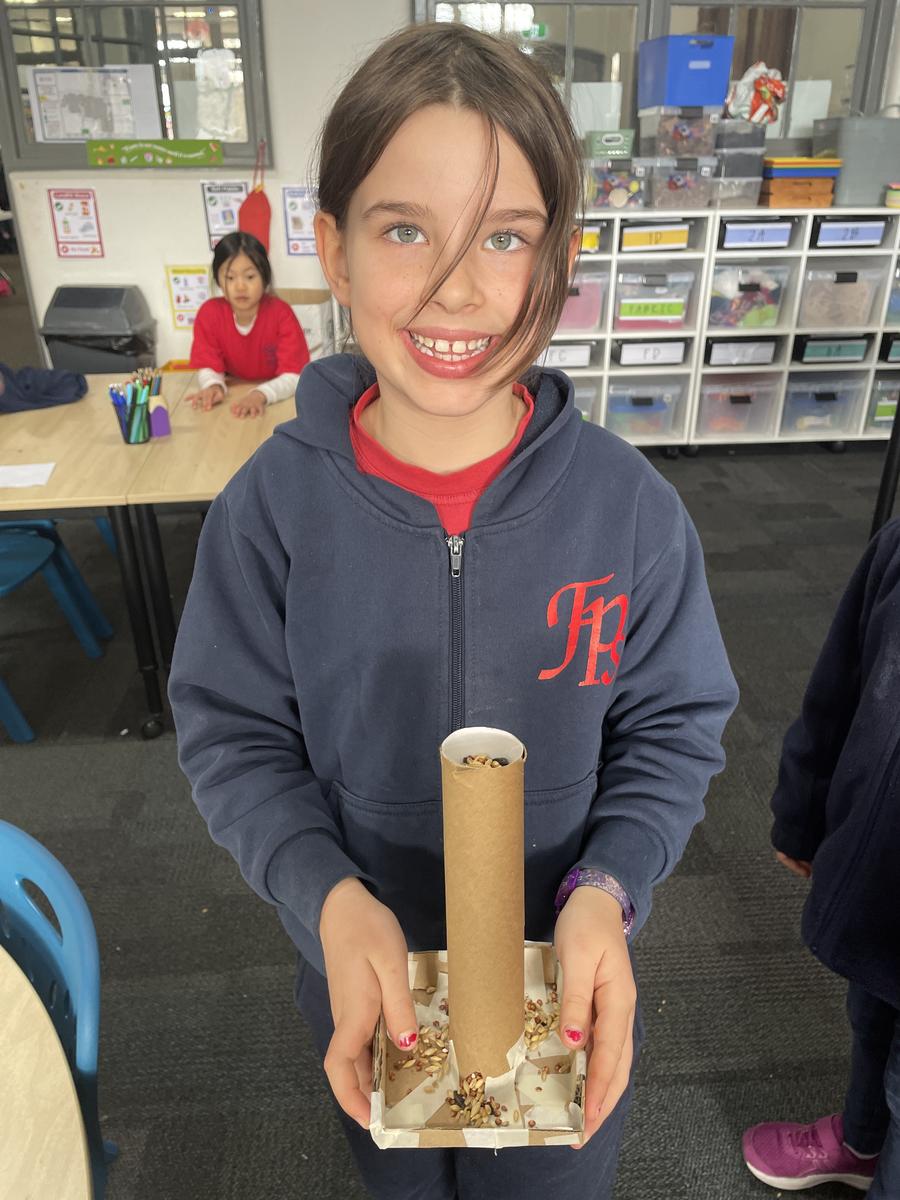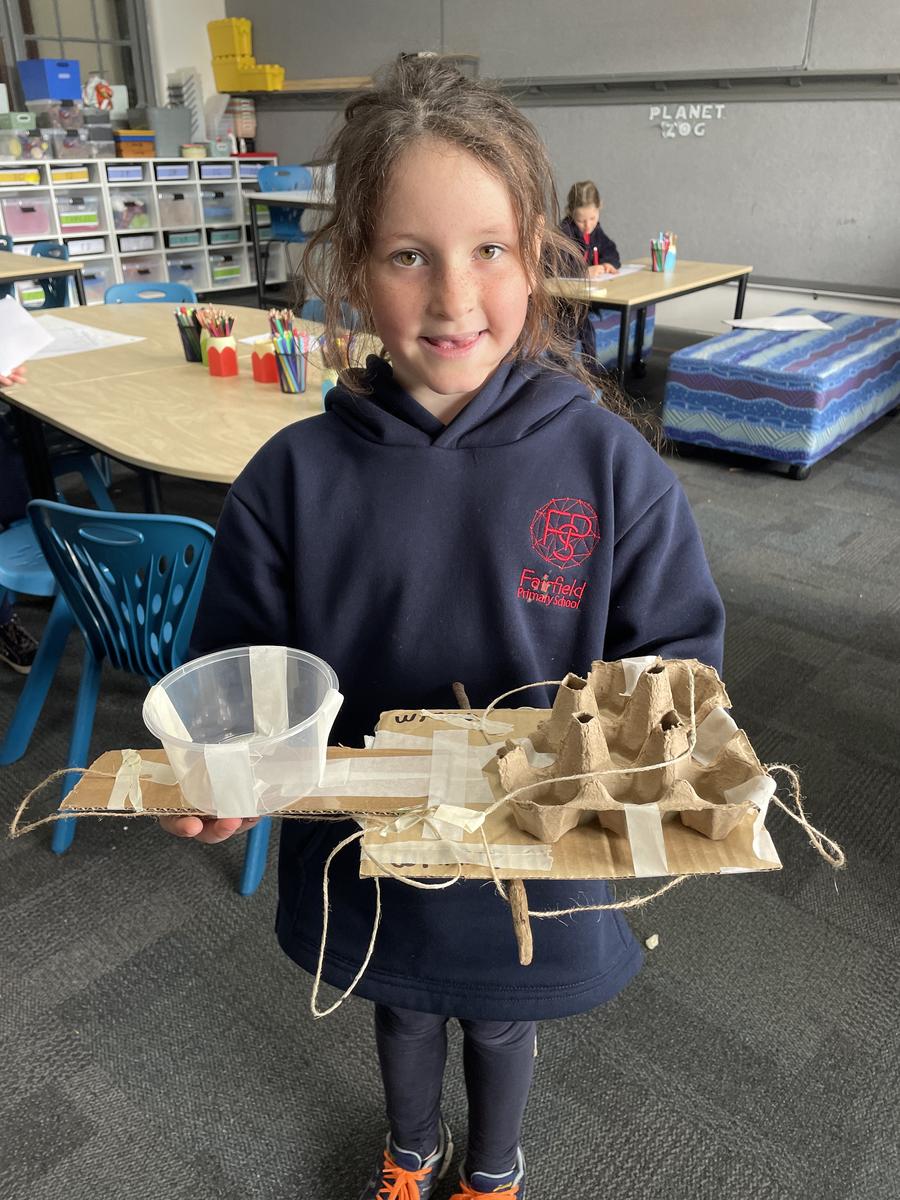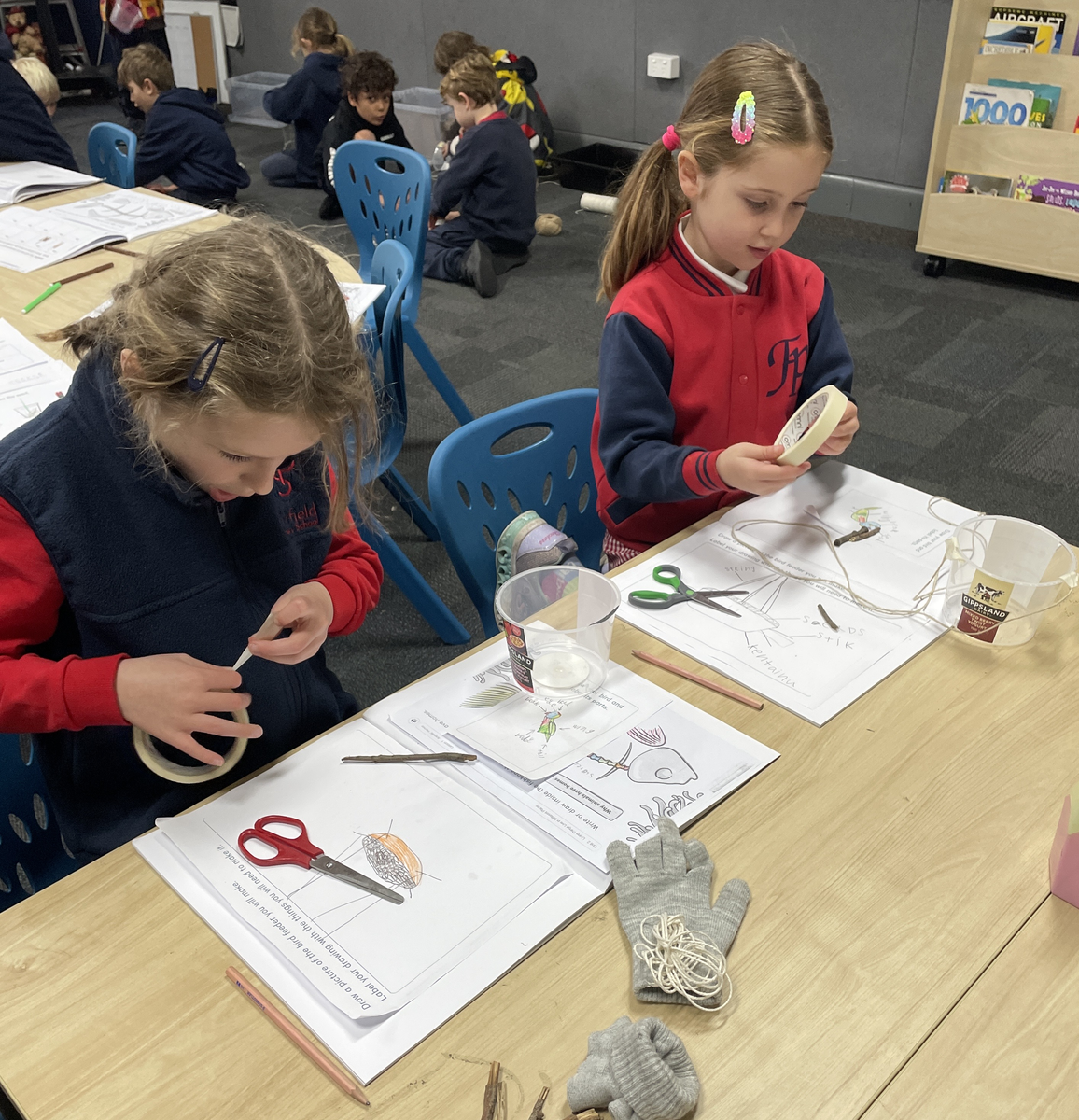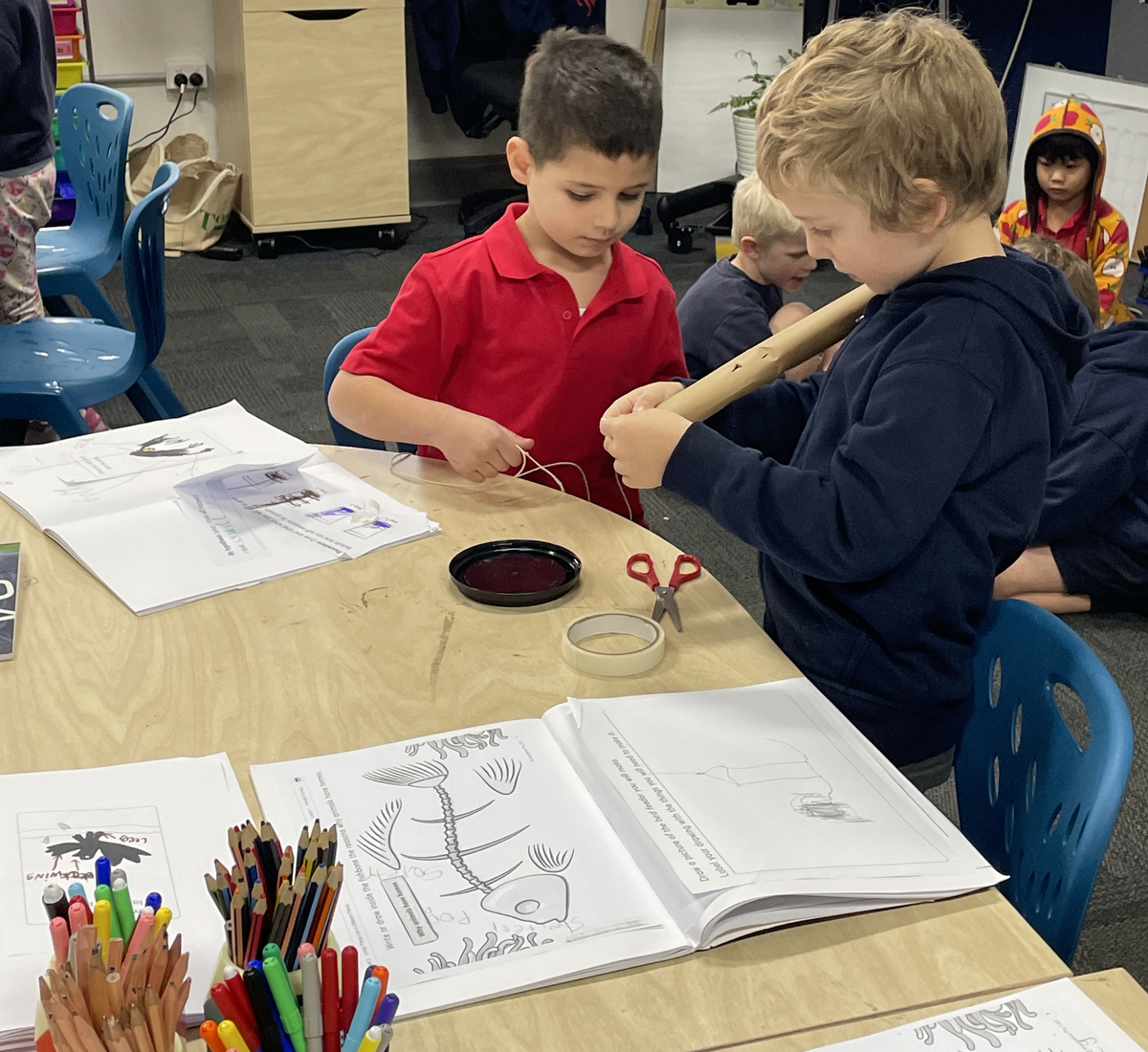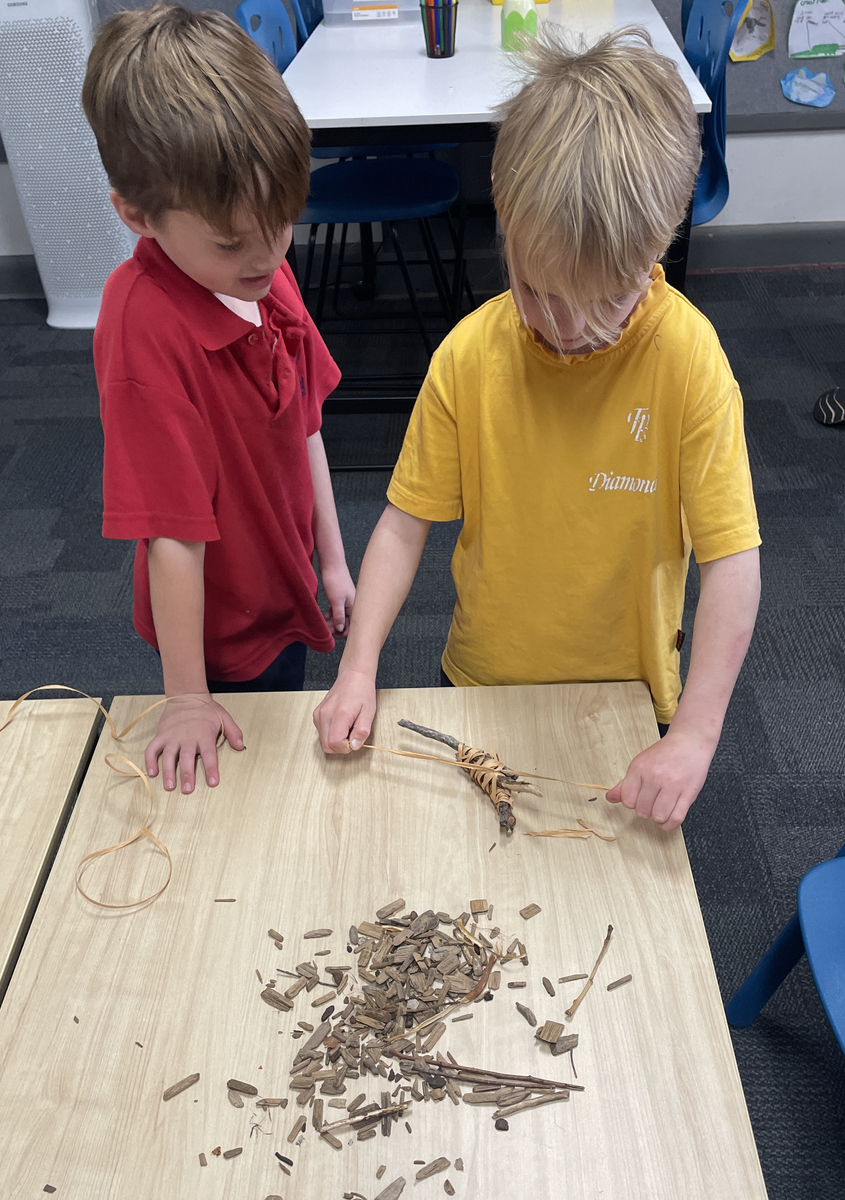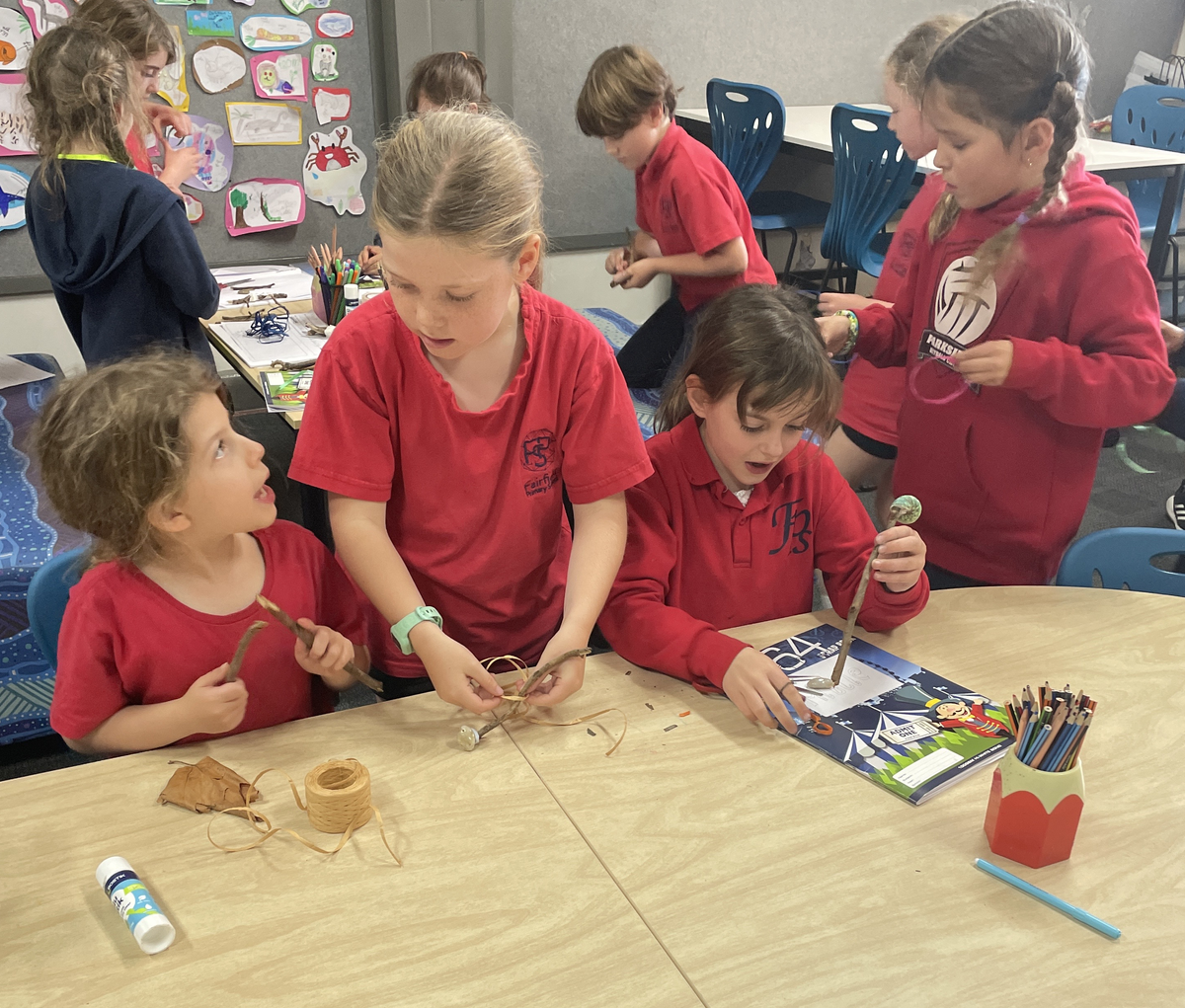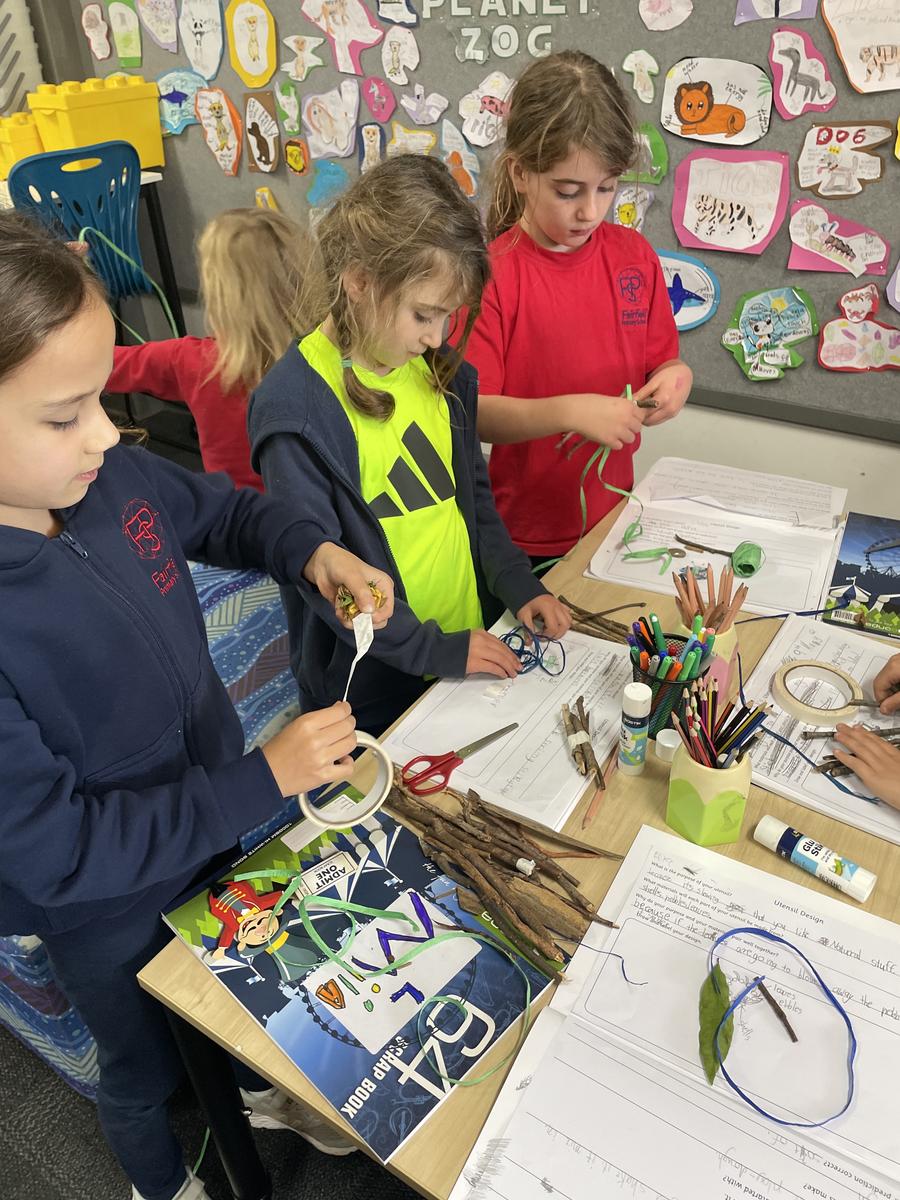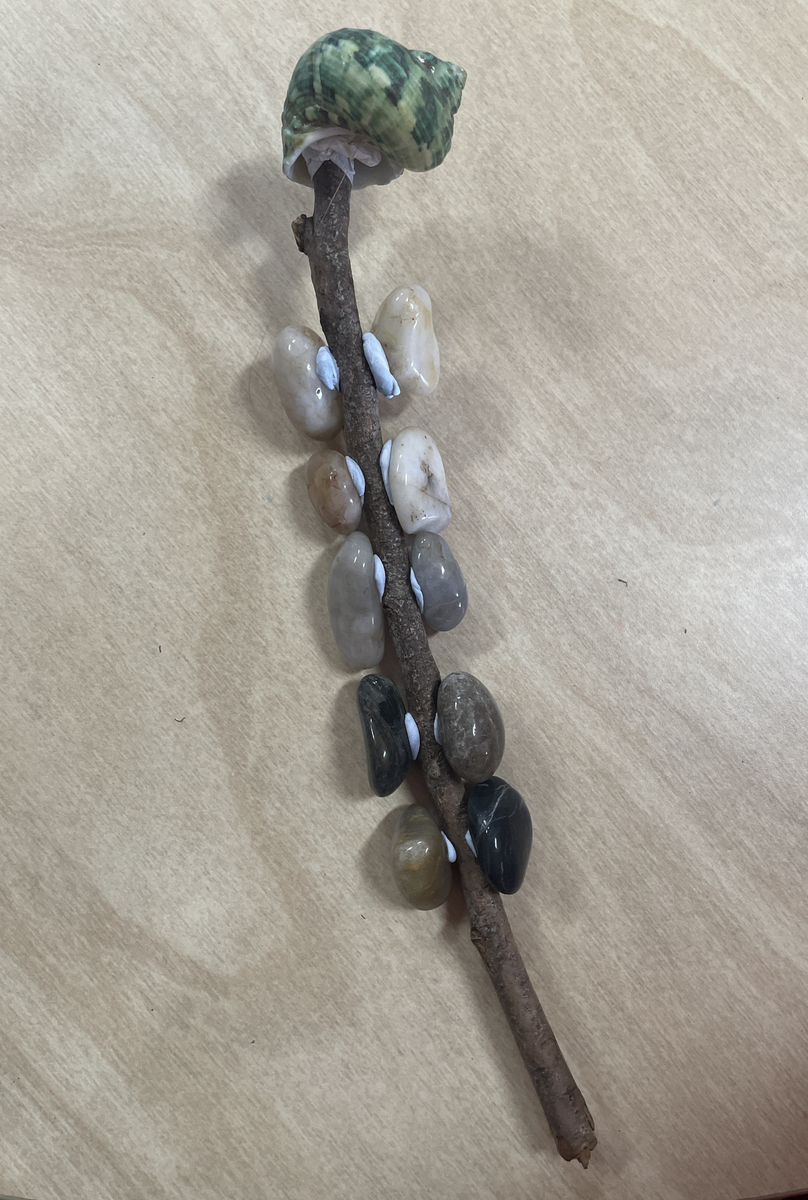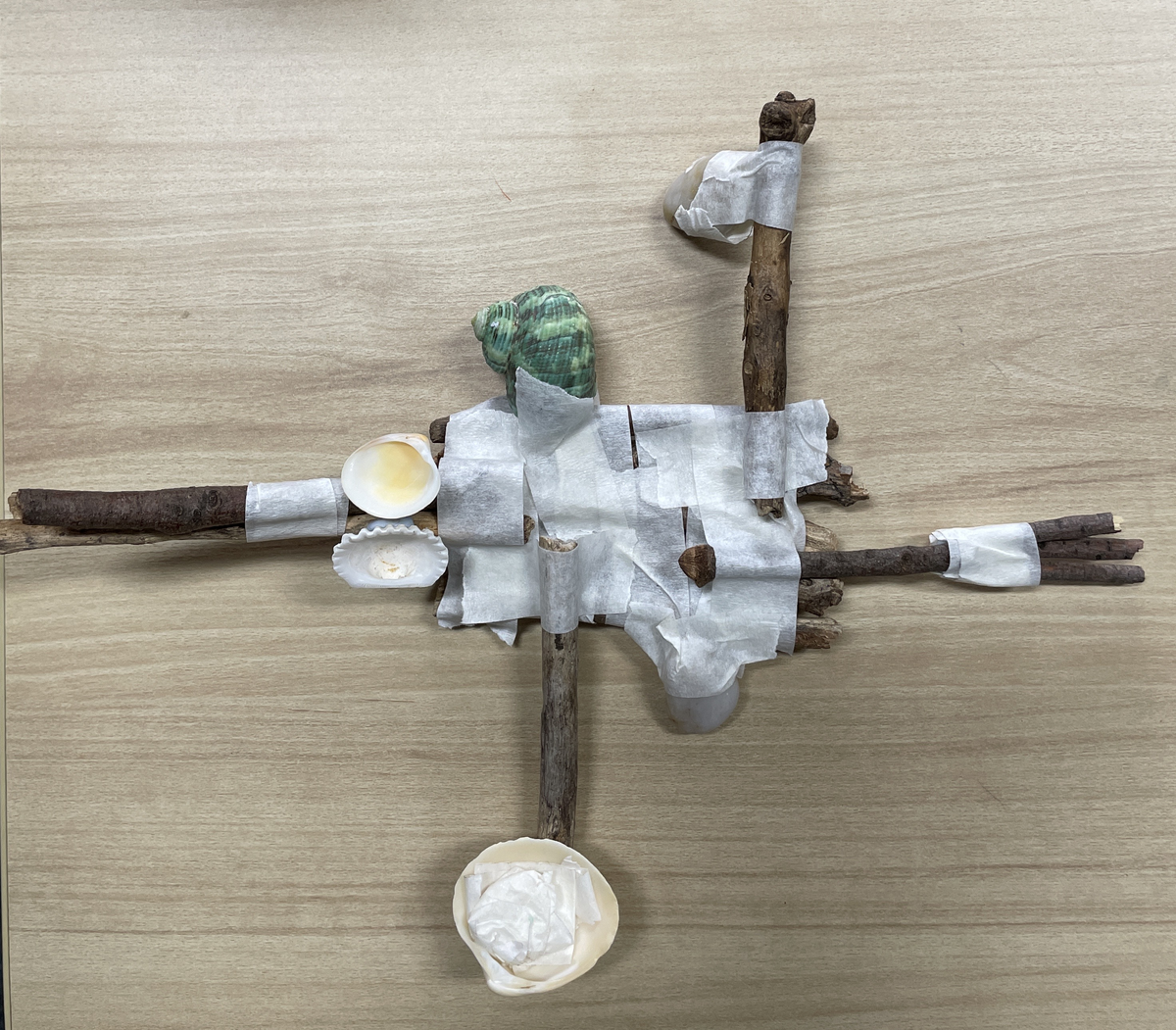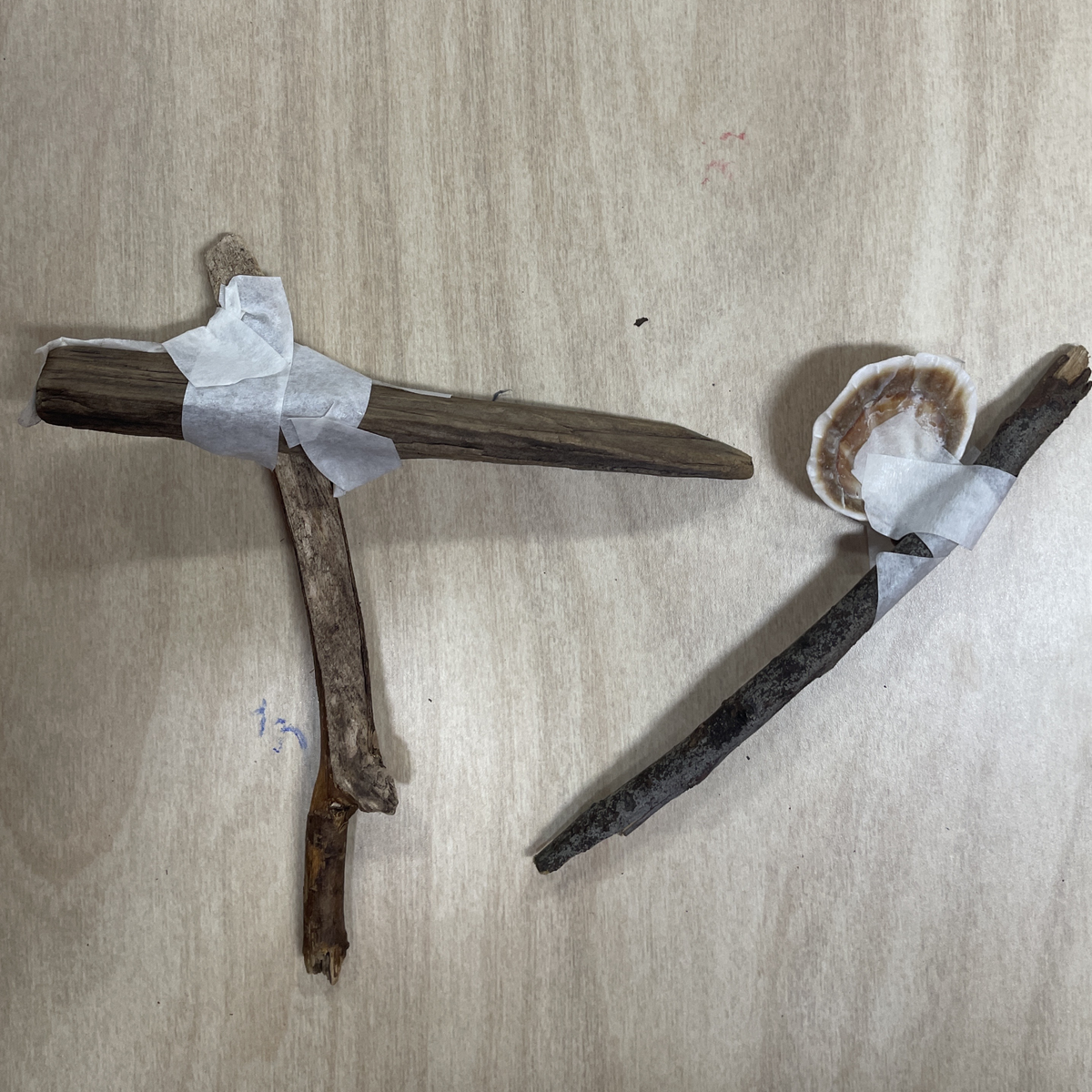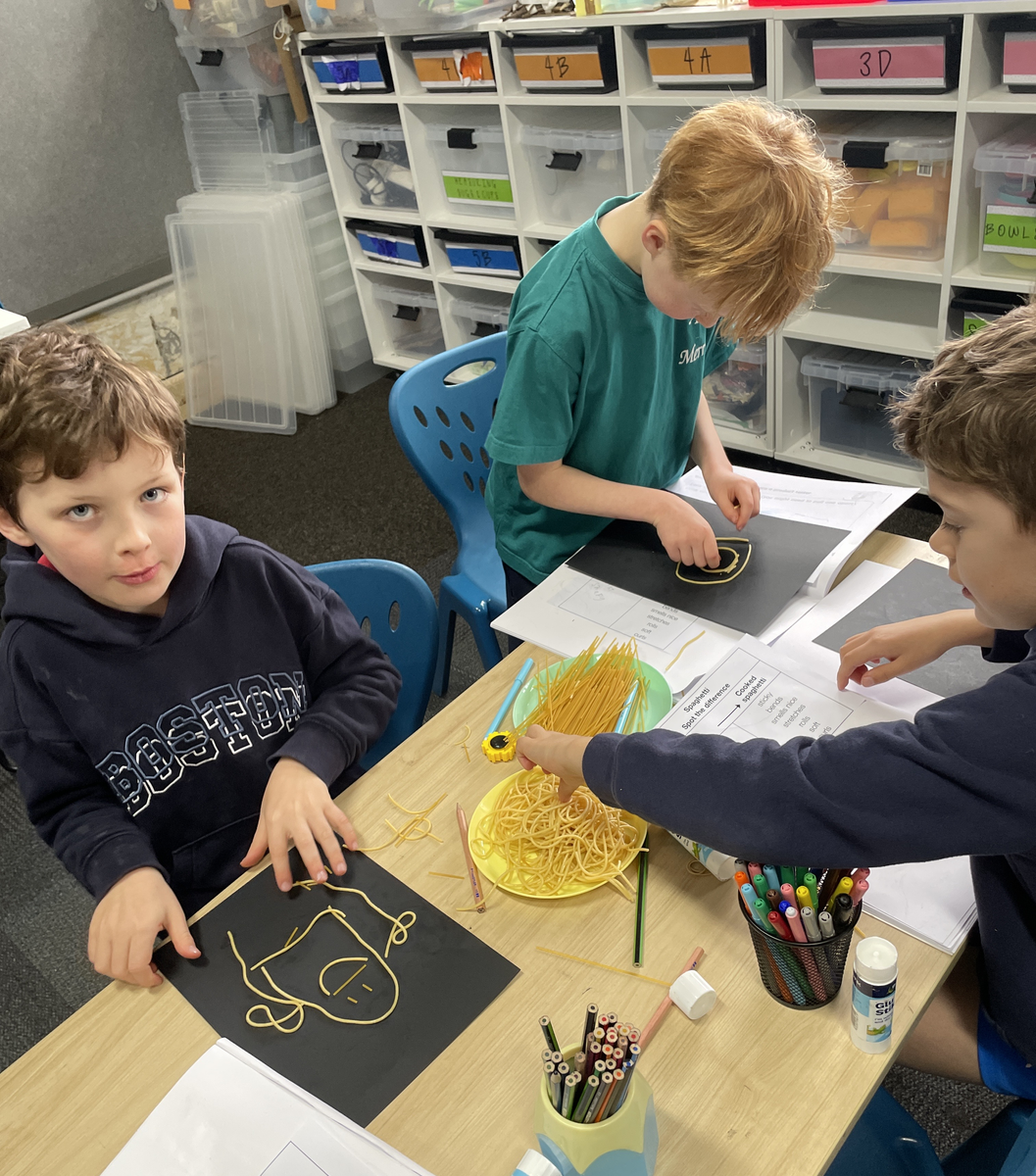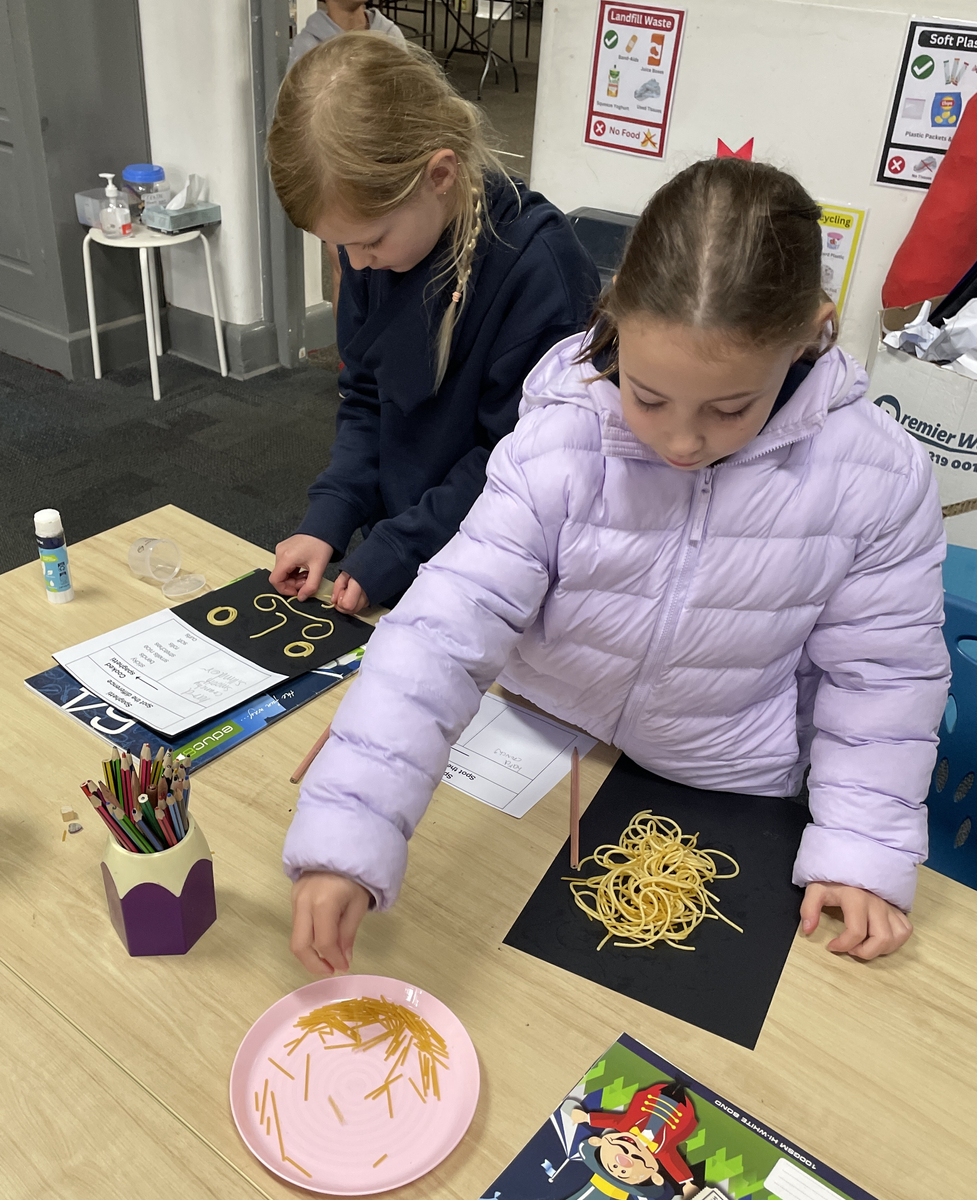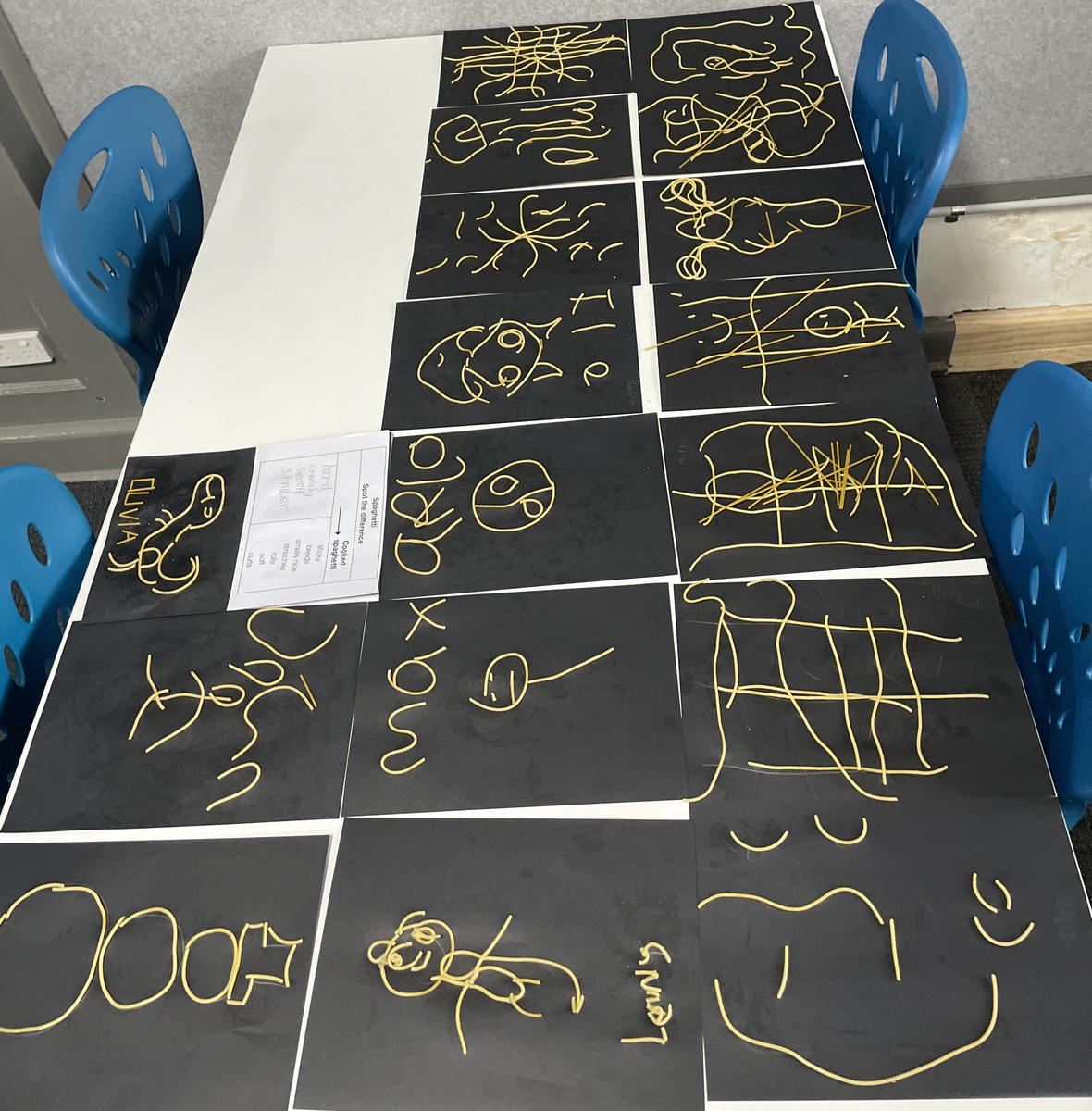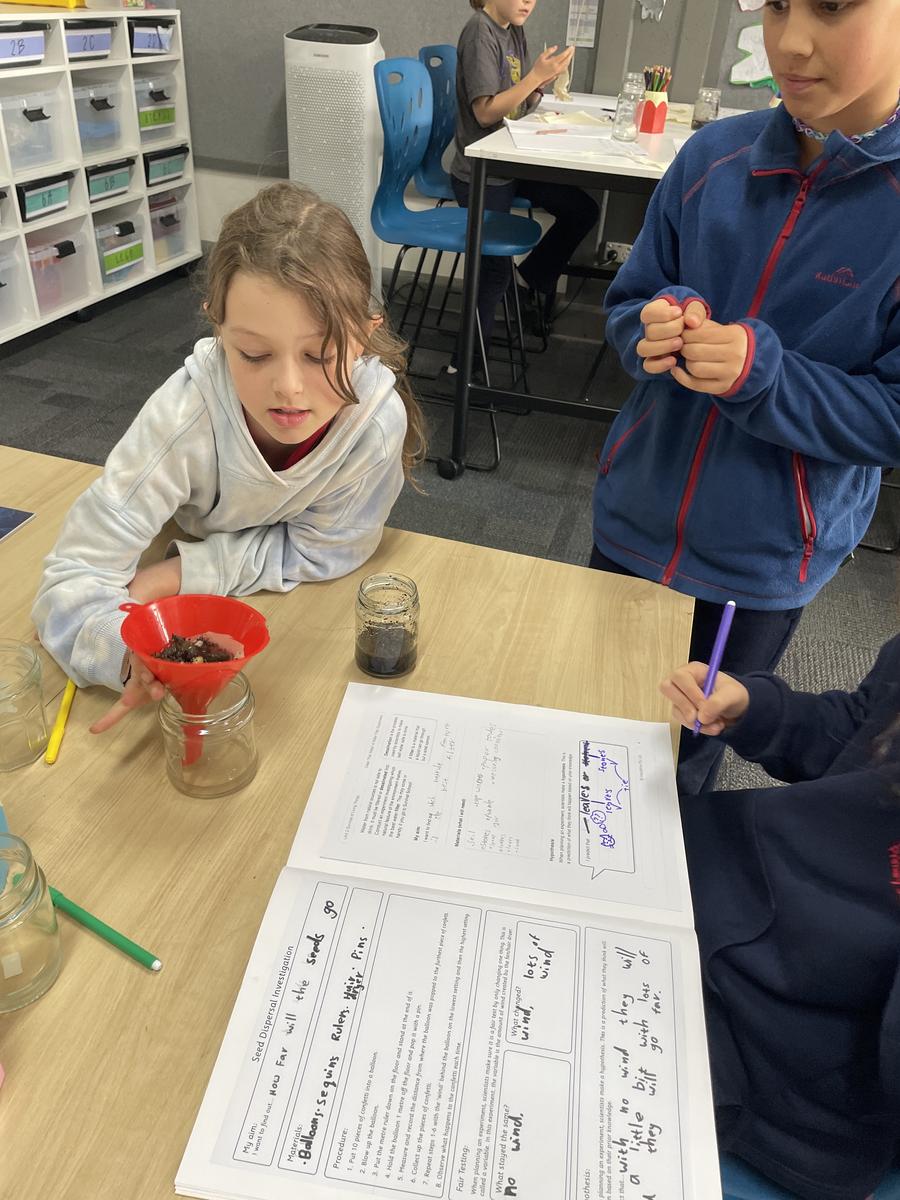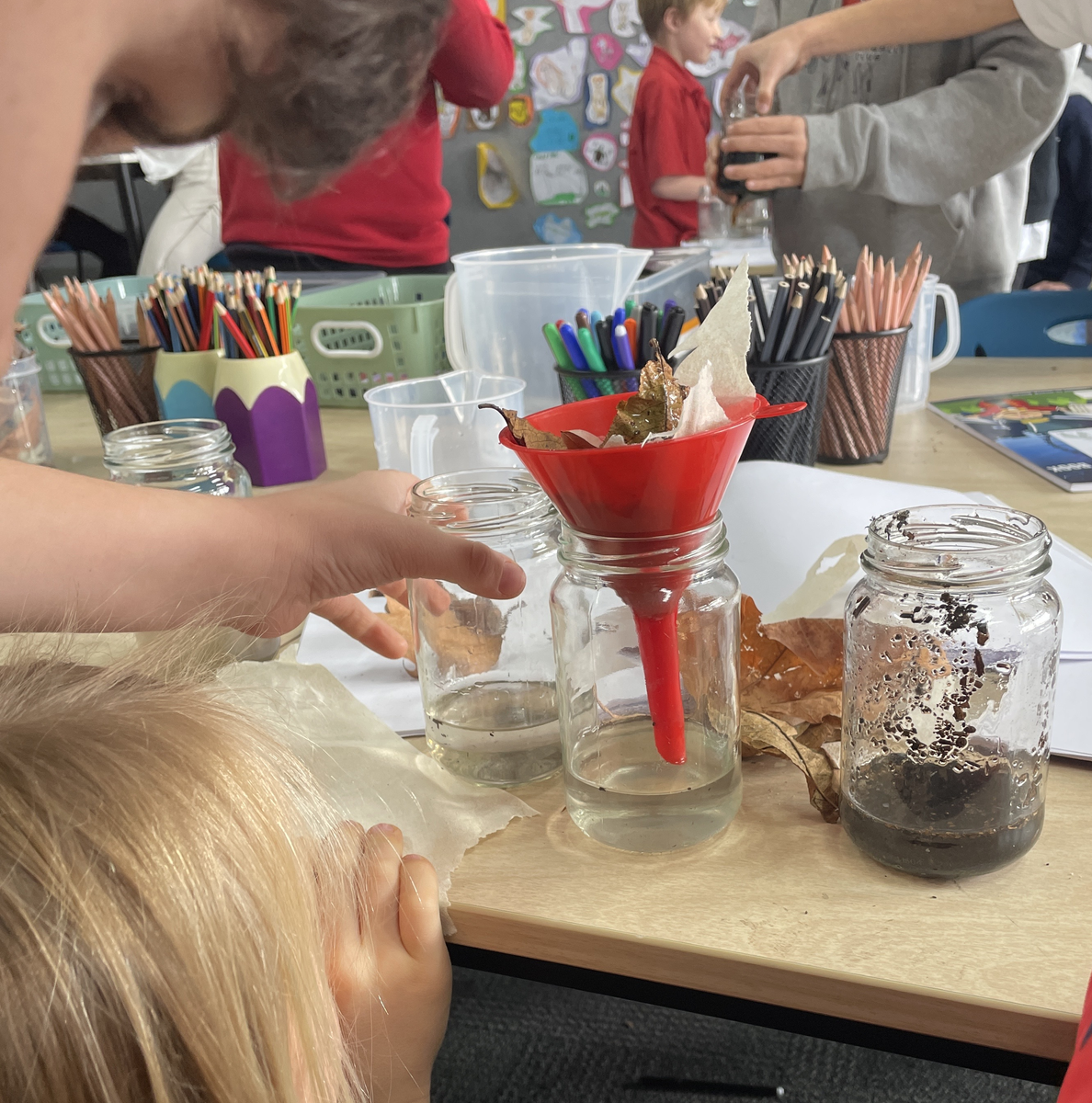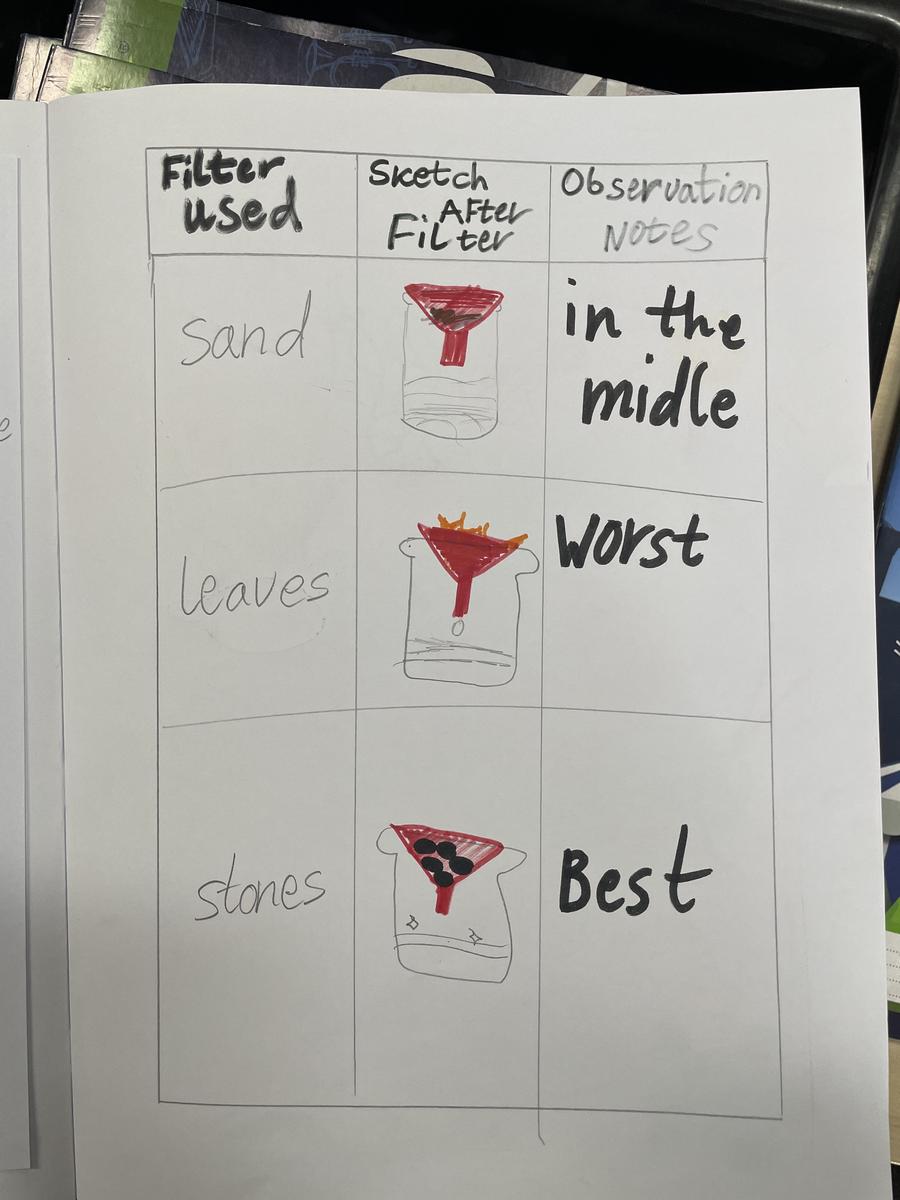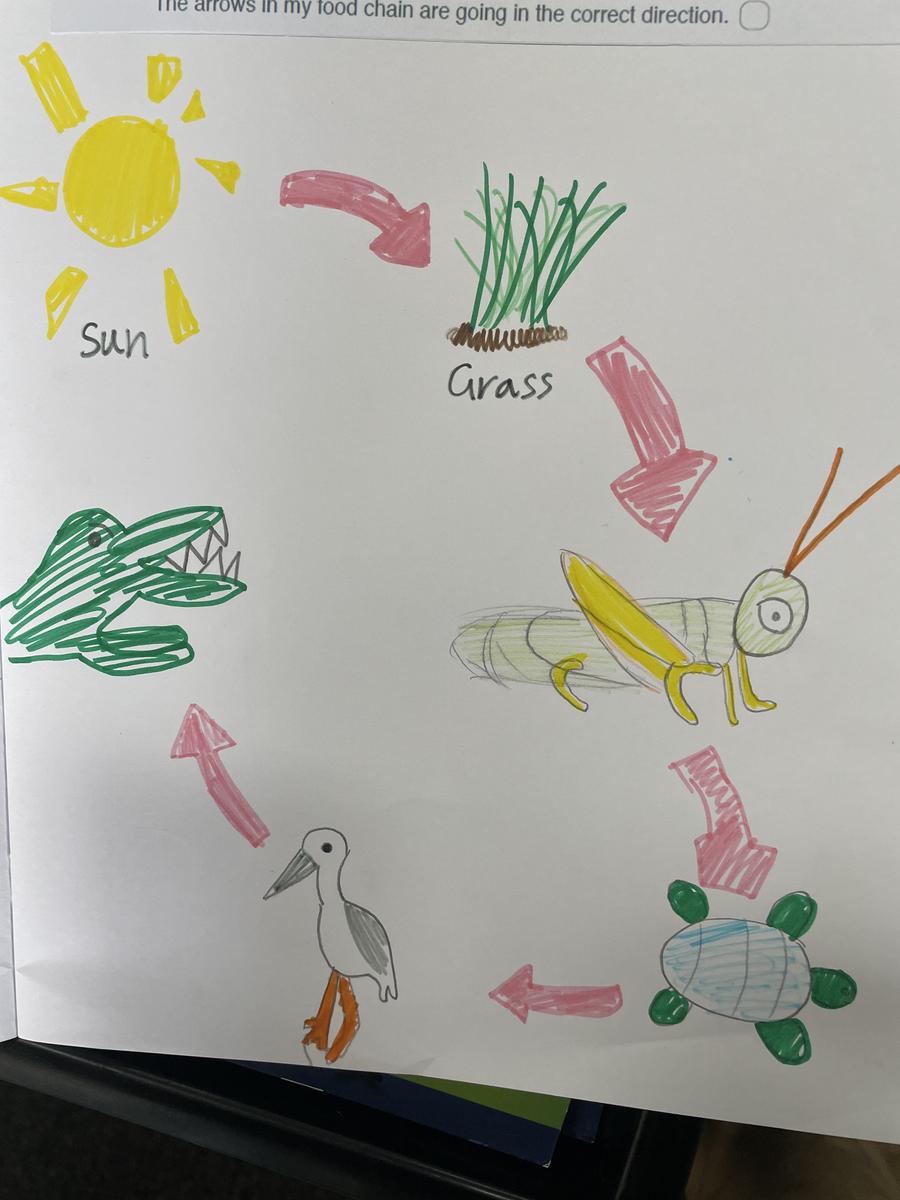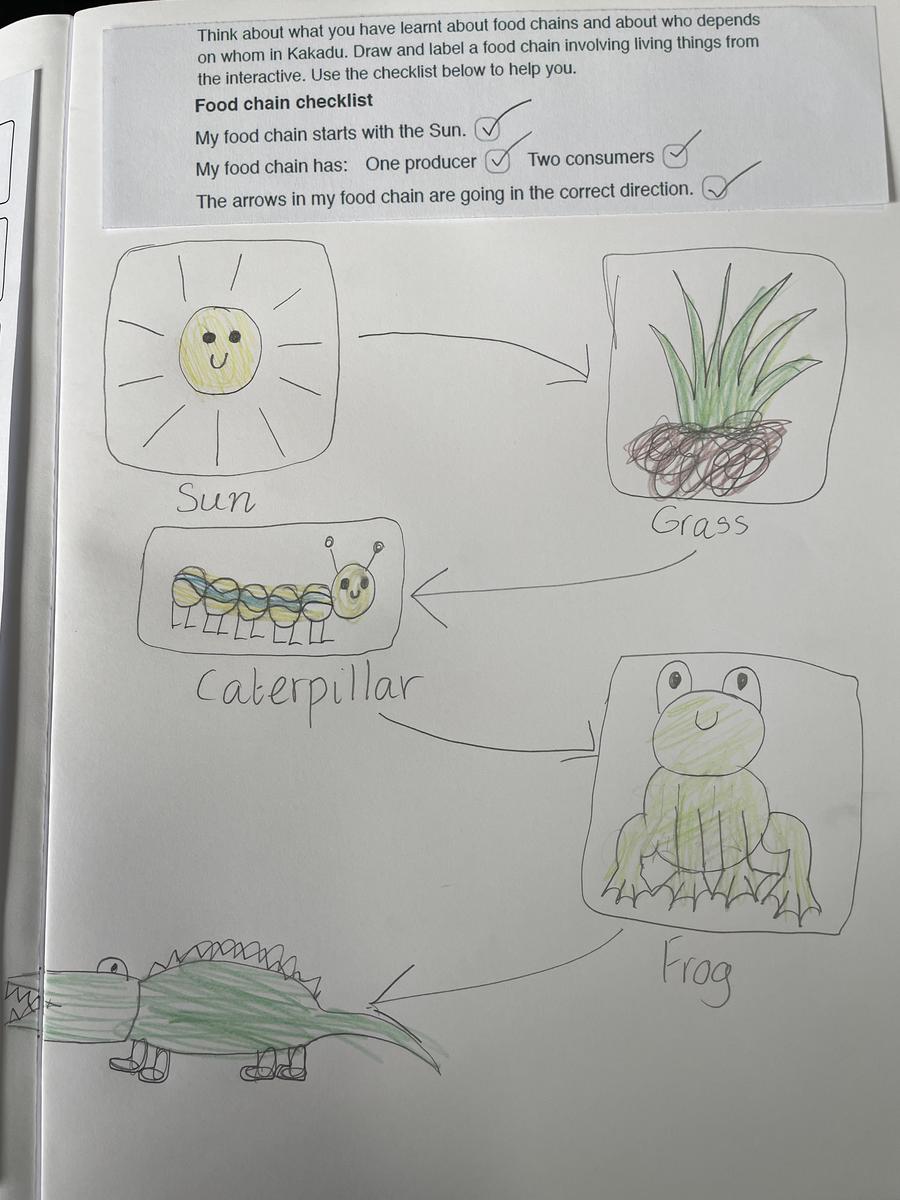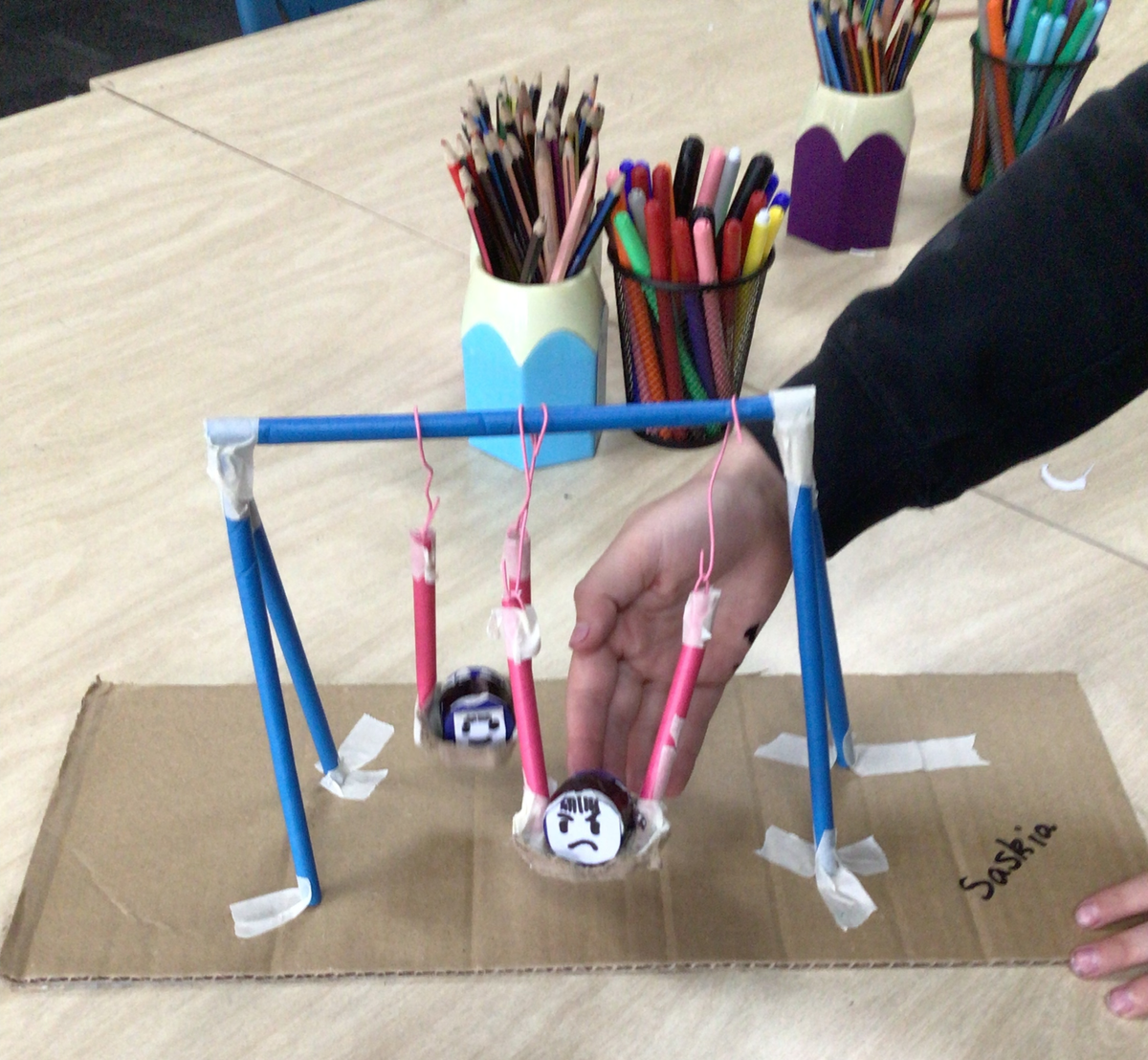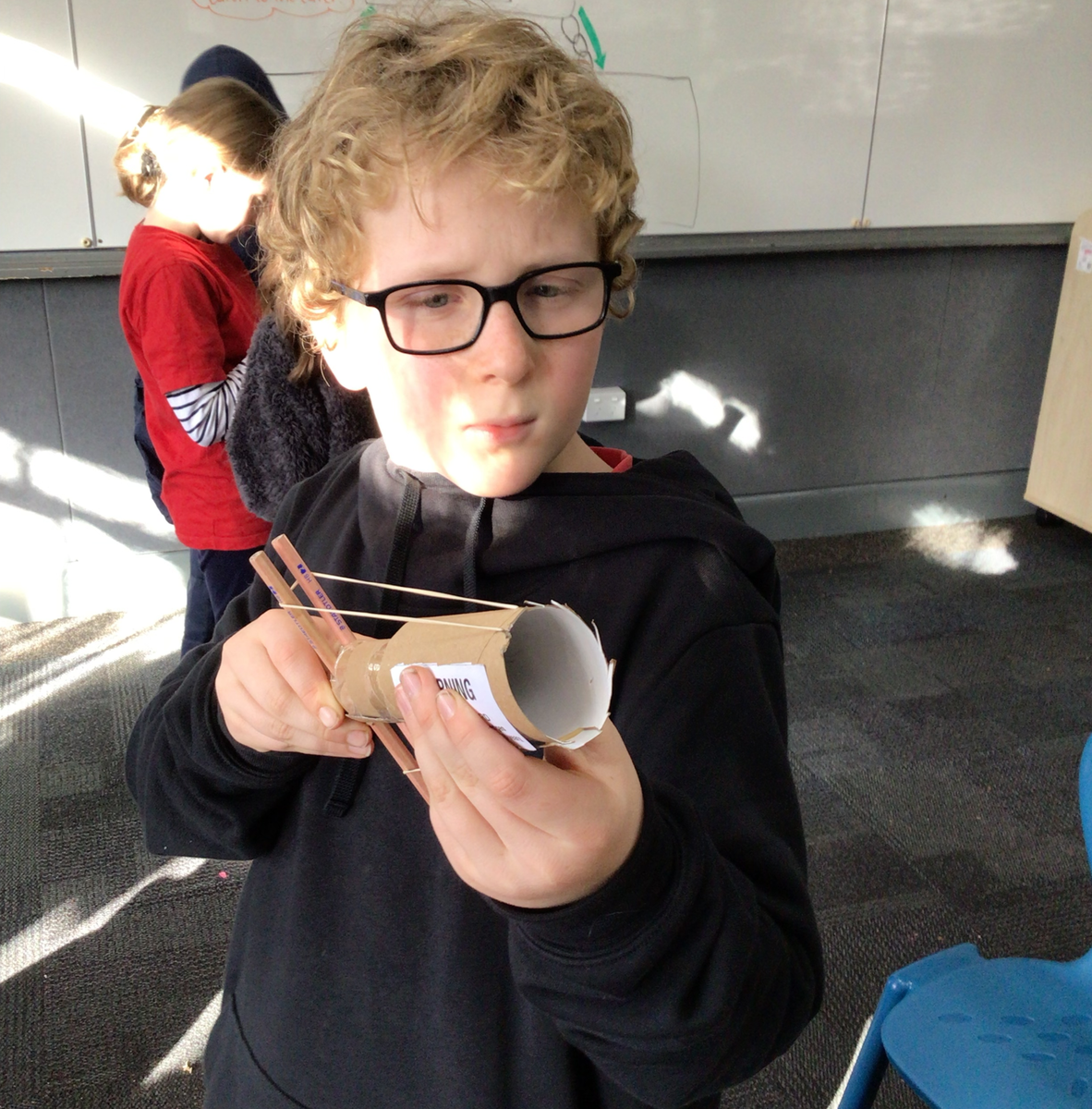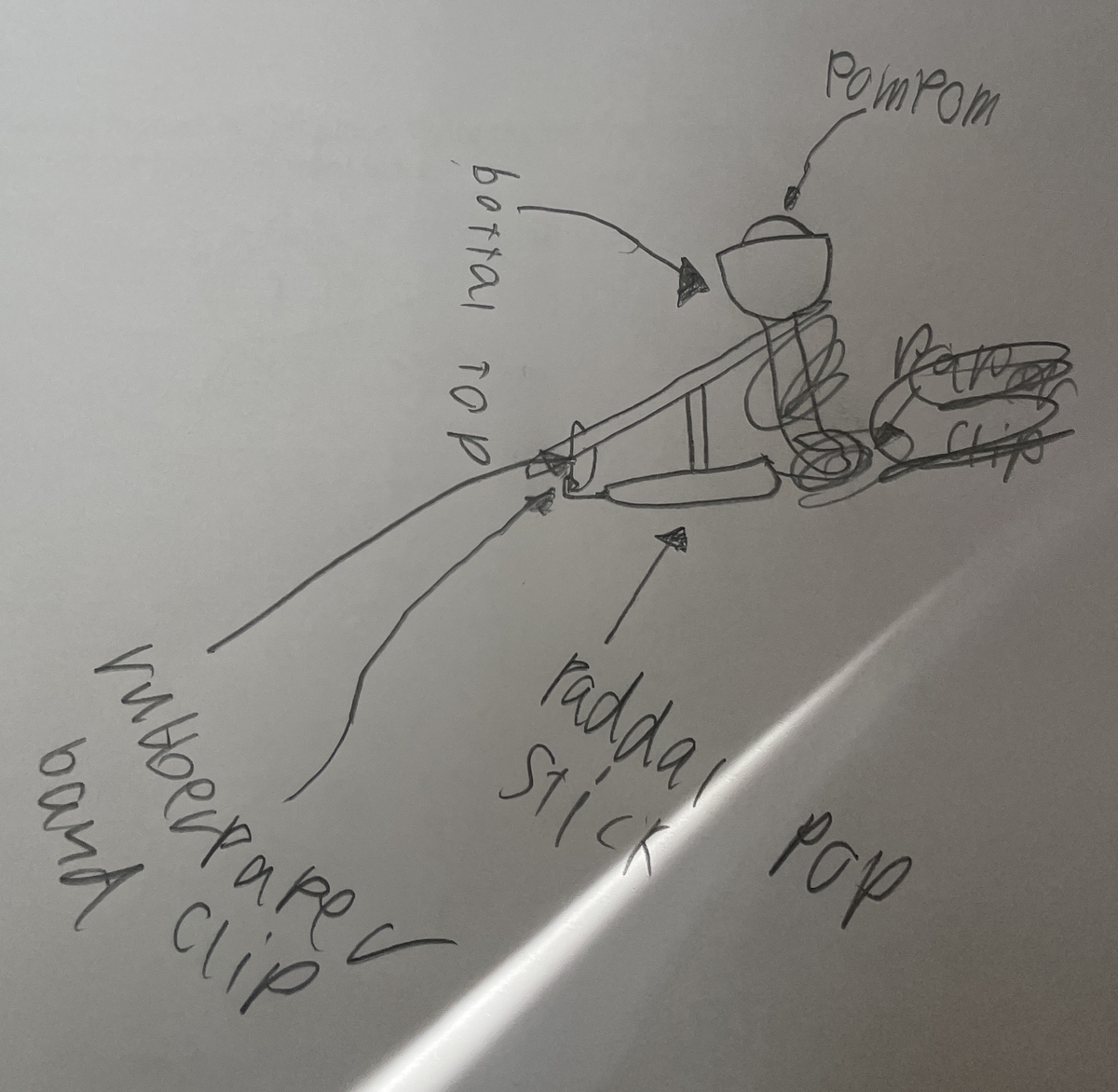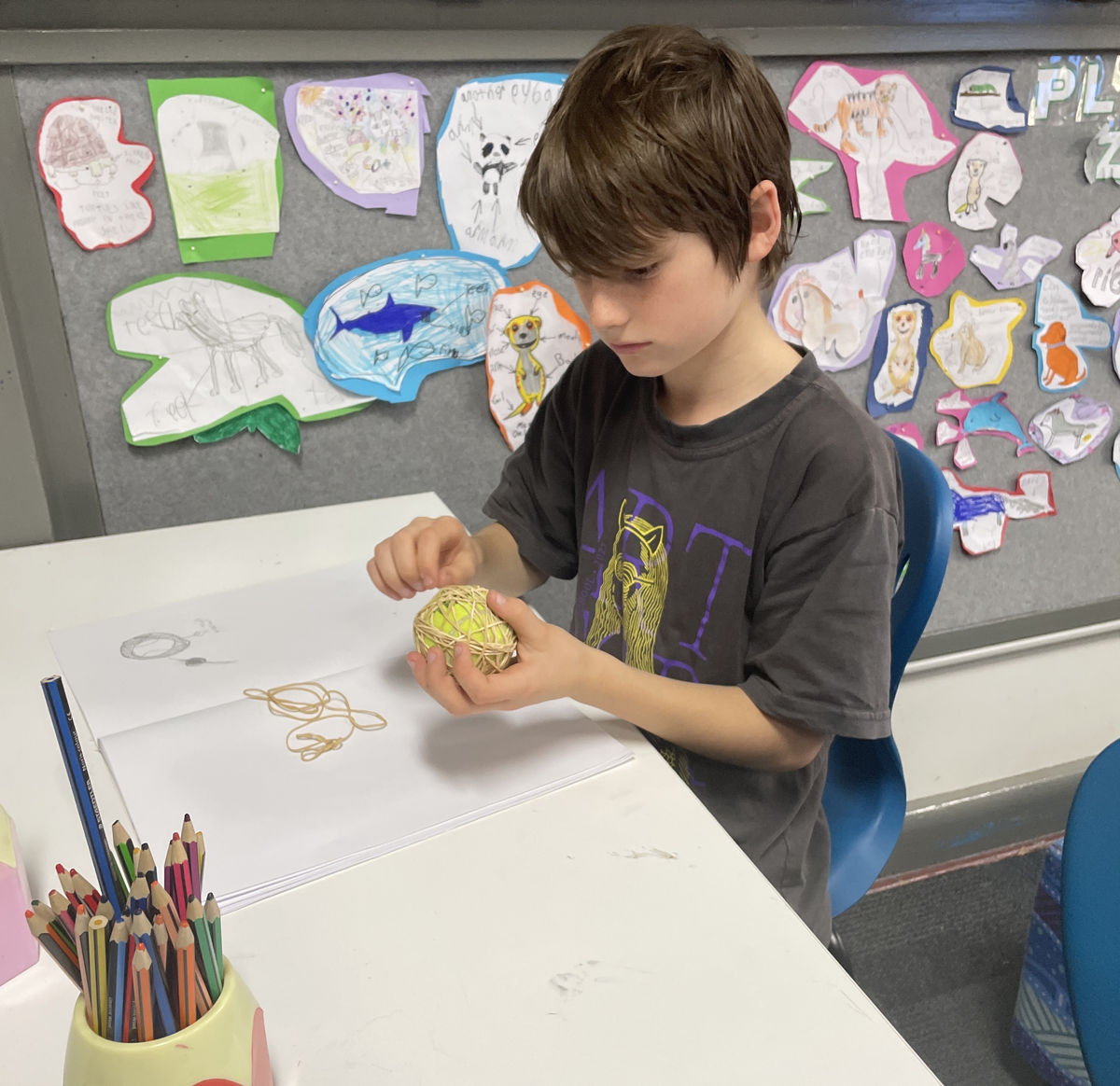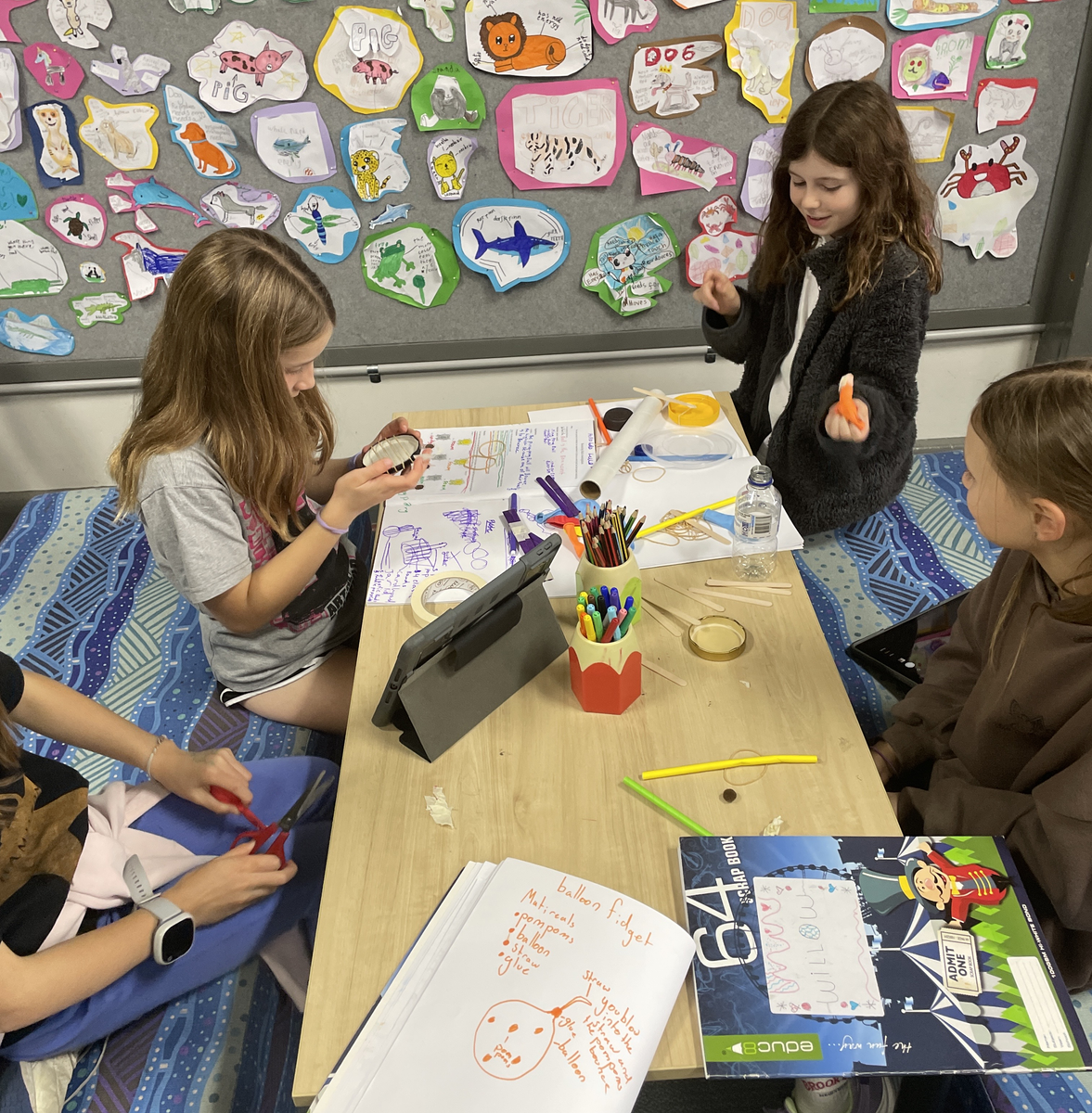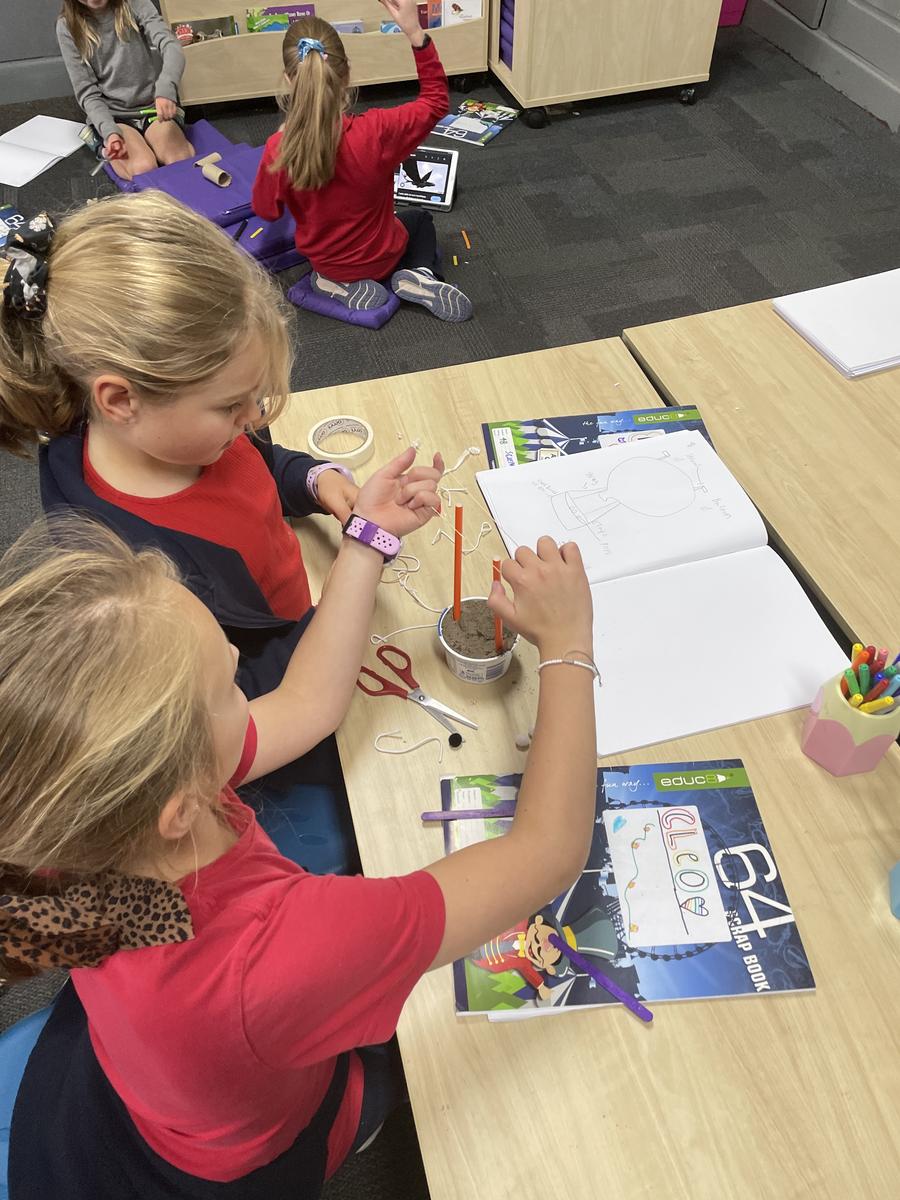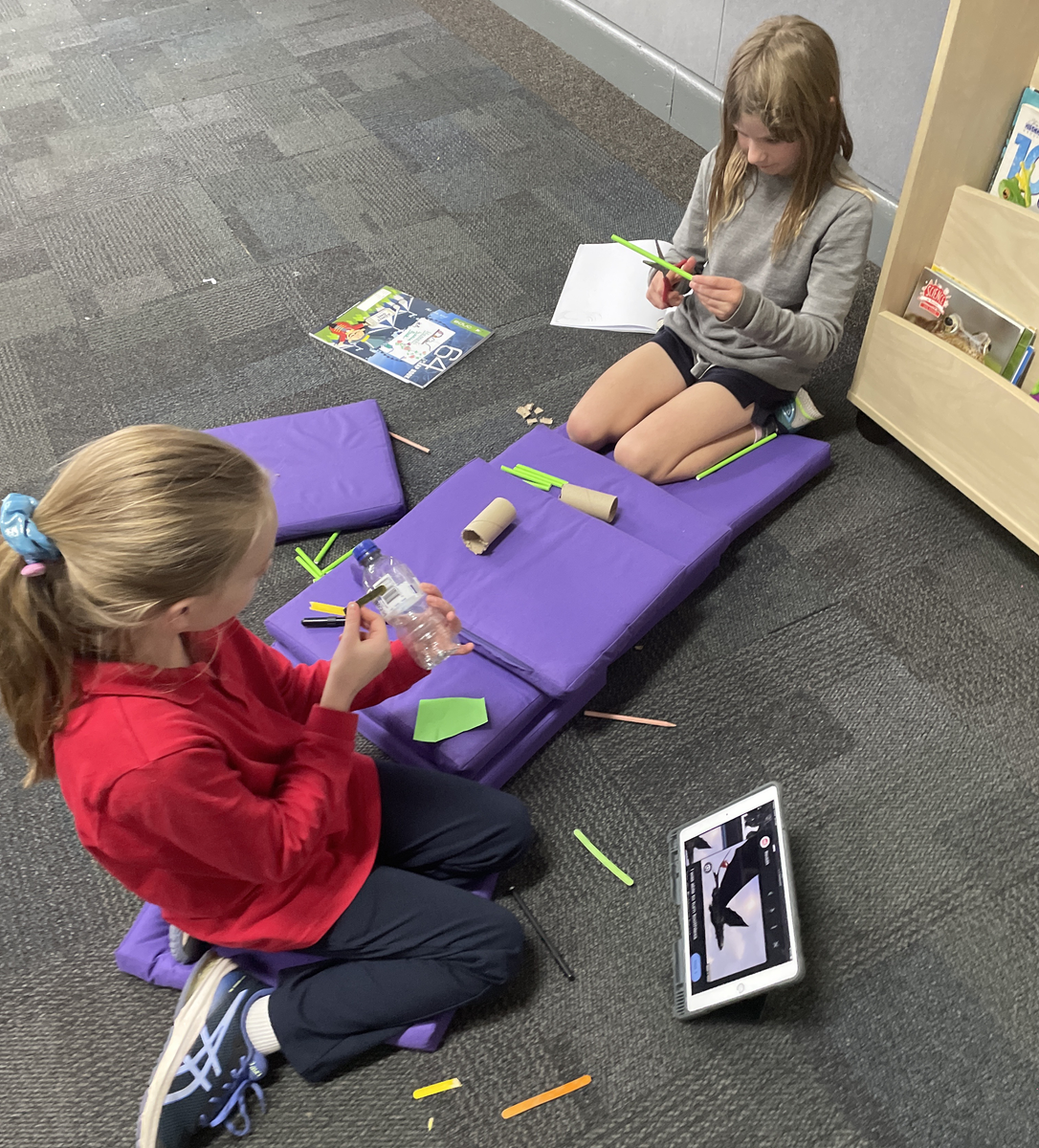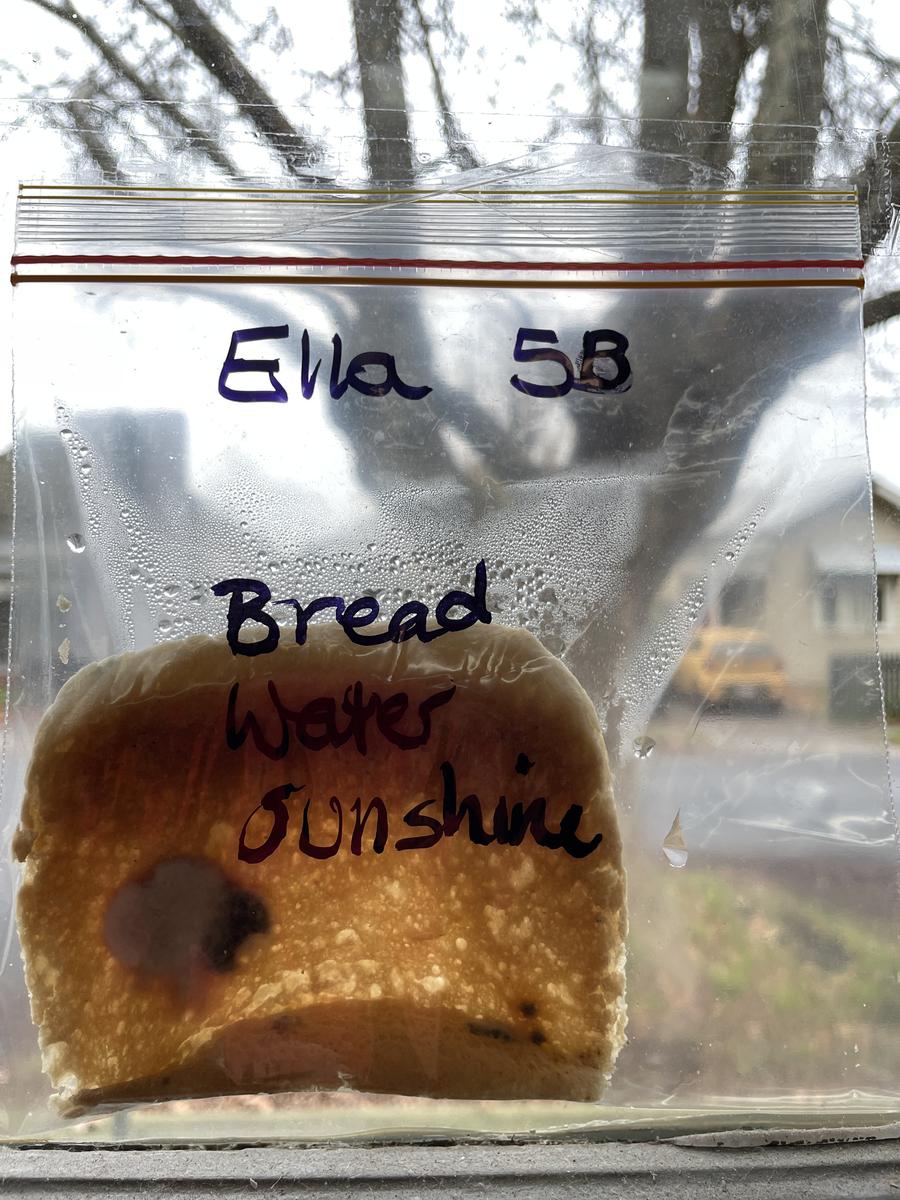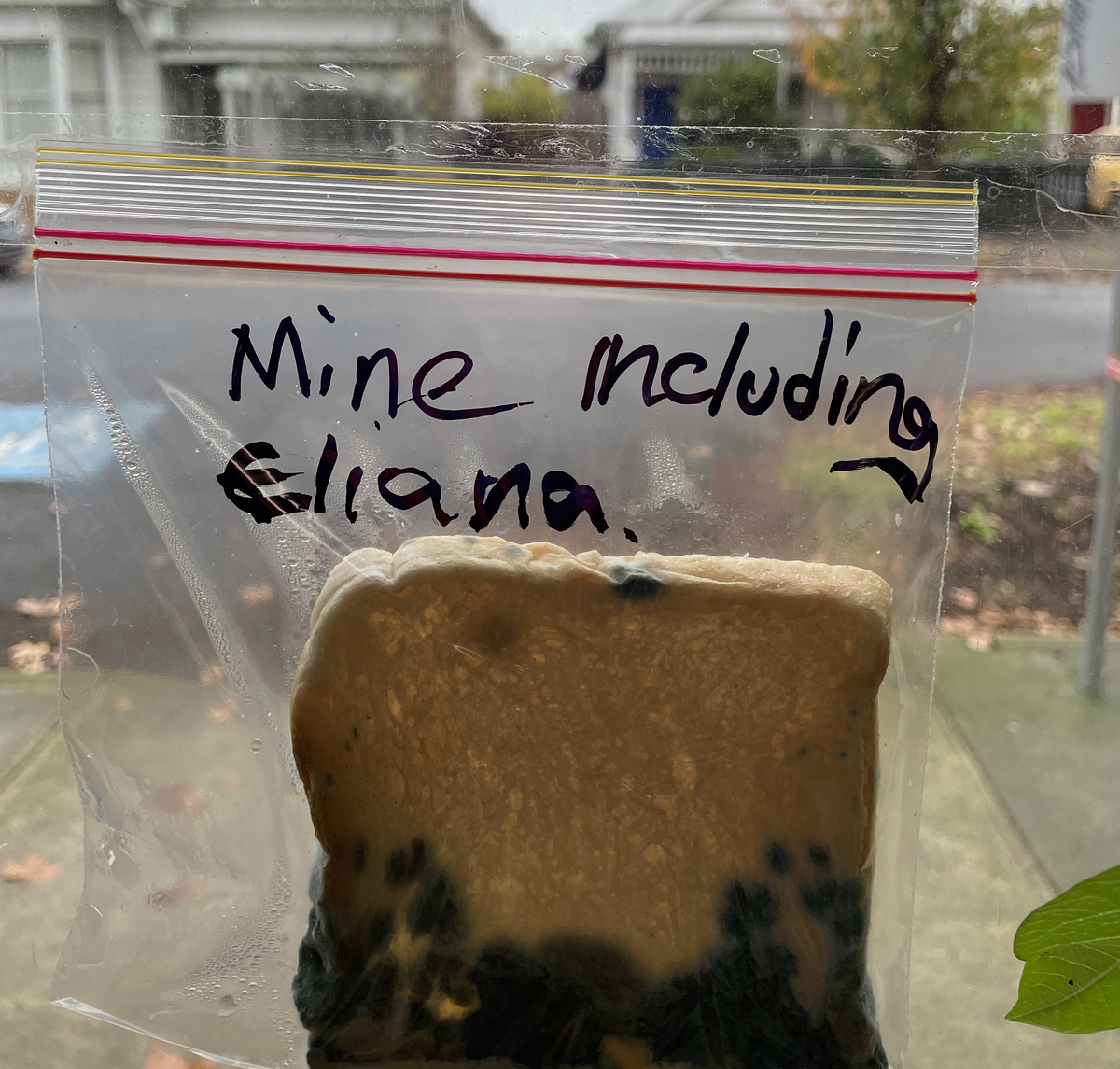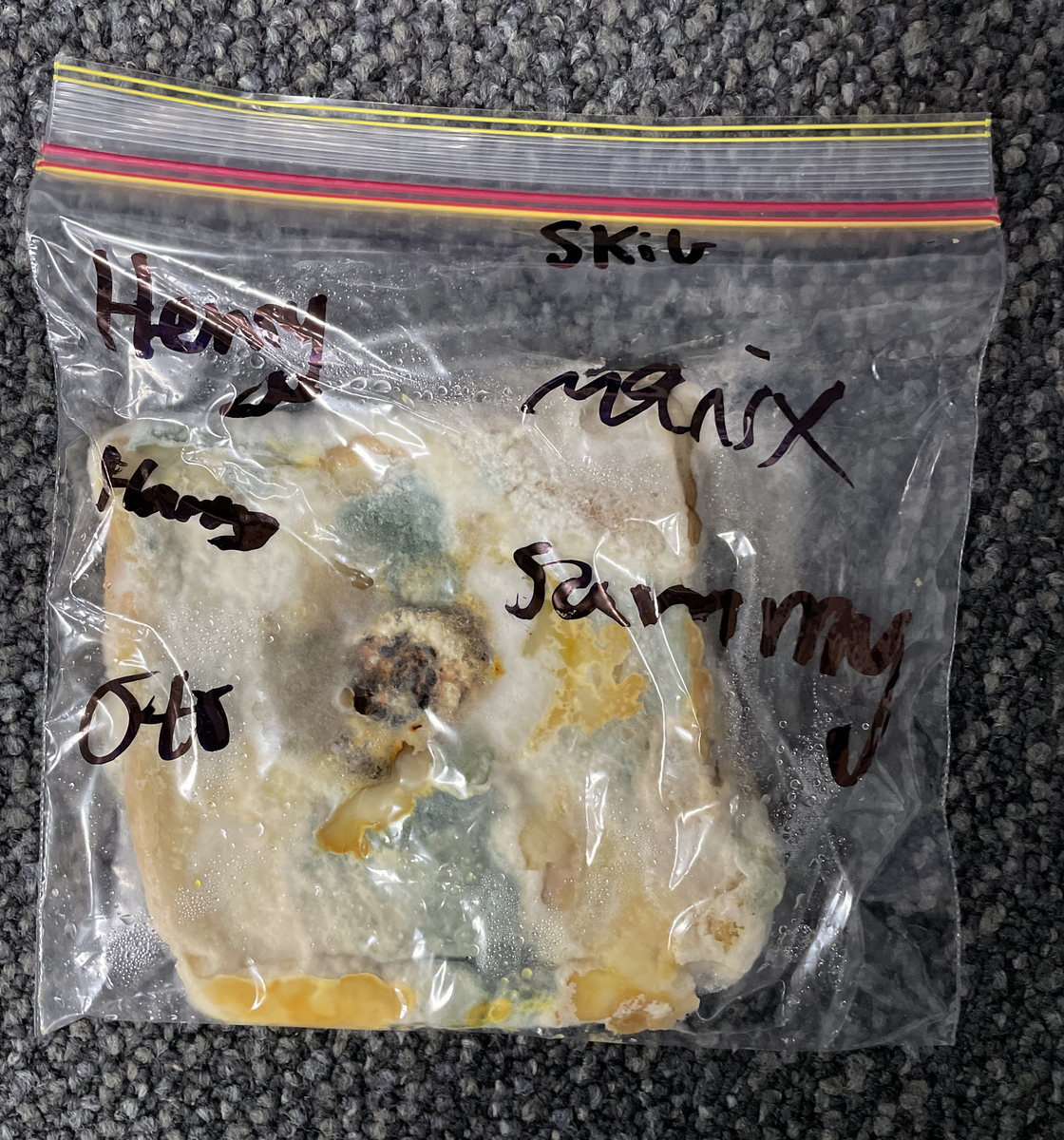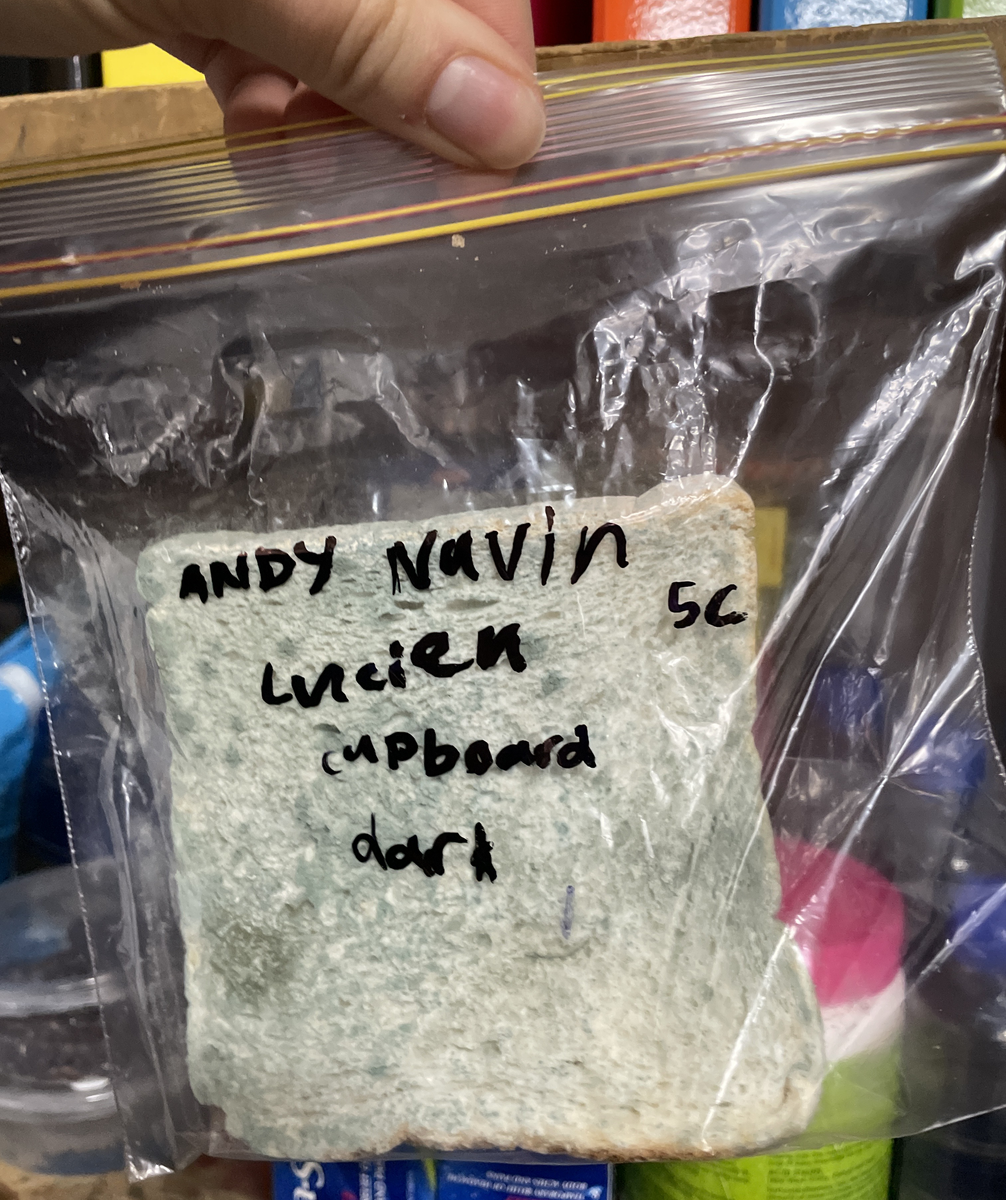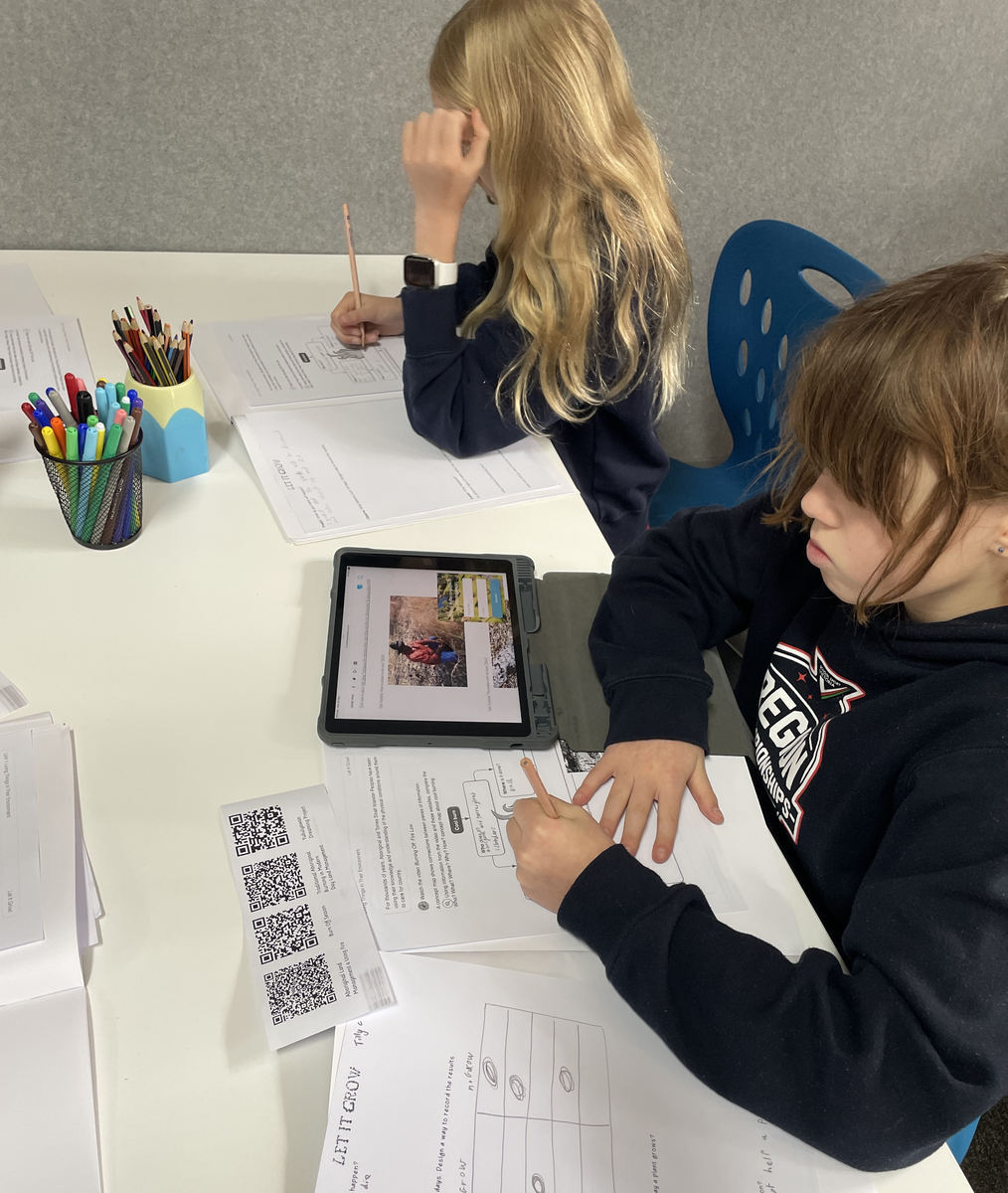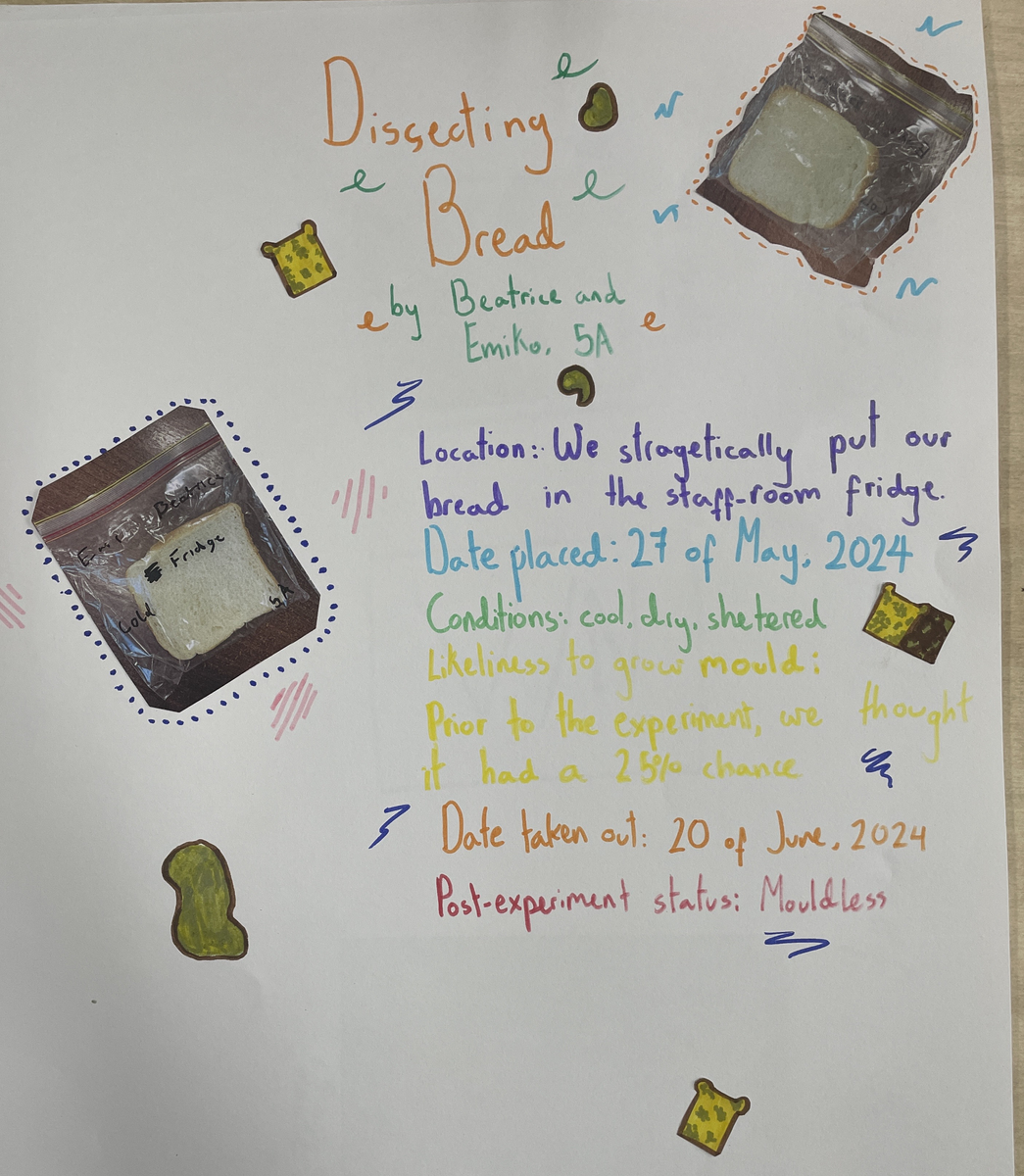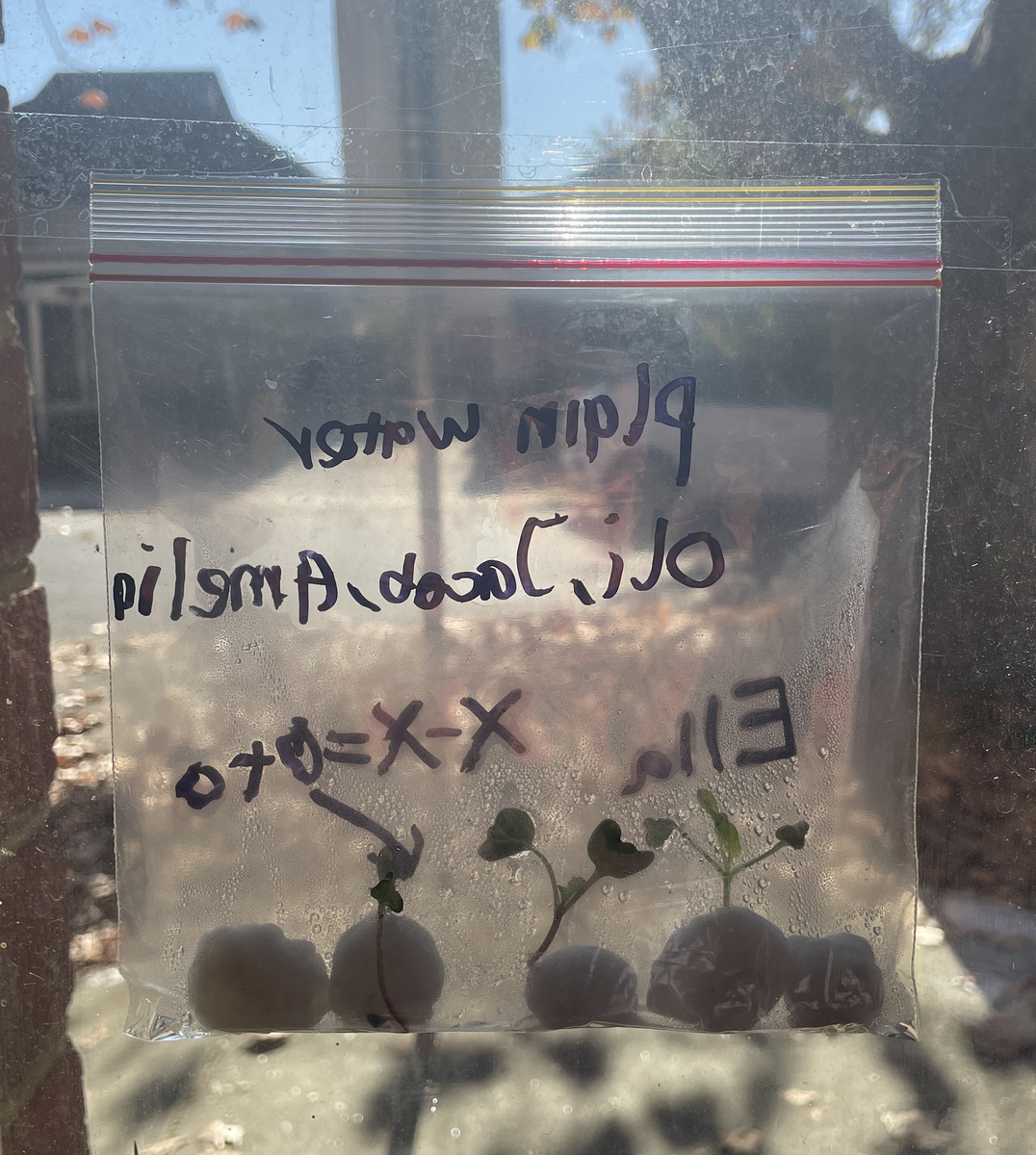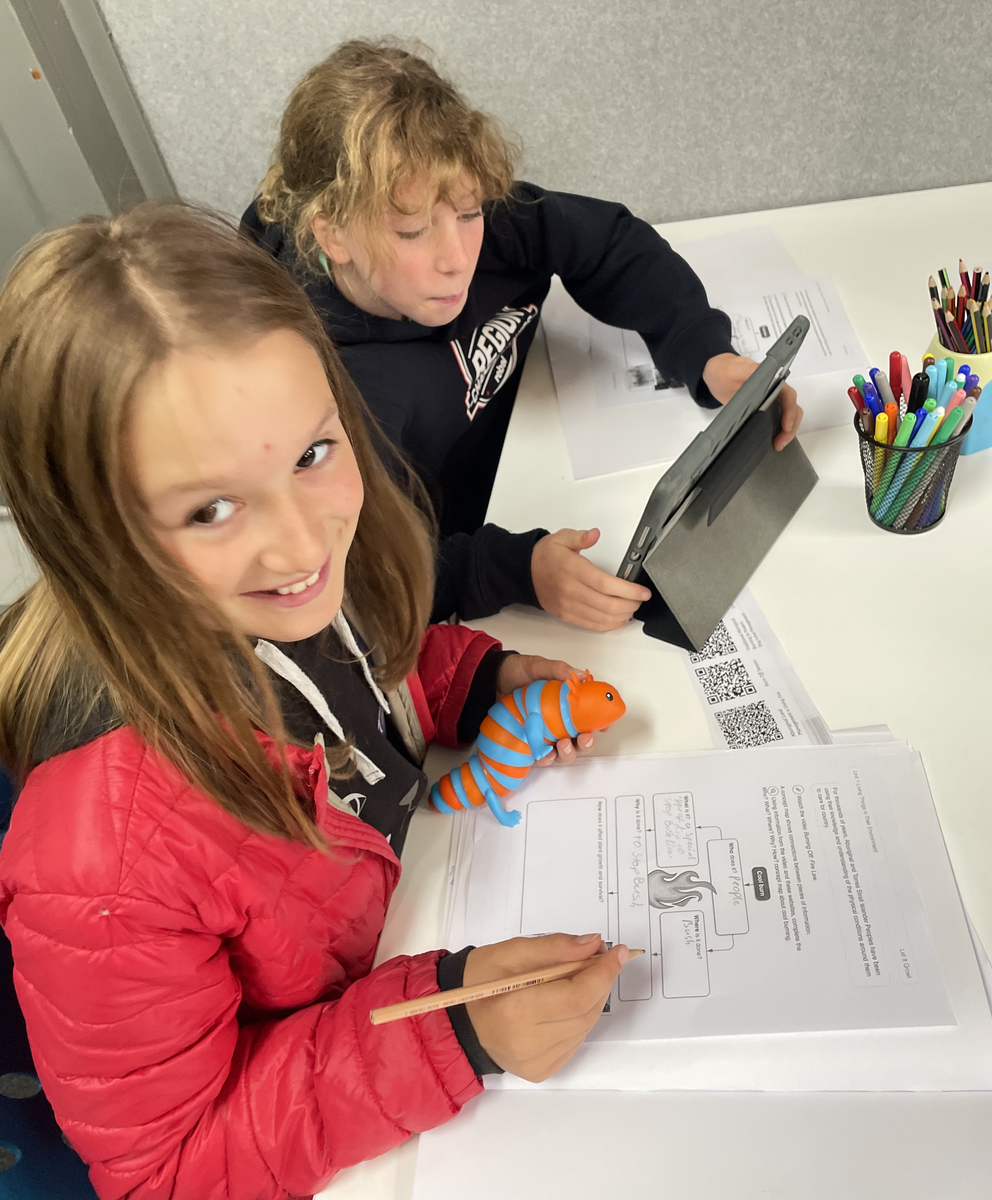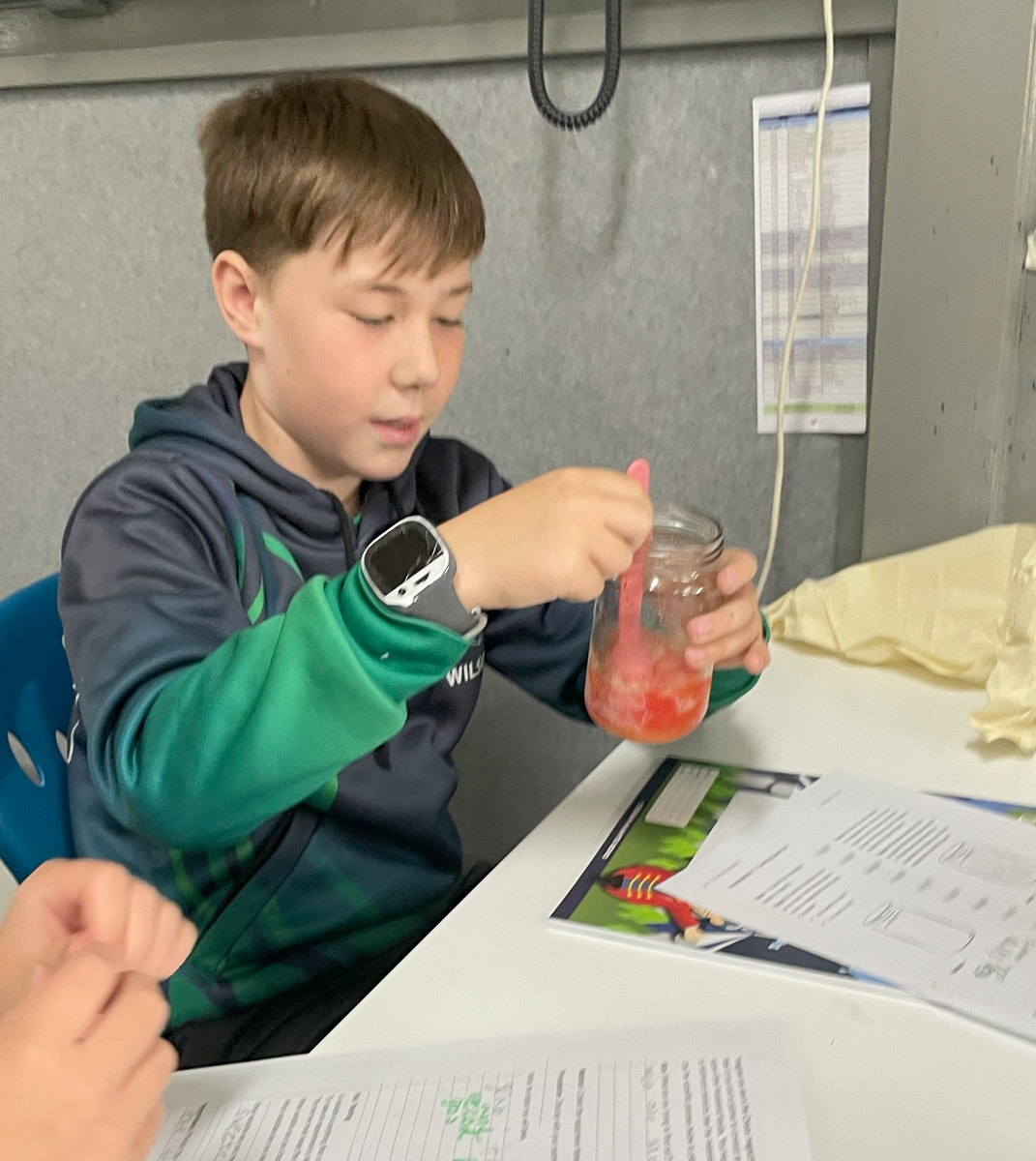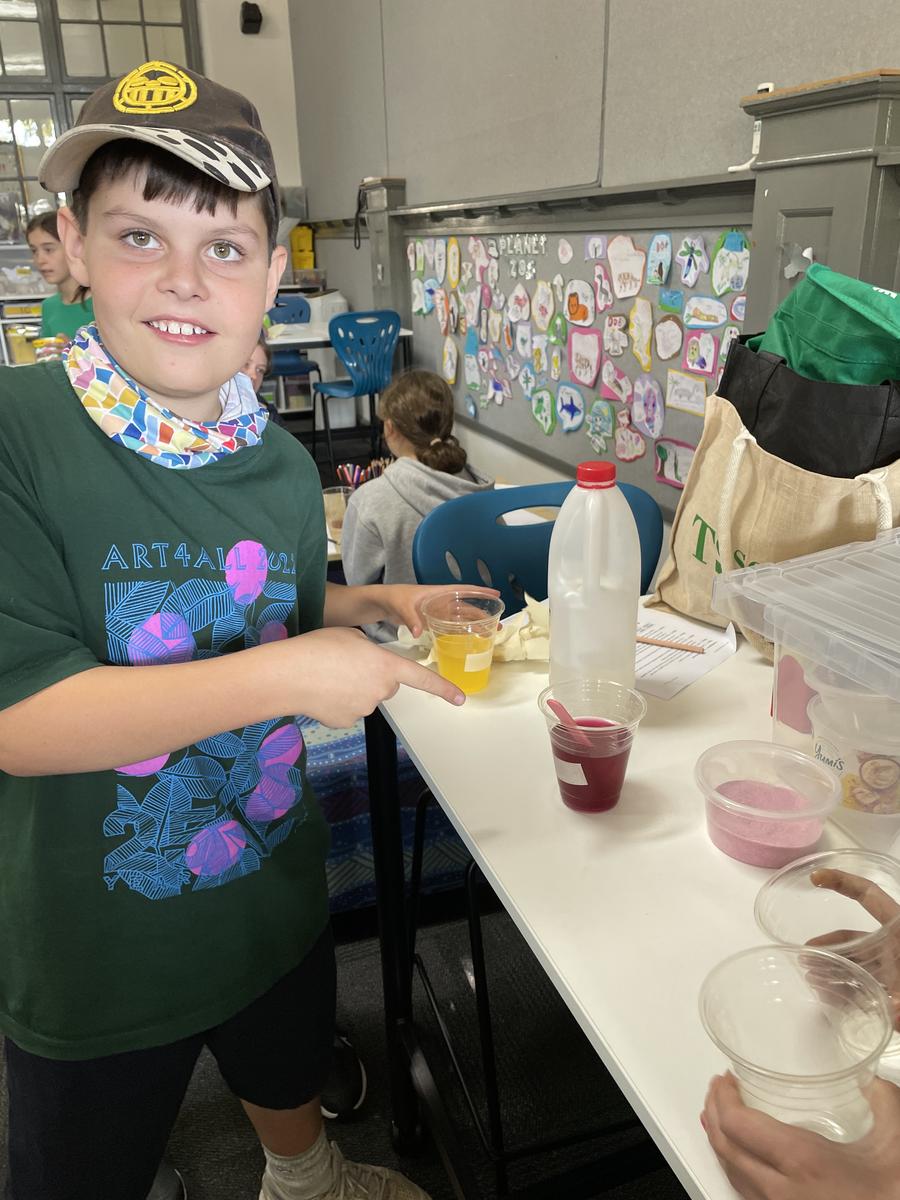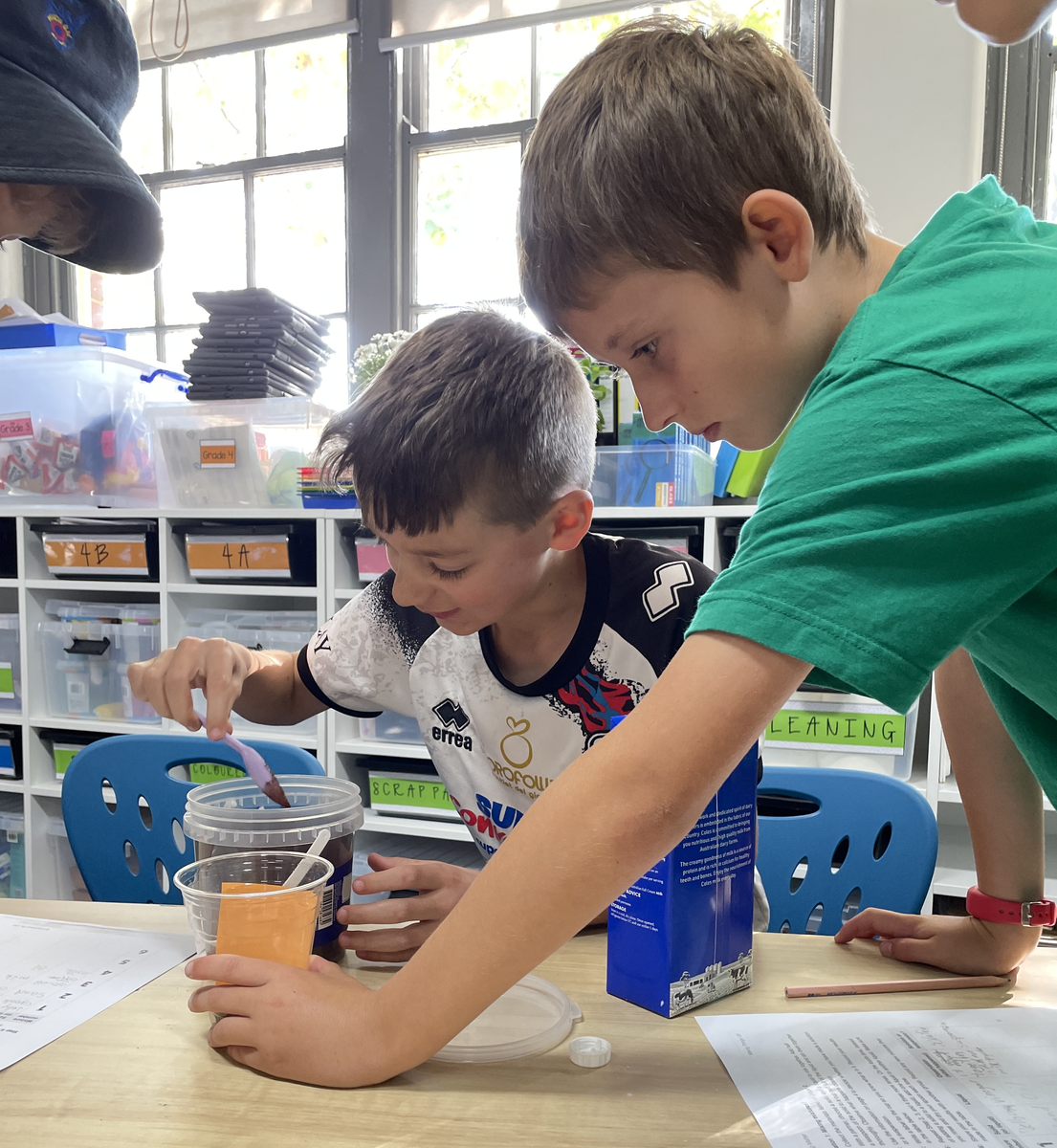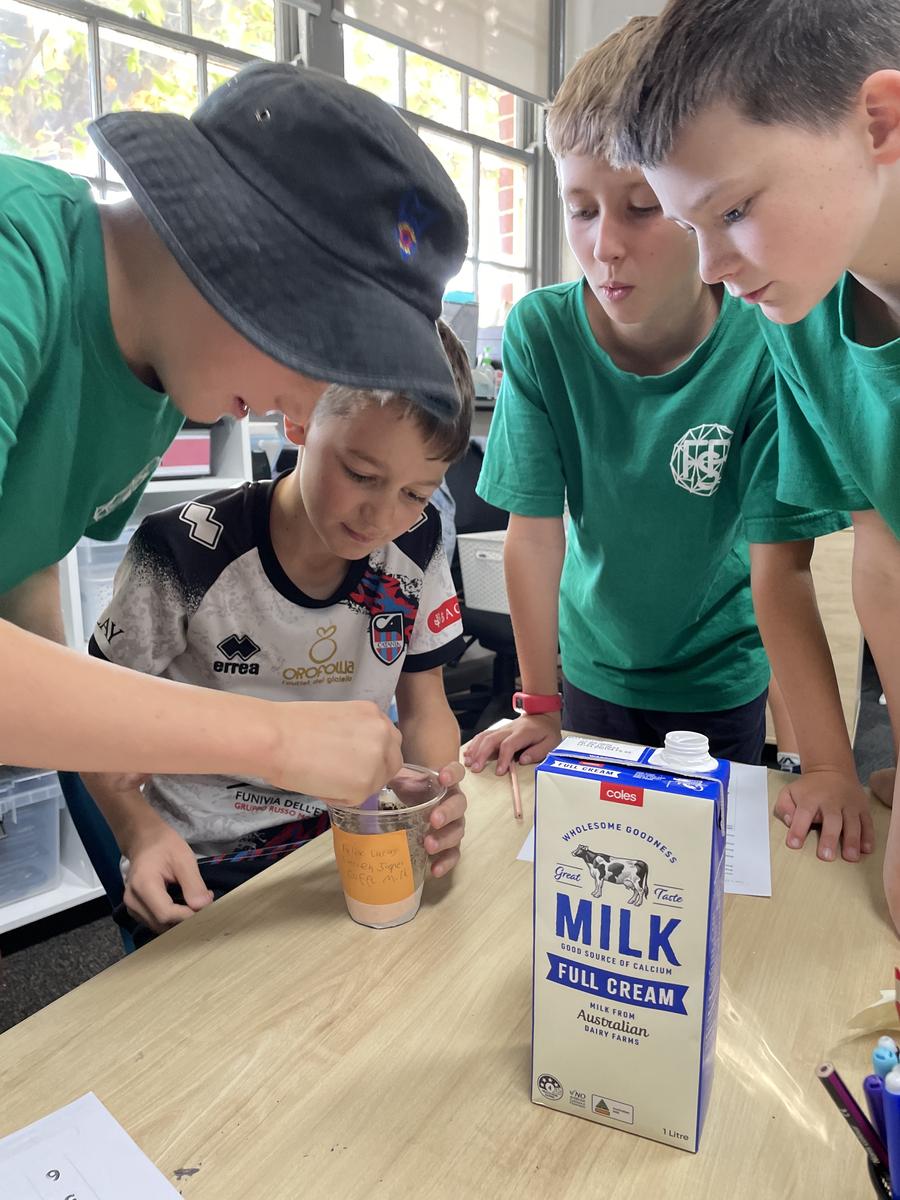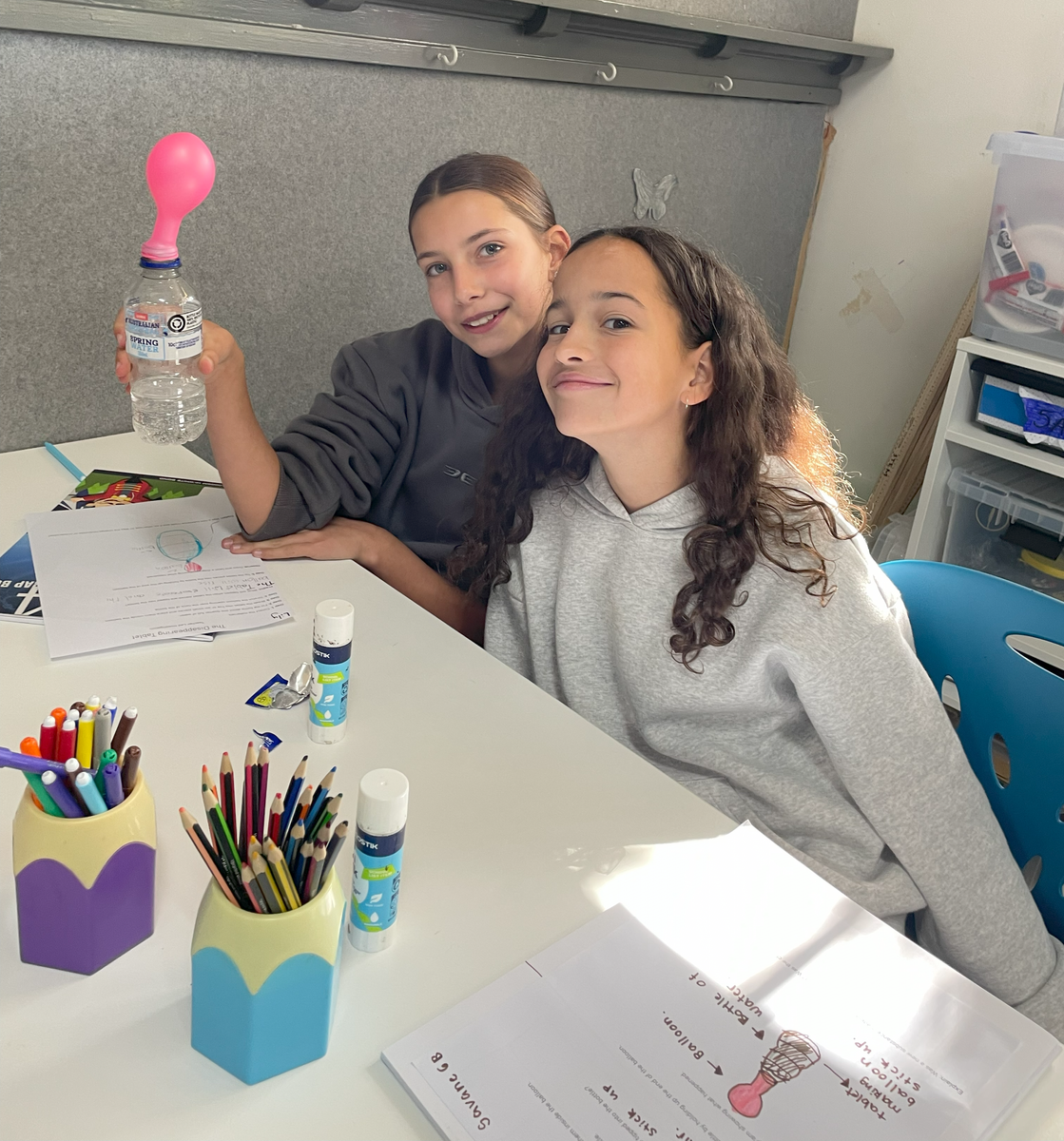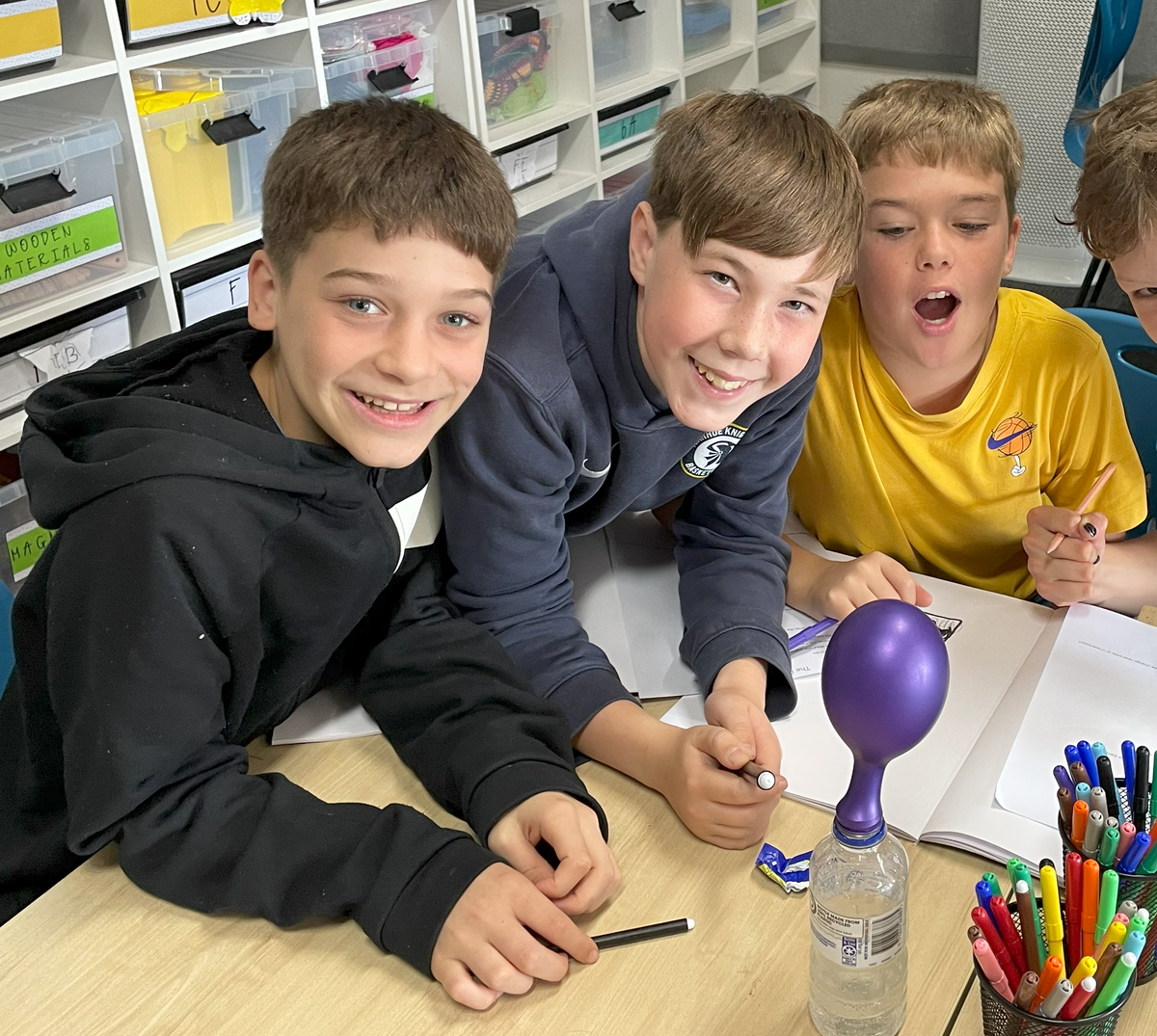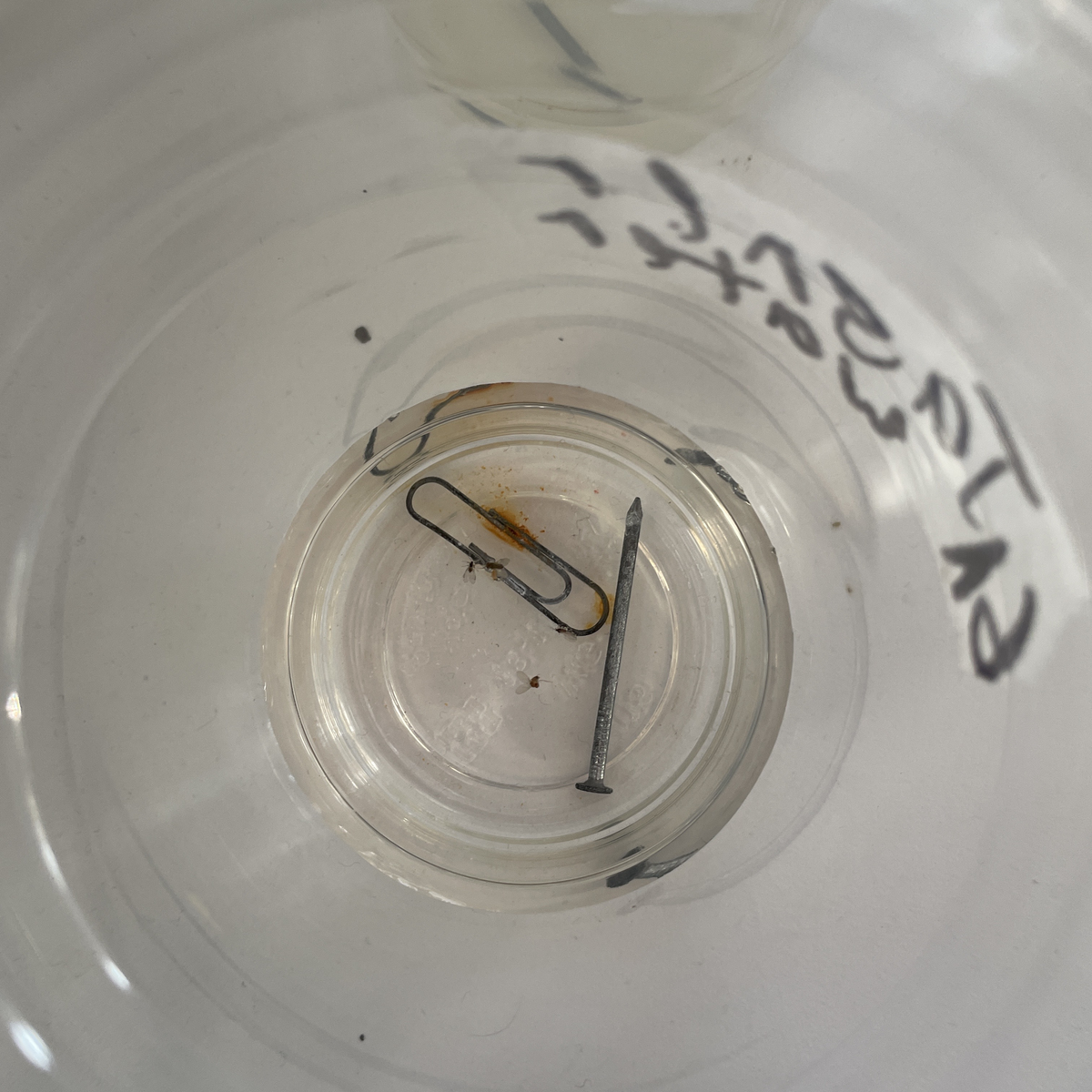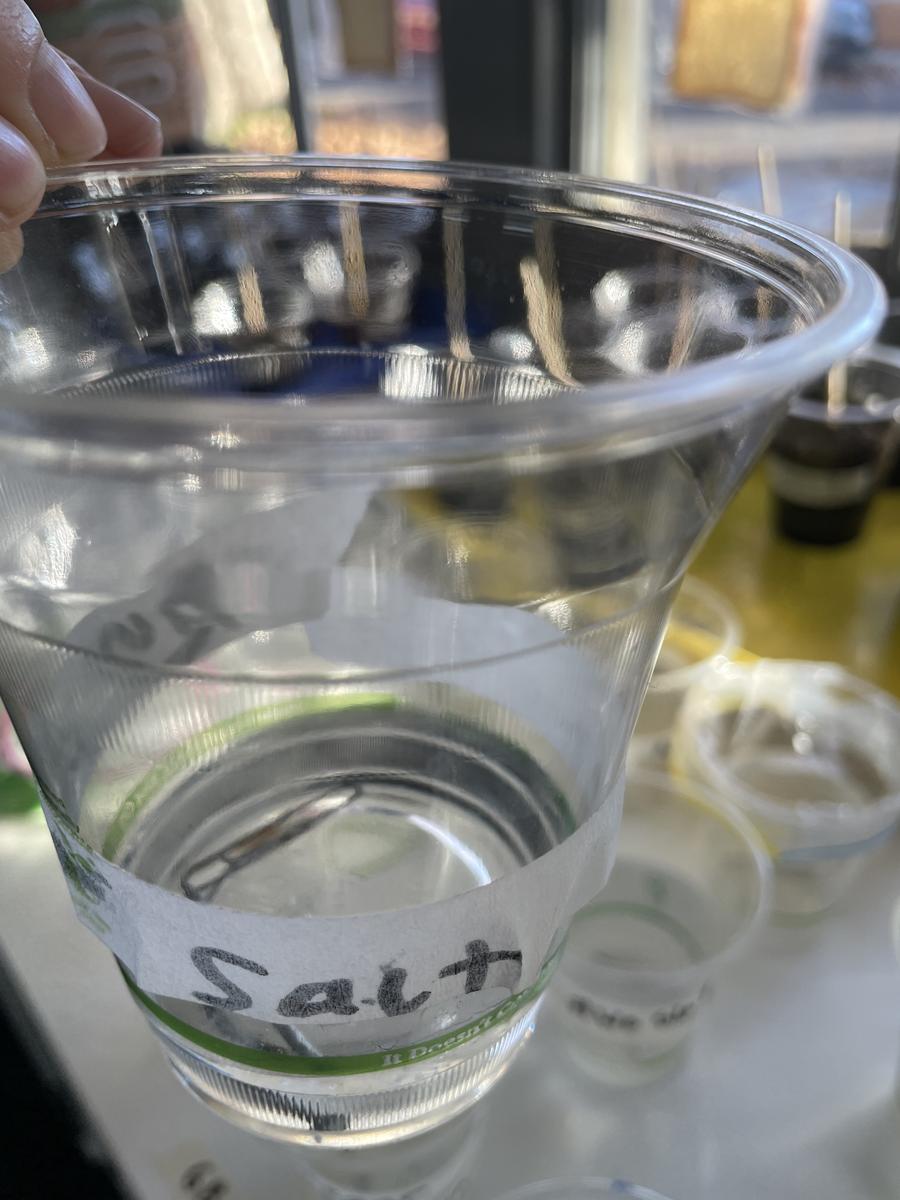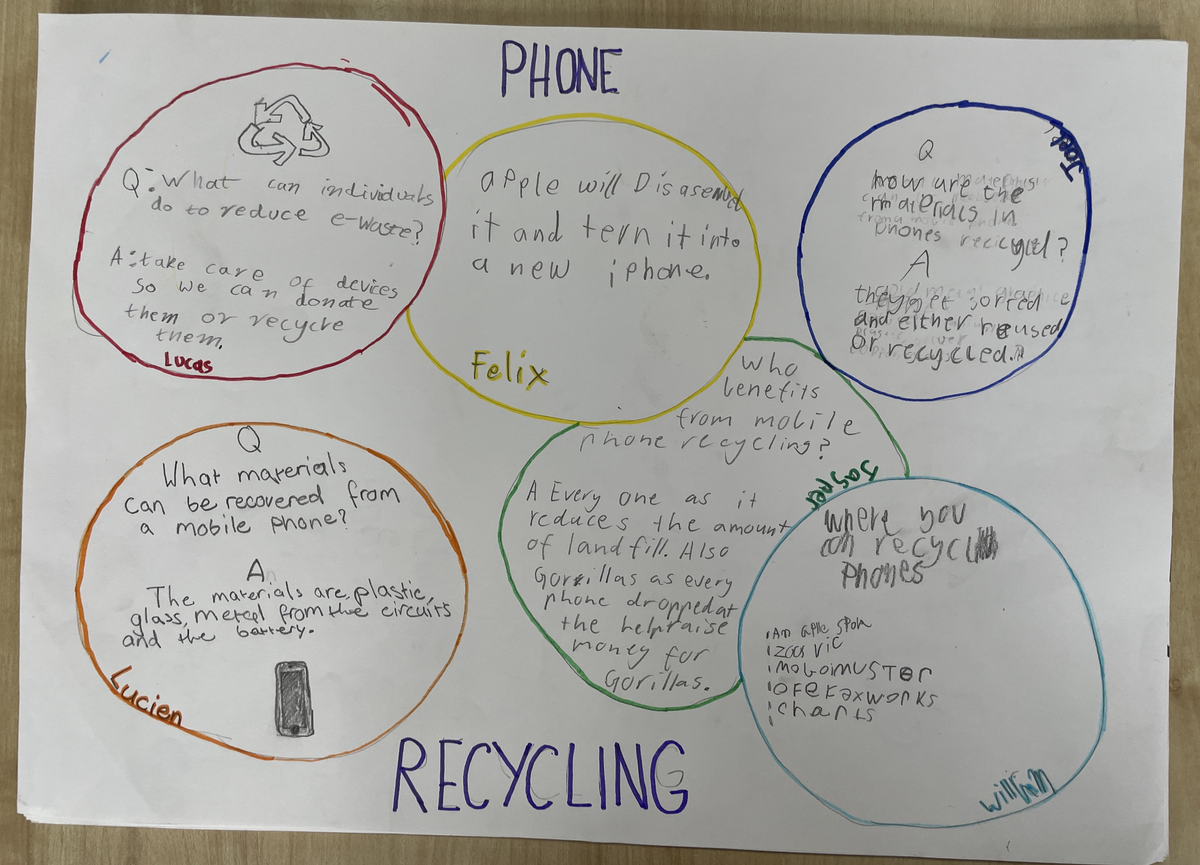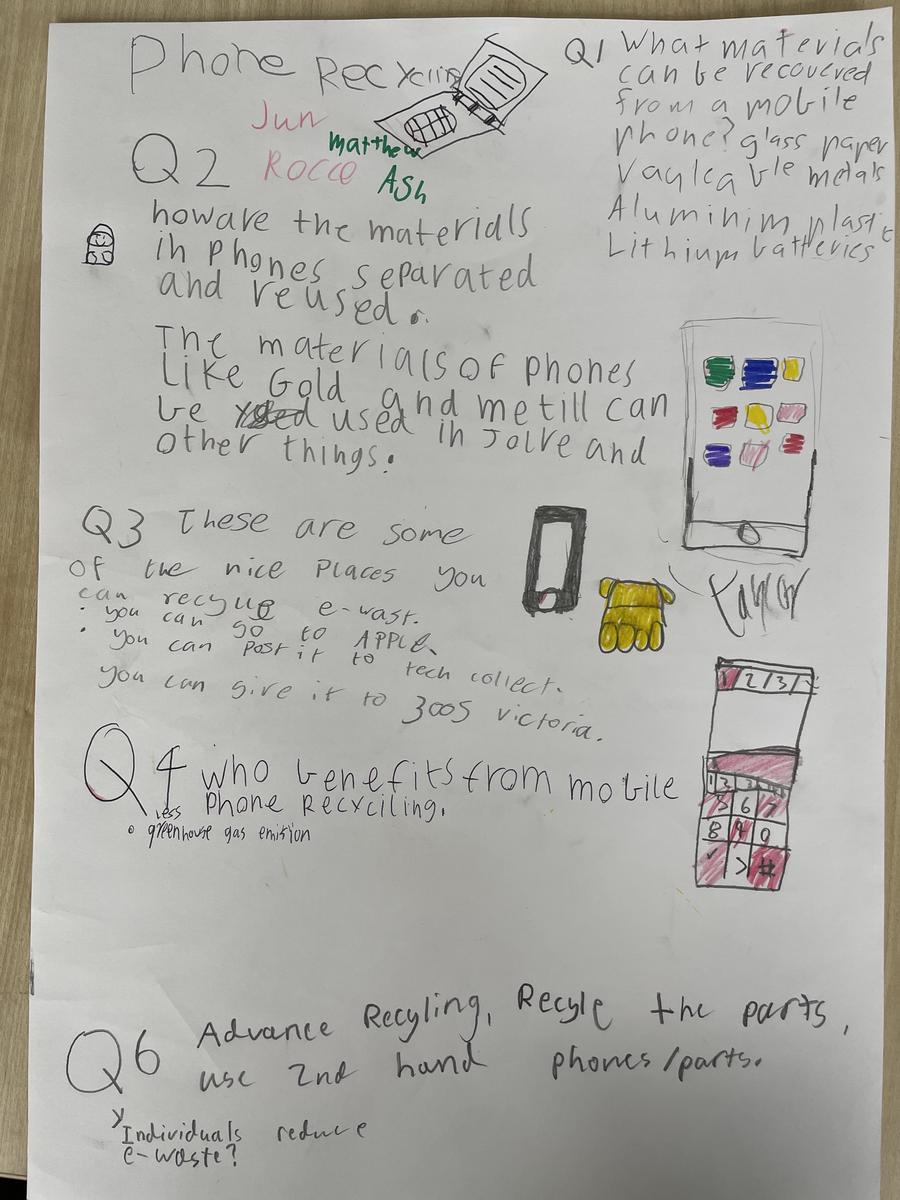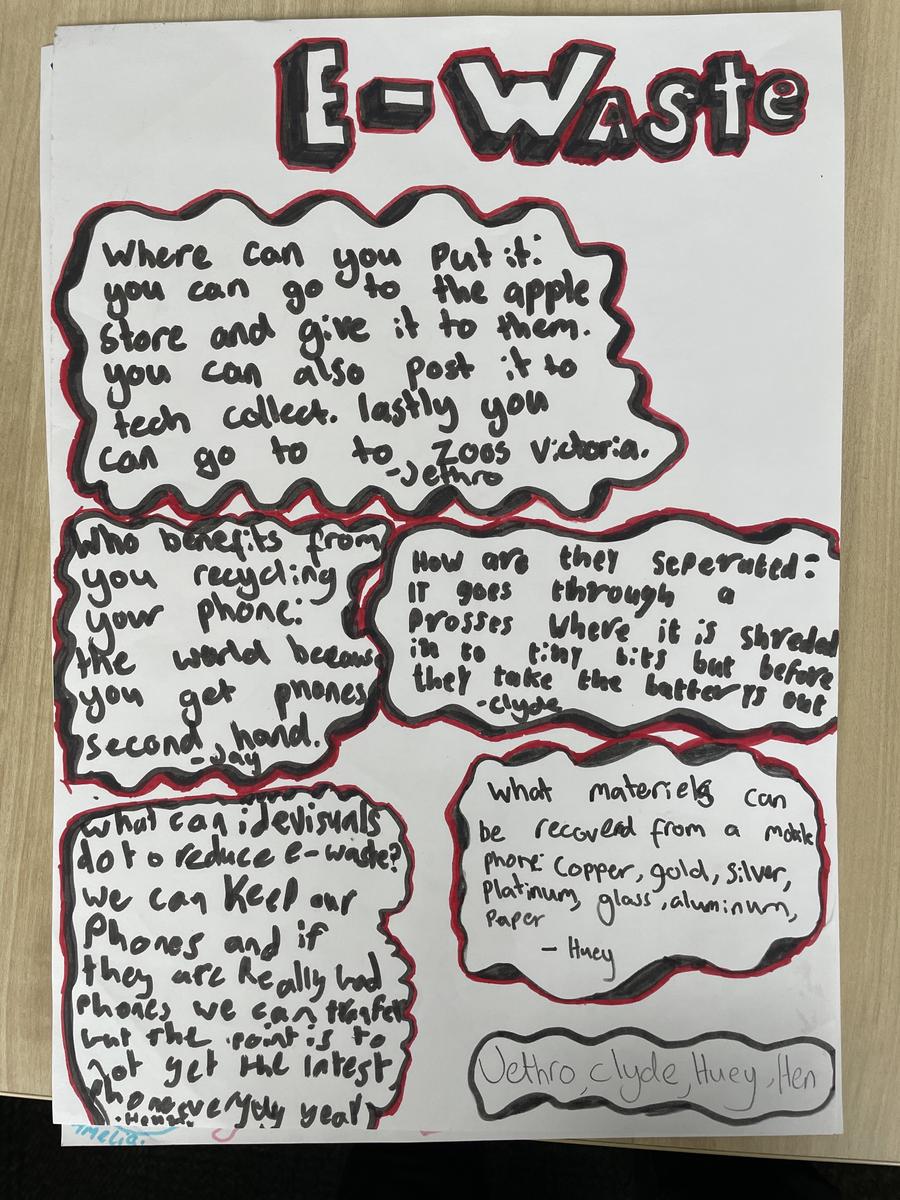Focus on Science
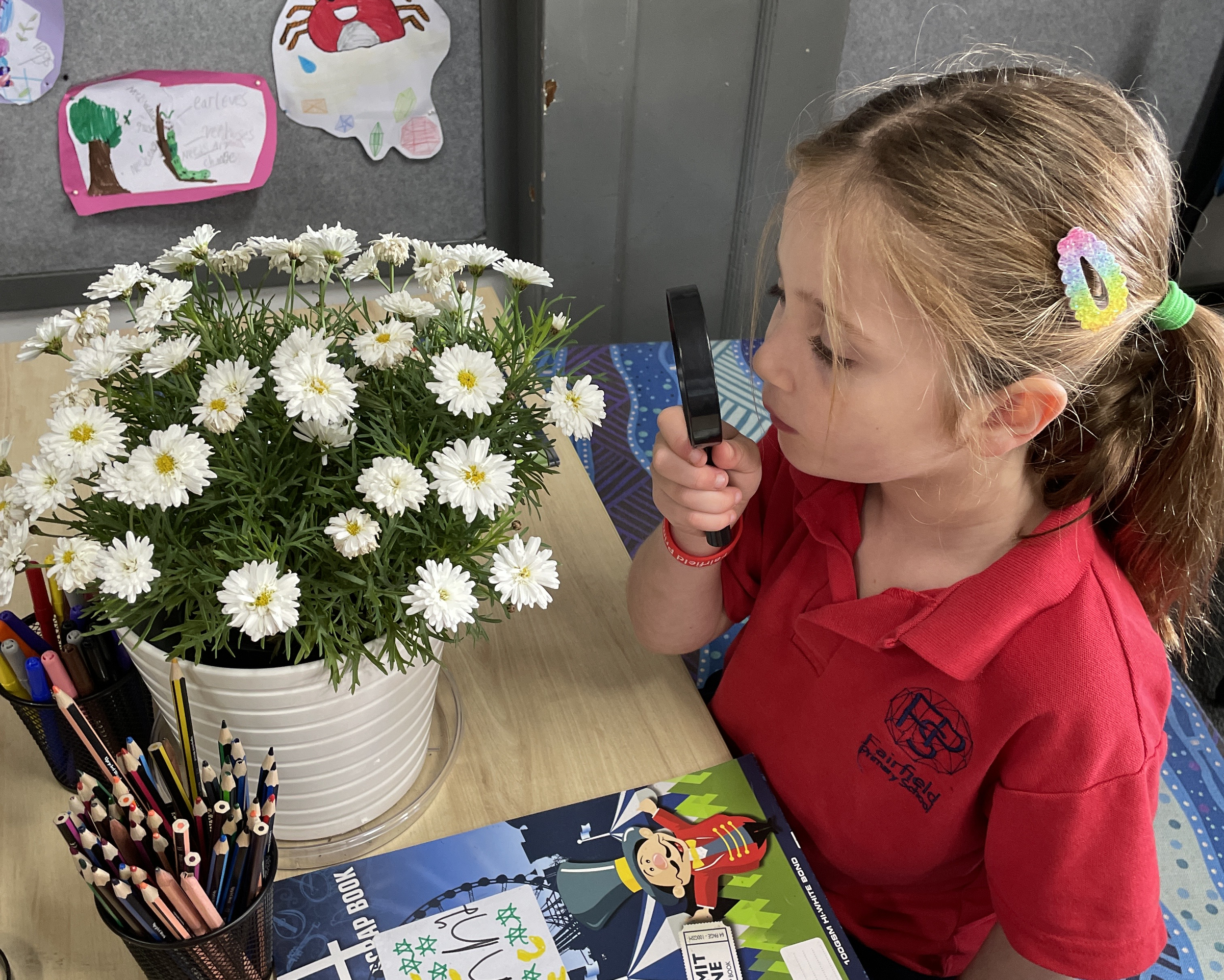
Term 2 in the Science Classroom!
Foundation
Our Foundation students continued their work on the fascinating world of material science! They kicked off their investigations by testing three different materials to determine the best one for making a raincoat. Using pipettes, they carefully dropped water on their characters dressed in various materials, eagerly observing which kept their little figures the driest.
The excitement didn't stop there! The students then immersed themselves in the classic tale of the "Three Little Pigs," discussing which material would be the sturdiest for building a house. Forming creative teams, they designed and carefully constructed their own houses using their chosen materials. The grand finale? A thrilling test by a visit from the "big bad wolf," who put their houses to the ultimate challenge.
Grade 1
Our Grade 1 students continued their exciting journey to explore the fascinating features of living things! Armed with magnifying glasses, they examined real plants up close and created labelled diagrams of their findings. The adventure continued with an ongoing experiment inspired by "Jack and the Beanstalk." They planted beans in soil and eagerly tracked their growth each week, wondering if their plants would reach the heights of the magical beanstalk.
Their curiosity then turned to the animal kingdom, where they learned how animals can be grouped by features like fur, scales, tails, and fins. Using zoos as inspiration, the students worked in teams to design their own imaginative zoos, thoughtfully organising animals by their unique characteristics.
As the term progressed, they delved into the question of why animals have homes. Through the story of a clownfish, they discovered that animal homes provide essential benefits, including shelter, food, and safety for their families. They also learned how people can help animals find food and safe habitats. One fascinating discovery was how the different shapes of bird beaks are perfectly designed for eating specific foods. Inspired by this, the students designed their own bird feeders to support local birds in finding food.
Grade 2
Our Grade 2 students have been busy continuing their exploration of the wonders of chemical science, diving into how materials can be combined and transformed! They embarked on a hands-on journey to make playdough, observing the fascinating changes at each step. As we mixed flour, salt, and cream of tartar, they discovered that once combined, these ingredients couldn't be separated again.
Drawing inspiration from Aboriginal and Torres Strait Islander Peoples, the students learned how different materials can be combined to create useful utensils. Using sticks, stones, shells, raffia, and blu tack as a resin substitute, they designed and crafted their own unique tools.
Their curiosity led them to investigate the materials used in face masks. They carefully dissected a mask to examine its layers, discussing the purpose of each one. The exploration continued with an intriguing look at how adding heat can change materials, comparing cooked and uncooked pasta to understand the transformative power of heat.
Grade 3
Our Grade 3 students continued their captivating work into the world of biological sciences, exploring the life cycles of living things! They began by comparing the life cycles of various animals, including lions, dogs, pandas, gorillas, butterflies, frogs, and humans. The students marvelled at the unique stages each creature goes through from birth to adulthood, finding metamorphosis particularly fascinating.
Shifting their focus to plants, they discovered the many clever ways seeds disperse. They crafted models of maple seeds or their own inventive designs and tested their dispersal methods, watching their creations twirl and glide.
The exploration didn't stop there! The students conducted experiments to understand how living things depend on natural features of the environment to survive. They tested stones, sand, and leaves to find the best water filter, discussing how they can keep their experiment fair.
Wrapping up their adventure, the students investigated what living things need to survive by creating their own food chains. They learned about the intricate connections between consumers, and producers, gaining a deeper appreciation for the delicate balance of ecosystems.
Grade 4
In a whirlwind of discovery, our Grade 4 students continued their journey through the world of materials, distinguishing between natural wonders and crafted innovations. Armed with keen senses, they explored the unique properties of various objects, uncovering how these traits influence practical applications. Their creativity soared as they repurposed everyday items into ingenious new products.
Delving deeper, they investigated elastic materials, marvelling at how these substances bounce back after being stretched or squeezed. Their quest reached new heights as they competed to determine which sports ball boasted the ultimate bounce. With roles assigned and cameras rolling, they collaborated enthusiastically, blending science and teamwork in their pursuit of knowledge.
Channelling their inner designers, engineers, artists, they tackled a challenging design brief. Their mission? To craft a toy boasting both creativity and functionality. With meticulous attention to detail, they adhered to strict design criteria, ensuring their creations featured elastic properties, utilised appropriate materials, and prioritised safety.
Grade 5
Our Grade 5s continued their exploration of biological science, investigating how physical conditions dictate the survival of all living things. They studied extremophiles (an organism that can live in extreme environments) and investigated both mild and extreme environments to understand their physical conditions and the organisms that thrive there. Through an interactive game, students learned about bacteria habitats and ideal conditions. They furthered their exploration by examining how different types of water affect plant growth, conducting experiments with plain water, organic water, salty water, and acidic water to grow radish seeds. Observations over one, two, and three weeks showed that plain water yielded the best results.
They also explored Aboriginal Peoples’ traditional knowledge of optimal conditions for cool burning through a concept map detailing Who, What, Where, Why, and How.
A highlight of the term was the Fungi Experiment, where students placed clean pieces of bread in Ziplock bags and chose locations—some sunny and warm, others dark and cool—to observe mould growth. Predictions generally aligned with results, with the breads in very dark, cold spots faring the worst. Some students also experimented with dampening the bread to see if it accelerated mould growth.
Grade 6
Our Grade 6 students continued their investigation, diving deeper into the study of states of matter. They kicked off with a fascinating experiment on condensation, where they observed how a mix of ice and salt in a jar caused water vapour from the air to cool and condense into liquid water.
They then turned their attention to mixing substances, experimenting with various combinations to see if they formed suspensions or solutions. To make their learning more interactive, they tested their mixtures to see if they could be separated through filtration.
Building on these lessons, the students investigated reversible and irreversible changes. Highlights included the ever-popular slime-making activity and observing the rusting process of nails and paperclips. To everyone's surprise, after just one week, some of the nails and paperclips had already started to show signs of rust when exposed to different substances.
To wrap up their unit, students researched the importance of separating and recycling e-Waste, focusing specifically on the materials used in mobile phones. They were shocked to learn that while 90% of a mobile phone can be recycled, only 10% of mobile phones in Australia actually are. This eye-opening discovery inspired them to create informative posters to spread awareness about the need for proper e-Waste recycling.
Science Week: 10 – 18 August
Science Week is fast approaching! The week beginning Monday 12 August, our school will celebrate Science Week by participating in classroom activities linked to this year's theme of ‘Species Survival’!
We also encourage students to bring in their favourite science-related book from home to share with their class! Download your own copy of the Species Survival Poster.
What’s Next!
In semester two, Foundation, Grade 2, Grade 4 and Grade 6 are all looking at Physical Sciences, while Grade 1, Grade 3 and Grade 5 are looking at Earth and Space Sciences.
I can’t wait to share what our amazing students get up to this semester!
~ Mariah Moshis, Science Teacher

